
ANNUAL REPORT
2022

Mrs. PHORK Hoeurng
Owner of Golden Yem
Enterprise
Annual Interest Rate from
5.50%
Entrepreneurs Scheme
(CWES)
Cambodia Women
Annual Interest Rate from
5.88%
Automation Scheme
(CDAS)
Cambodia Digital &
Mr. Song Khenglean
Owner of CSL Enterprise
Annual Interest Rate from
5.88%
SME Scheme (CSS)
Cambodia
Annual Interest Rate from
7.50%
Enterprise Scheme
(Unsecured Loan)
(CMES)
Cambodia Micro

Mrs. PHORK Hoeurng
Owner of Golden Yem
Enterprise
Annual Interest Rate from
5.50%
Entrepreneurs Scheme
(CWES)
Cambodia Women
Annual Interest Rate from
5.88%
Automation Scheme
(CDAS)
Cambodia Digital &
Mr. Song Khenglean
Owner of CSL Enterprise
Annual Interest Rate from
5.88%
SME Scheme (CSS)
Cambodia
Annual Interest Rate from
7.50%
Enterprise Scheme
(Unsecured Loan)
(CMES)
Cambodia Micro
The Best Partner Bank for Small and
Medium Enterprises in Cambodia

About SME Bank
Message from Chairman................................6
Message from CEO ..........................................8
About SME Bank ............................................10
Achievement Report in 2022 .................... 12
Branch Networks ............................................ 13
Corporate Milestones ................................... 14
Cash Management Partner ......................... 16
Partnerships ......................................................17
CONTENTS

Events
Annual Meeting 2022 .................................. 24
Employee Recognition
Program 2022 ................................................ 25
Key Highlights ................................................ 26
Memorandum of Understanding
(MoU) with Participating Financial
Institutions ....................................................... 30
Financial Statements
Financial Statements ................................... 47
Corporate Governance
Organizational Structure ............................. 31
The Board of Directors ............................... 34
Senior Management ..................................... 37
Corporate Governance ............................... 39
Board of Directors Meeting ......................40
Board Risk and Compliance
Committee .................................................. 41
Board Audit Committee ............................44
Board of Remuneration and
Nomination Committee (BRNC) .............46
Business Highlight
Co-Financing Scheme ................................. 19
The Direct Lending Scheme ...................... 21
Voice from Customers .................................22

MESSAGE FROM CHAIRMAN
SME Bank is a policy bank
established under the
wise leadership of Samdech
Akka Moha Sena Padei
Techo Hun Sen, Prime
Minister of the Kingdom of
Cambodia, to support
small and medium enterprises
aected by COVID-19 and
newly-established enterprises
in need of financial and
technical support.
6
Annual Report 2022 About SME Bank
SME Bank of Cambodia

On behalf of SME Bank of Cambodia (SME Bank) and
the Board of Directors, I am honored and pleased to
provide you with the bank’s annual report for fiscal
year 2022.
The growth of the global economy and trade remains
at a slow pace despite the decrease in the COVID-19
spread. However, the war between Russia and Ukraine
has prolonged, resulting in adverse impacts on the
economy of the United States, European Union, and
Southeast Asian countries.
The Cambodian economy began to recover in 2021
due to the support of various sectors; however,
Cambodia is still facing a lot of obstacles in restoring
its economy. Many SMEs have not been properly
operated since some owners have had insucient
budget, resources, supporting products, capital and
have faced an inflation. In this situation, the Royal
Government of Cambodia has set out a number of
policies and strategies to restore all sectors, such as
the Cambodia Digital Economy and Society Policy
Framework 2021-2035, the strategic framework and
programs for economic recovery in the context of
living with COVID-19 in a new normal for 2021-2023.
SME Bank is a policy bank established under the wise
leadership of Samdech Akka Moha Sena Padei Techo
Hun Sen, Prime Minister of the Kingdom of Cambodia,
to support small and medium enterprises aected by
COVID-19 and newly established enterprises, which
need financial and technical support. The Bank has
launched a number of financing schemes to support
small and medium enterprises to meet their needs by
oering favourable terms and low interest rates. As
of the end of 2022, SME Bank has financed 231 small
and medium enterprises (SMEs) through the direct
financing, including 62 female entrepreneurs and 169
male entrepreneurs with a total loan amount of
approximately USD 53.4 million and the loaning
through Co-Financing with participating financial
institutions, supporting a total of 3,037 enterprises,
equivalent to a total amount of approximately USD
380 million.
In line with the policies and programs for economic
recovery and to promote Cambodia’s economic
growth in living with COVID-19 in the new normal for
2021-2023 of the Royal Government of Cambodia,
SME Bank continues to implement and strive to
promote the growth of all small and medium
enterprises to contribute to the sustainable economic
growth.
As the Chairman of the Board, I am very pleased to
sincerely thank the relevant authorities for their tireless
eorts to support the Bank’s growth and development.
I also would like to sincerely thank our valued
customers for their trust in SME Bank, even during
the global epidemic. We are committed to being a
trusted partner and continue to finance all enterprises
that are still in need of finance to grow their businesses.
H.E. Dr. Phan Phalla
Secretary of State, Ministry of Economy and
Finance, and Chairman of the Board
7
Annual Report 2022About SME Bank
SME Bank of Cambodia

MESSAGE FROM CEO
Dear our valued customers and the public
Although the world has suered from the epidemics
and crisis that have caused adverse impacts on the
global and Cambodian economy, Small and Medium
Enterprise Bank of Cambodia Plc. (“SME Bank”)
continues its mission to support the growth and
development of small and medium enterprises in
Cambodia. SME Bank remains committed to providing
eective and ecient financing to business owners
who support the priority sectors to contribute to the
restoration and development of the Cambodian
economy in line with the strategic framework and the
programs for economic recovery and to promote
Cambodia’s economic growth in living with COVID-19
in the new normal for 2021-2023.
Since 2022, SME Bank has continued focusing on
widely expanding its distribution networks, such as:
(1). The Bank has relocated its head oce to the
SME Bank remains committed to
providing eective and ecient
financing to business owners
who support the priority sectors
to contribute to the restoration
and development of the
Cambodian economy in line with
the strategic framework and the
programs for economic recovery
and to promote Cambodia’s
economic growth in living with
COVID-19 in the new normal for
2021-2023.
8
Annual Report 2022 About SME Bank
SME Bank of Cambodia

“Business Development Centre” building of the
Ministry of Economy and Finance, which is more
spacious and has multiple institutions to support
entrepreneurs technically and financially, and develop
human resources, (2). SME Bank has ocially operated
two new branches, including Phsar Thmei Branch and
Battambang Provincial Branch, to ensure convenience
for small and medium enterprise owners who need
financial support, (3). SME Bank has also further
developed a number of business partners, including
business incubation associations, commercial banks,
payment services providers, financial technology
companies, as well as local and international public
institutions to expand the scope of services and move
it closer to the target customers. Furthermore, SME
Bank has set out a specific plan for the modernization
of information technology systems and the
development of digital platform infrastructures to
improve the customer service experiences more
eectively and eciently in line with the Cambodia
Digital Economy and Society Policy Framework 2021-
2035.
To accelerate the financing, SME Bank has revised
the definition of small and medium enterprises to suit
current socio-economic development and has
increased the maximum loan amount from USD
500,000 to USD 1,000,000 per customer. Furthermore,
SME Bank has launched unsecured financing and
overdraft schemes that oer additional options for
target enterprises in accordance with their objectives
and types of businesses.
As of 2022, SME Bank has achieved total assets of
USD 281 million, representing an increase of USD 131
million from 2021, in which the total loan balance is
USD 214 million. Meanwhile, in September 2022, SME
Bank successfully completed the second phase of the
SME Co-Financing Scheme, supporting a total of 1,992
enterprises, equivalent to a total of USD 240 million
(USD 120 million from the Royal Government of
Cambodia through the Ministry of Economy and
Finance and SME Bank, and the other USD 120 million
from participating financial institutions). Furthermore,
SME Bank has developed and launched a Co-Financing
Scheme to support and boost the recovery of the
tourism sector with a total amount of USD 150 million
(USD 75 million from the Royal Government of
Cambodia through the Ministry of Economy and
Finance and SME Bank, and the other USD 75 million
from participating financial institutions). As of
December 2022, there were a total of 291 enterprises,
using a total financing of USD 41.52 million, equivalent
to 27.68% of the total budget.
The major strategic plans for the following year
include: (1). Improve and develop products and
services to meet the needs of target customers, (2).
Continue to develop distribution networks such as
branches, business partners, the development of
digital platform technology infrastructures, which is
an extensive connection point and gets closer to the
target customers, (3). Develop human resources with
sucient knowledge and skills that ensure the work
eciency and transparency, and (4). Establish a better
risk management system and culture.
All these achievements are made with the financial
and technical support from the Ministry of Economy
and Finance, as well as the cooperation of the
competent authorities, in particular the National Bank
of Cambodia, which is the supervisory institution.
Furthermore, I would like to express my sincere
gratitude to our valued customers, Board of Directors,
management and employees, as well as our business
partners for always supporting SME Bank to achieve
the results in accordance with the plans, particularly
in 2022.
DR. LIM AUN
Chief Executive Ocer
and Board Member
9
Annual Report 2022About SME Bank
SME Bank of Cambodia
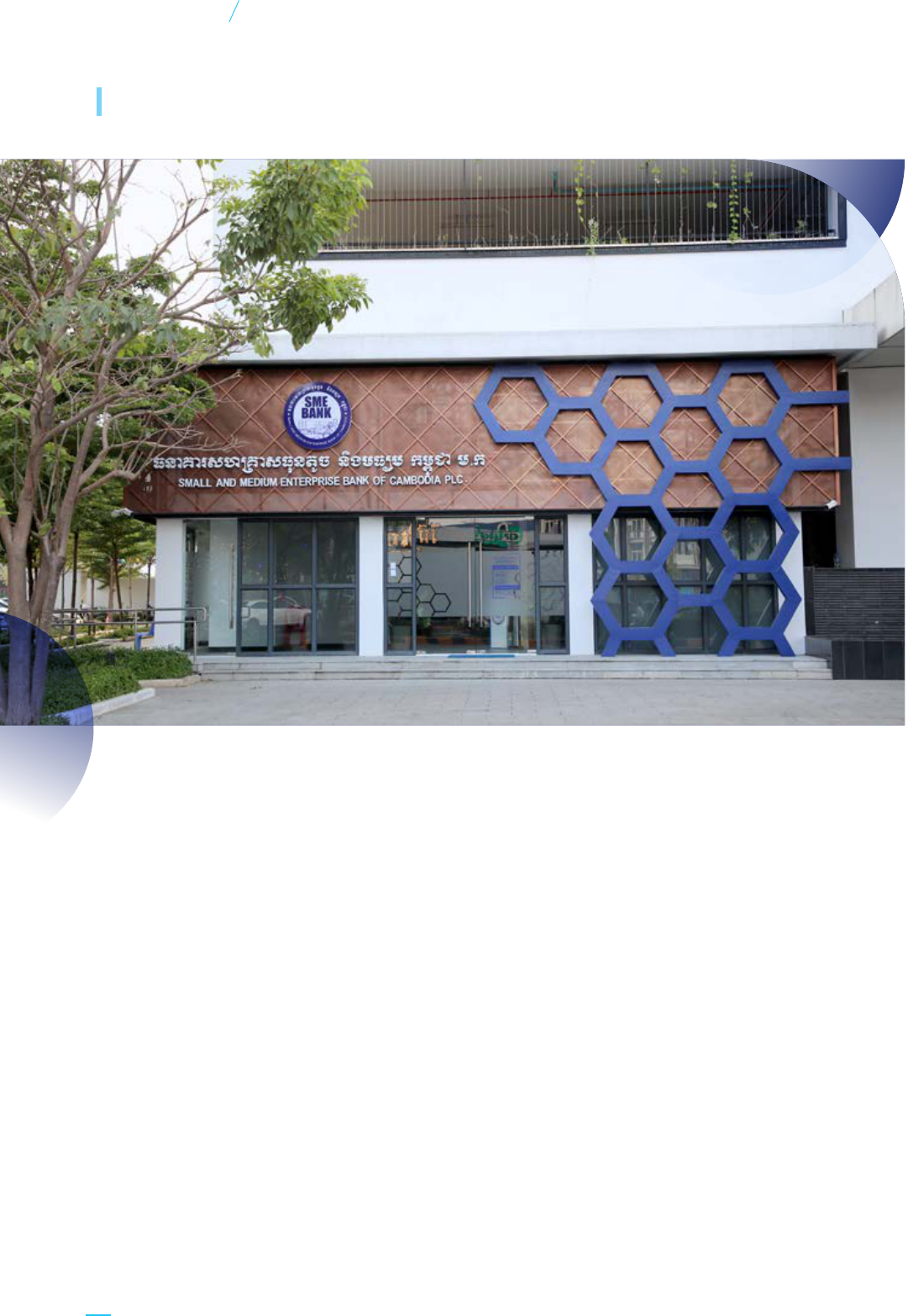
SME Bank has been established in the Cambodian
market for almost three years and was recognized
as the policy bank which provides aordable financial
services to SMEs in Cambodia by focusing on the
priority sectors including food processing,
manufacturing of consumer goods and spare parts,
research and development in information and
technology, manufacturing of medical equipment
and medicines, and other business supporting the
priority sectors. Currently, SME Bank of Cambodia is
focusing on implementing Co—Financing Schemes
with participating financial institutions (PFIs) and
direct lending schemes.
Small and Medium Enterprises (SMEs) are the vital
driver for economic growth in developing countries
like Cambodia. However, some SMEs are facing some
challenges accessing aordable financial services
due to collateral requirements and higher interest
rates. To better support this segment, the Royal
Government of Cambodia has established the SME
Bank of Cambodia (SME Bank).
SME Bank was ocially licensed as a commercial
bank by the National Bank of Cambodia (NBC) on
the 27th February 2020. With the technical and
financial guidance of the Ministry of Economy and
Finance (MEF), the bank’s strategic intent and
direction are coherent with the policies set by The
Royal Government of Cambodia, assuring reliable
and sustainable banking to all small and medium
enterprises.
ABOUT SME BANK
10
Annual Report 2022 About SME Bank
SME Bank of Cambodia

CORE VALUES
We will ingrain integrity
in our DNA to ensure a high
level of trust and reputation
in our business.
INTEGRITY
We consider all employees
as our core asset and will
respect, value and actively
engage them in all our
business dealings.
PEOPLE
We will be professional by
being accountable to all our
stakeholders and responsible in
discharging our duties.
ACCOUNTABILITY
As customers are the main
purpose for our existence we will
provide excellent and consistent
customer experience.
CUSTOMER
We strive for operational
excellence to ensure profitability,
growth and sustainability for all
our stakeholders.
EFFICIENCY
MISSION
VISION
To be the Best and Preferred
SME Bank in Cambodia, providing
aordable financing, easy
accessibility, technical support and
excellent customer experience.
To provide ecient and
sustainable financing and
commercial banking services
to support SMEs to promote
economic diversification
and exports in line with
government policy.
Annual Report 2022About SME
11Small and Medium Enterprise Bank of Cambodia Plc.
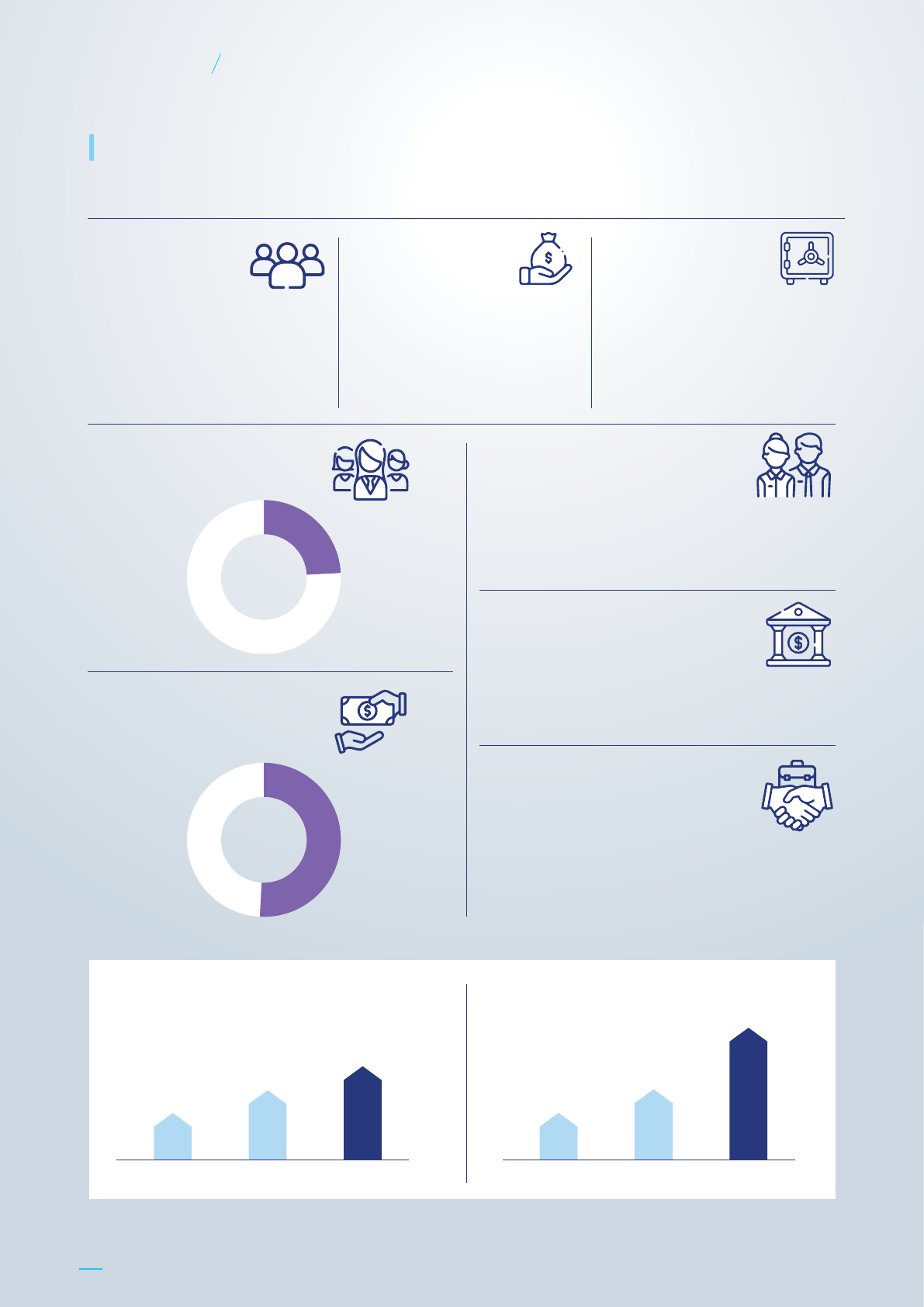
No of
Customers
Loan
Outstanding
Total Assets
No of Sta
No of Women
SMEs
Loan Outstanding in
The Priority Sectors
Branch Networks
Business Partners
+3,200
+138
3
10
+24%
+51%
Bank Equity
(in USD Millions)
Total Assets
(in USD Millions)
2020 2021 2022 2020 2021 2022
100
148
199
100
150
281
USD
+214
USD
+281
ACHIEVEMENT REPORT IN 2022
12
Annual Report 2022 About SME Bank
SME Bank of Cambodia

No 30, St. Pasteur corner
Prey Nokor Street, Sangkat Phsar
Thmei Ti Muoy, Khan Daun Penh,
Phnom Penh, Cambodia.
Phsar Thmei Branch
MEF Business
Development Center,
Ground and 20
th
Floor,
OCIC Street, Khan Chraoy
Chongvar, Phnom Penh,
Cambodia.
Head Oce
No. 161 & 162, National Road No. 5,
Group 6, Phum Rumchek 5, Sangkat
Rottanak, Krong Battambang,
Battambang Province, Cambodia.
Battambang Provincial Branch
BRANCH NETWORKS
13
Annual Report 2022About SME Bank
SME Bank of Cambodia

Obtained the Commercial Bank License
on February 27
th
, 2020
Launched the first phase of the
SME Co-Financing Scheme, with a
total amount of USD 100 million
in collaboration with 33 participating
financial institutions and completed
it in October 2020;
Launched the direct financing scheme,
including:
• Cambodia SME Scheme (CSS)
• Cambodia Digital and Automation
Scheme (CDAS)
• Cambodia Women Entrepreneurs
Scheme (CWES)
• Cambodia Recovery Support
Scheme (CRSS)
Achieved total assets of
over USD 100 million.
2020 2021
2022
“SME Bank of the
Year – Cambodia”
awarded from the Asian
Banking & Finance
Memorandum of Understanding
in promoting SMEs with the
FASMEC, KE, and BanhJi FinTech
Co., Ltd. etc.
Launched the second phase
of the SME Co-Financing
Scheme, with a total amount
of USD 240 in collaboration
with 28 participating
financial institutions and
financed 981 enterprises to
achieve total assets of
over USD 150 million.
Launched a Co-Financing Scheme to support and boost
the recovery of the tourism sector with
a total
amount of USD 150 million
in collaboration
with 24 participating financial institutions
Became a member of the Fast Payment service of the
National Bank of Cambodia to enable customers to transfer
money via the bank quickly;
Launched the Cambodia Micro Entreprise Scheme (CMES),
an Unsecured Loan;
Launched two more new branches, including Phsar Thmei
and Battambang Provincial branches;
Developed business partnerships with five additional
SME associations to promote direct lending to target
customers, including CEO Master Club of Life Education
Co., Ltd., Young Entrepreneurs Association of Cambodia
(YEAC), AgriBee (Cambodia) Plc., Cambodian Water
Supply Association, and Cambodia Food Manufacture
Association;
Achieved total asset of
over USD 281 million.
CORPORATE MILESTONES
14
Annual Report 2022 About SME Bank
SME Bank of Cambodia
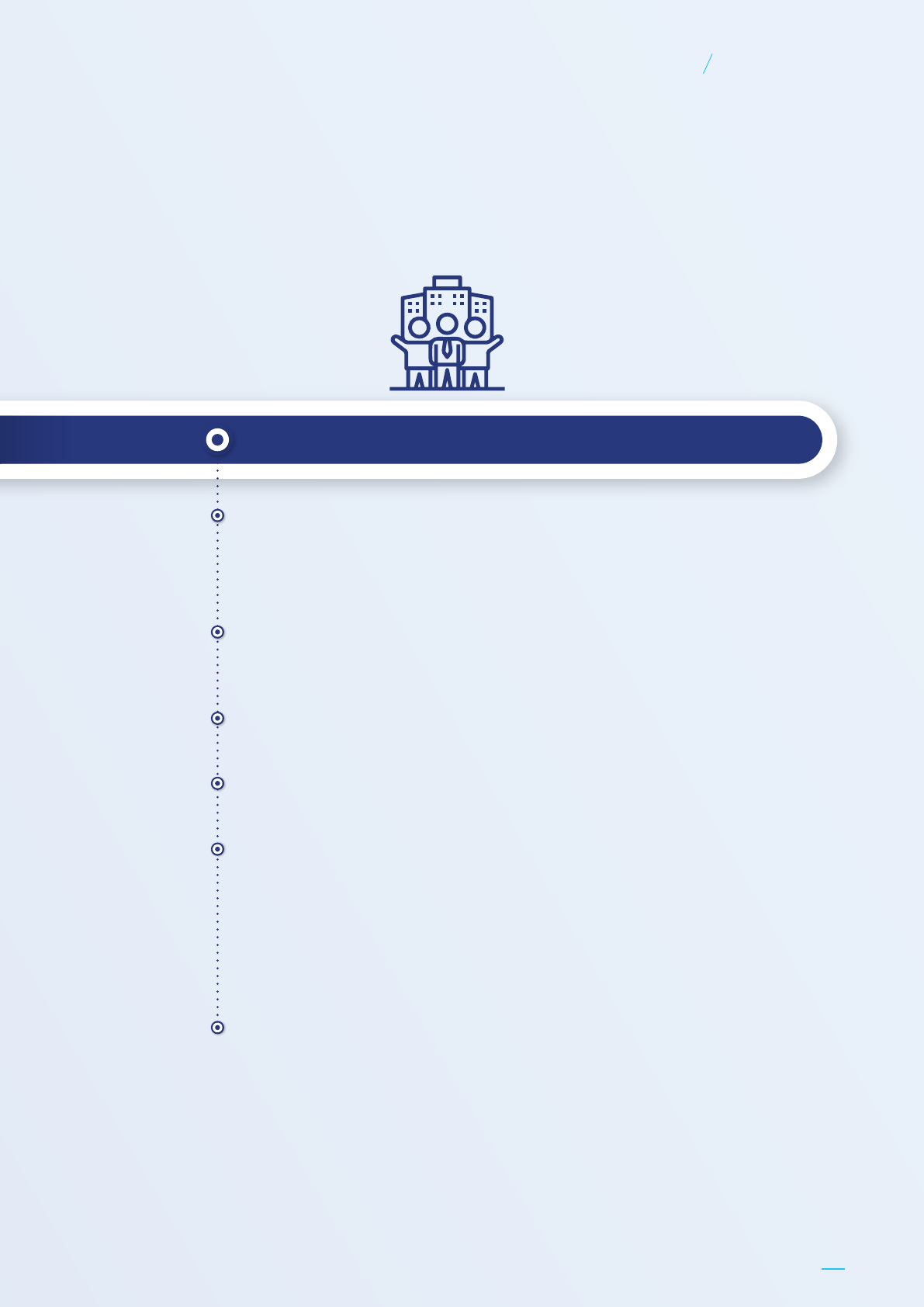
Obtained the Commercial Bank License
on February 27
th
, 2020
Launched the first phase of the
SME Co-Financing Scheme, with a
total amount of USD 100 million
in collaboration with 33 participating
financial institutions and completed
it in October 2020;
Launched the direct financing scheme,
including:
• Cambodia SME Scheme (CSS)
• Cambodia Digital and Automation
Scheme (CDAS)
• Cambodia Women Entrepreneurs
Scheme (CWES)
• Cambodia Recovery Support
Scheme (CRSS)
Achieved total assets of
over USD 100 million.
2020 2021
2022
“SME Bank of the
Year – Cambodia”
awarded from the Asian
Banking & Finance
Memorandum of Understanding
in promoting SMEs with the
FASMEC, KE, and BanhJi FinTech
Co., Ltd. etc.
Launched the second phase
of the SME Co-Financing
Scheme, with a total amount
of USD 240 in collaboration
with 28 participating
financial institutions and
financed 981 enterprises to
achieve total assets of
over USD 150 million.
Launched a Co-Financing Scheme to support and boost
the recovery of the tourism sector with
a total
amount of USD 150 million
in collaboration
with 24 participating financial institutions
Became a member of the Fast Payment service of the
National Bank of Cambodia to enable customers to transfer
money via the bank quickly;
Launched the Cambodia Micro Entreprise Scheme (CMES),
an Unsecured Loan;
Launched two more new branches, including Phsar Thmei
and Battambang Provincial branches;
Developed business partnerships with five additional
SME associations to promote direct lending to target
customers, including CEO Master Club of Life Education
Co., Ltd., Young Entrepreneurs Association of Cambodia
(YEAC), AgriBee (Cambodia) Plc., Cambodian Water
Supply Association, and Cambodia Food Manufacture
Association;
Achieved total asset of
over USD 281 million.
15
Annual Report 2022About SME Bank
SME Bank of Cambodia

SME Bank aims to promote financing to small and medium enterprises in various provinces and cities of
Cambodia. SME Bank’s branch network is currently limited and IT infrastructure is also limited and under
development its capacity. To improve the customer experience, SME Bank has engaged some financial
institutions to facilitate the bill payment through their available networks.
SME Bank has signed a Memorandum Of Understanding with ABA Bank and TrueMoney Cambodia to ocially
launch bill payment through its ABA Mobile and more than 11K TrueMoney agents across the country and the
TrueMoney Wallet. This collaboration will provide a secured and convenient financial services experience.
CASH MANAGEMENT PARTNERS
16
Annual Report 2022 About SME Bank
SME Bank of Cambodia
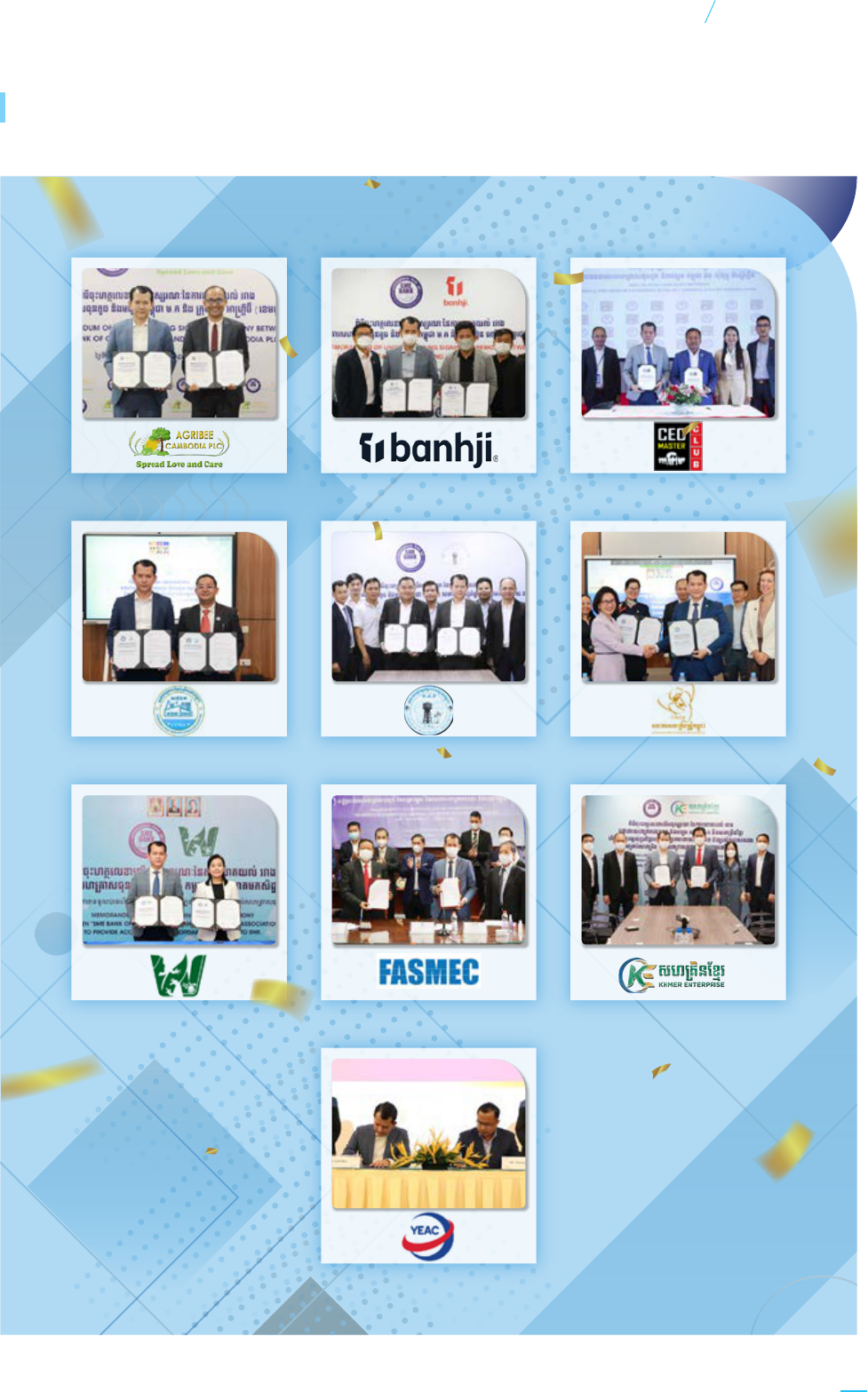
PARTNERSHIPS
17
Annual Report 2022About SME Bank
SME Bank of Cambodia

In 2022, despite the slowdown in global economic growth,
the SME Bank of Cambodia could increase loan net growth
by 93%, from USD 111 million in 2021, to USD 214 million in
2022. The loan net growth was mainly contributed by two
schemes, consisting of Co-Financing Scheme and Direct
Lending Scheme. The Co-Financing scheme increased by
58% USD 96 million in 2021, compared to USD 152 million
in 2022. Moreover, Direct Lending Scheme has a significant
growth from USD 4 million in 2021 to 53 million in 2022.
Additionally, as a bank’s aspiration to financing SME in food
processing and manufacturing, as well as other priority
sectors, SME Bank has proactively provided direct lending
loans to SME in processing and manufacturing sector for
46% of total loan outstanding in 2022 via Cambodia SME
Scheme (CSS), Cambodia Women Entrepreneur Scheme
(CWES), Cambodia Digital & Automation Scheme (CDAS),
Cambodia Micro Enterprise Scheme (CMES).
Business Highlight
18
Annual Report 2022
SME Bank of Cambodia
Business Highlight
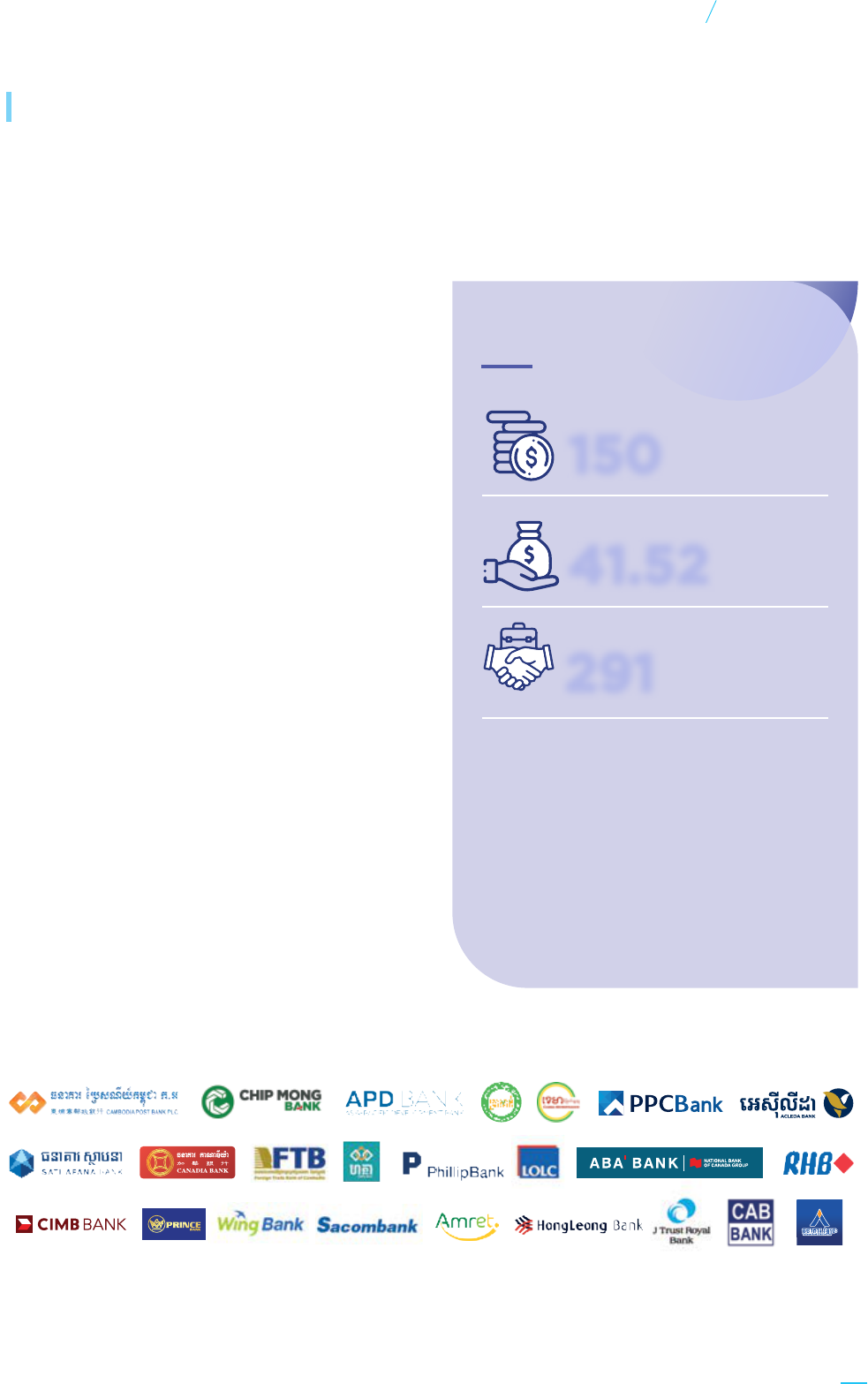
The Tourism Recovery Co-Financing Scheme (TRCS)
is a part of the support for the implementation of the
“Strategic Framework and Program for Economic
Recovery in the Context of Living with Covid-19 in a
New Normal for 2021-2023”.
To promote tourism recovery, the Royal Government
has decided to implement this scheme to address
the lack of financing support for tourism-related
businesses.
TRCS will support (a) re-operating the business, (b)
improving and modernizing, and (c) strengthening
and diversifying tourism services to prepare for
national and international tourists in the post-covid-19
crisis.
TRCS was initiated in July 2022, with a total
commitment budget of USD 150M, which co-financed
between the government of Cambodia and PFIs.
As of December 2022, 24 PFIs joint the TRCS scheme.
The scheme has been financed to about 291 enterprises
(50 hotels, 97 guesthouses, 120 restaurants, and 51
Supplies of Products and Services supporting the
tourism sector) with the disbursed amount of
approximately USD 41.52M.
Tourism Recovery Co-financing Scheme (TRCS)
Commitment Fund
Disbursed Amount
No of
Customer
Hotel Guest
House
Restuarant
in USD
Millions
in USD
Millions
150
41.52
26% 28%
Supply of Products and
Service Supporting
Tourism Sector
No of Women
SMEs
14% 43%
32%
291
Performance Update
CO-FINANCING SCHEME
19
Annual Report 2022
SME Bank of Cambodia
Business Highlight

The SME Co-Financing Scheme II (the “SCFS II”) has
assisted SMEs that have been negatively impacted
by Covid-19 to restart their businesses, aligning with
RGC’s During and Post Covid-10 Recovery Plan and
so as to contribute to the economic recovery.
SCFS II was initiated in August 2021, with a total
commitment budget of USD 240 million, which
Co-Financing between SME Bank and 32 PFIs. The
scheme was completed on the 22nd August 2022 by
providing financing to 1992 SMEs including the priority
sector at 42%, the normal sector at 58%, and female
entrepreneurs at 30%.
SME Co-financing Scheme II (SCFS II)
Commitment Fund
Disbursed Amount
No of
Customer
Priorities
Sector
Normal
Sector
No of Women
SMEs
in USD
Millions
in USD
Millions
240
239.97
42% 58% 30%
1,992
Achievement
20
Annual Report 2022
SME Bank of Cambodia
Business Highlight

SME Bank has operated according to its mission to
support the government policies, especially providing
access to finance to SMEs in the priority sector. The
bank has initiated four types of direct lending schemes
namely the Cambodia SME Scheme (CSS), the
Cambodia Women Entrepreneur Scheme (CWES),
the Cambodia Digital & Automation Scheme (CDAS),
the Cambodia Micro Enterprise Scheme (CMES) in
2021, and proactively provided financing support to
231 entrepreneurs with loan outstanding of USD 53M
as of 31st December 2022. 69% of the loan outstanding
was provided to the priority sector, and 46% of the
loan outstanding was provided to processing and
manufacturing of agricultural products.
THE DIRECT LENDING SCHEME
21
Annual Report 2022
SME Bank of Cambodia
Business Highlight

Mr. SOK Khenglean
Owner of CSL Enterprise
As a manufacturer and supplier of
packaged food made from fruits,
grains and spices in Sangkat Teuk Thla,
Khan Sen Sok, Phnom Penh
https://cslsnack.com/en/products
My enterprise started operating in 2017 with only a few products,
observing the market demand as well as the support of new food
packages and groceries by more and more customers; then in
2021, I decided to create more new products including packaged
foods made from cashew nuts, mangoes, bananas, taro and logan,
plus grocery such as mung beans, soybeans, red beans, dried
chilli, and ground peppers, etc.
To achieve this goal, it requires me to have some capital to invest,
such as buying better quality machines and working capital to
buy raw materials. As a solution, I applied for a loan from SME
Bank of Cambodia to purchase more machines and expand the
warehouse to stock raw materials.
In fact, after receiving capital from the bank, my business has
run better because the products of my enterprise can meet the
needs of customers in a timely manner with good quality. The
growth of my orders has been increasing by major supermarkets
such as Aeon Mall, Lucky Mall, Makro Market, Thai Huot Market,
Bayon Market and many depots across the country.
I am very happy and satisfied with the bank that has financed
me with the most reasonable interest rate that I have been able
to repay during the process of expanding my business.
Without the
financial support of
the SME Bank of
Cambodia,
the processing and
development of
local products or
raw materials
into value-added or
finished products
would not have been
done smoothly.
VOICE FROM CUSTOMERS
22
Annual Report 2022
SME Bank of Cambodia
Business Highlight

Initially, my business ran with only one product line which
was natural tea bag products. As I have been planning to
expand my business, I decided to create four more types of
snacks packaging by adding many different flavours to fulfil
the market demand.
Due to the lack of capital to purchase machines and equipment
for making snacks as well as natural tea, I decided to apply
for a loan from SME Bank to purchase more machines, relocate
the warehouse to a bigger place and stock more ingredients
for making snacks and natural tea.
My craft is running smoothly and growing remarkably due to
the orders from many wholesale customers and supermarkets
such as: Aeon Mall, Lucky Supermarket, Makro Mall, Thai Huot
Supermarket, Bayon Supermarket, and nationwide distribution
depots. My business started with only ten employees, but
now I can employ more than 30 employees, which is 300%
increase compared to the time before receiving a loan from
SME Bank.
I have applied for a SME Bank loan through a friend with a
similar business who has also applied for a SME Bank loan,
and I am so grateful that SME Bank has a financing scheme
designed specifically for female entrepreneurs with a
favourable interest rate to support my business. I highly
recommend to female entrepreneurs who need more fund
to expand their businesses, please visit and apply a loan from
SME Bank.
SME Bank does not
only provide financial
services to food
processing
enterprises, but also
provides and
encourages
businesswomen
honestly and
sincerely.
Mrs. PHORK Hoeung
Owner of Golden Yem
Tea and snack jacks producer
in Sangkat Choam Chao, Khan Po
Senchey district, Phnom Penh
Golden Yem
23
Annual Report 2022
SME Bank of Cambodia
Business Highlight
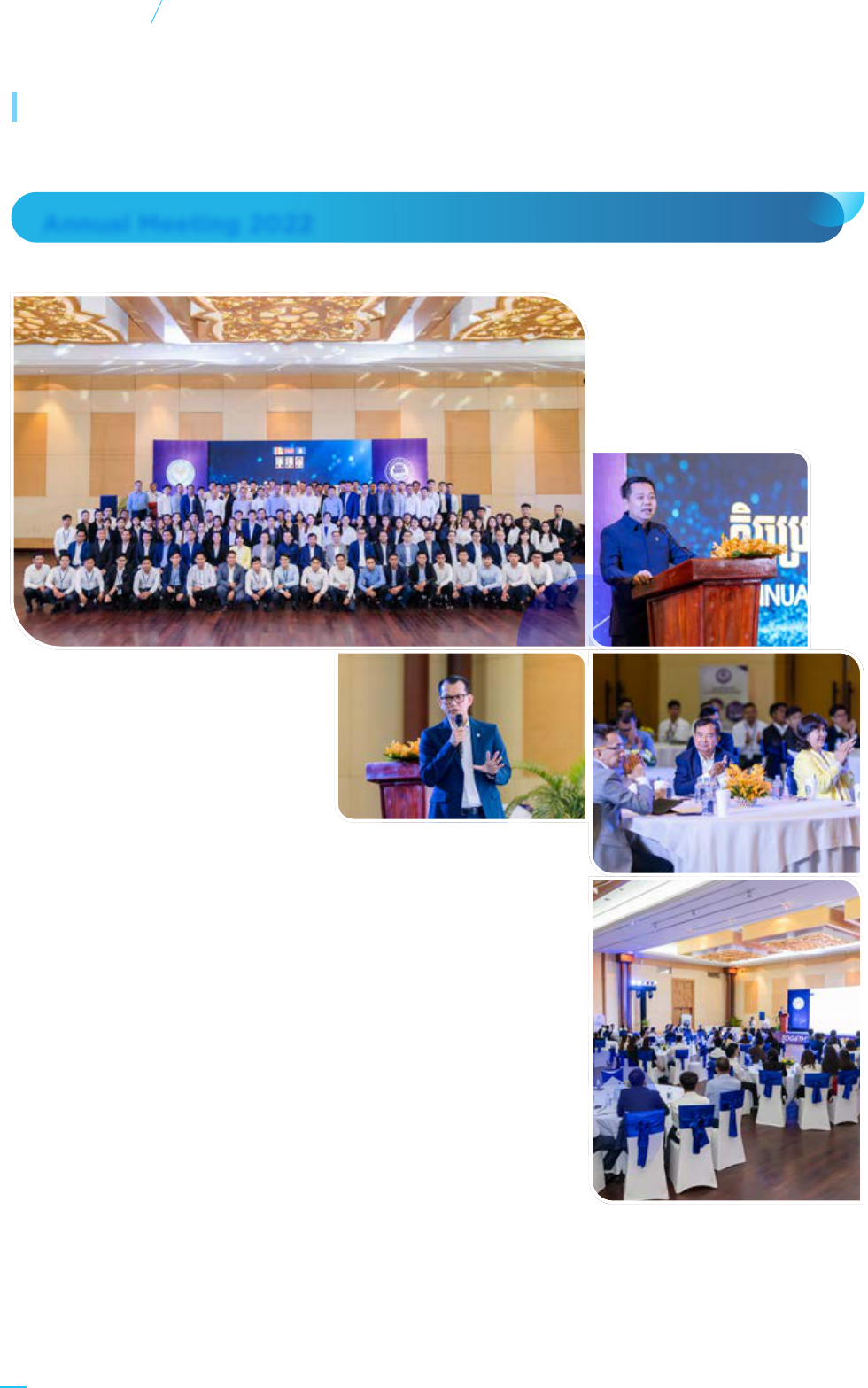
Annual Meeting 2022
SME Bank has organized the annual meeting with the participation of
sta at all levels, the management of the Bank, as well as his excellency
chairman and members of the Board of Directors. This annual meeting
was held at Sokha Hotel, Preah Sihanouk Province, on Friday afternoon,
February 4, 2023. In this meeting, SME bank provided an overview of
the Bank’s performance in 2022, emphasizing the fruitful results that
reflect the Bank’s growth as well as the new strategic plan that will be
implemented in the coming year of 2023 in line with the vision of the
Royal Government of the Kingdom of Cambodia.
EVENTS
24
Annual Report 2022
SME Bank of Cambodia
Events
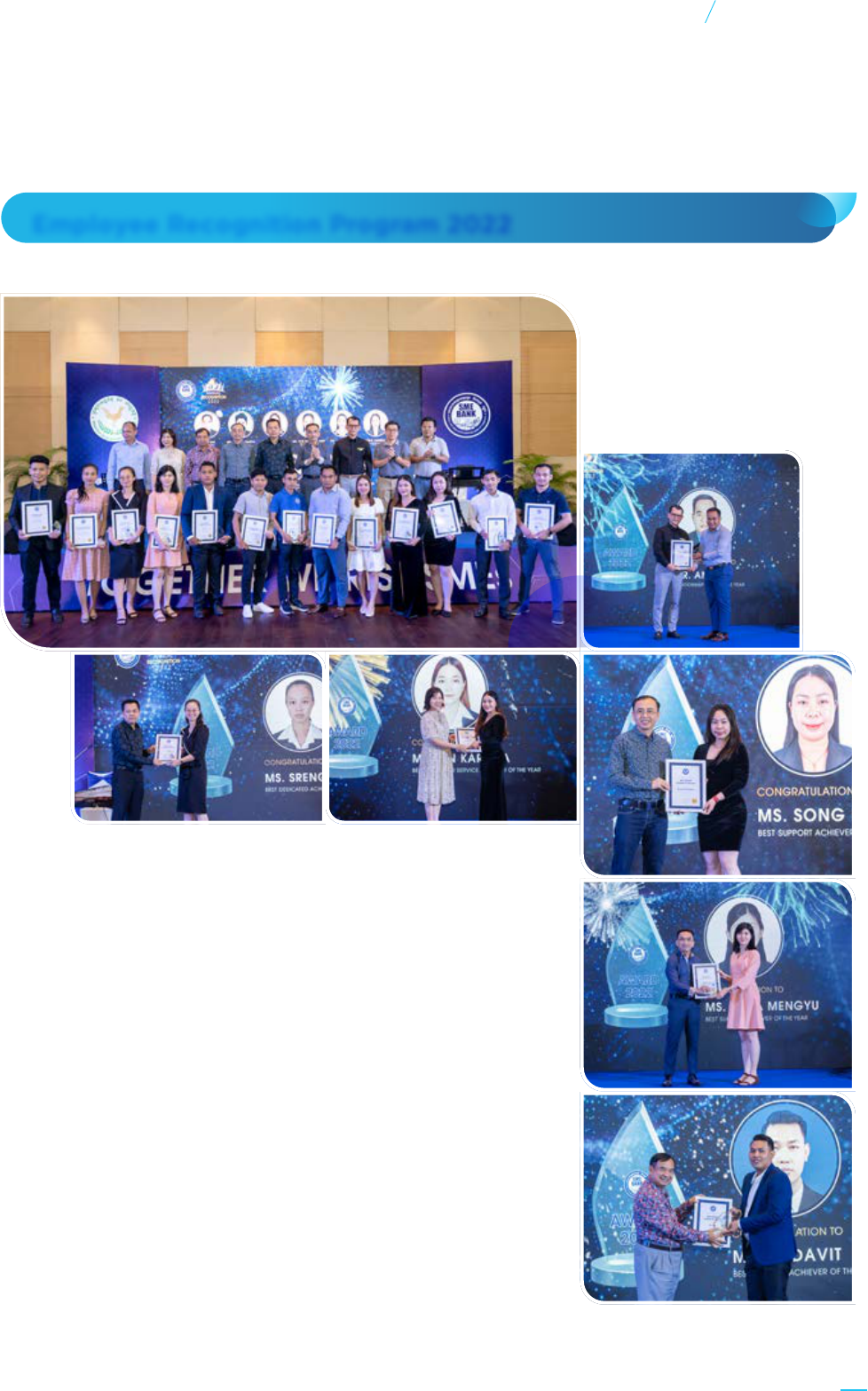
Employee Recognition Program 2022
SME Bank also organized the employee recognition ceremony in 2022
for top-performing employees who have actively contributed to the
Bank’s growth. This employee recognition ceremony was held in the
evening of February 4, 2023, at Sokha Hotel in Preah Sihanouk Province.
The Department of Human Resources organized this program based
on the procedure of selecting candidates from all branches and oces
and then discussing and seeking approval from the senior management
of the Bank. This program is designed to recognize outstanding
employees, encourage those who strive to achieve high results, foster
a high-performing culture, and reward top-performing employees with
value. The Bank identified 12 (twelve) award winners of the year who
received congratulations, trophies, and the cash award of 1,000,000
(one million) KHR. The Board of Directors and the senior management
personally presented the trophies and prizes to all the award winners.
25
Annual Report 2022
SME Bank of Cambodia
Events
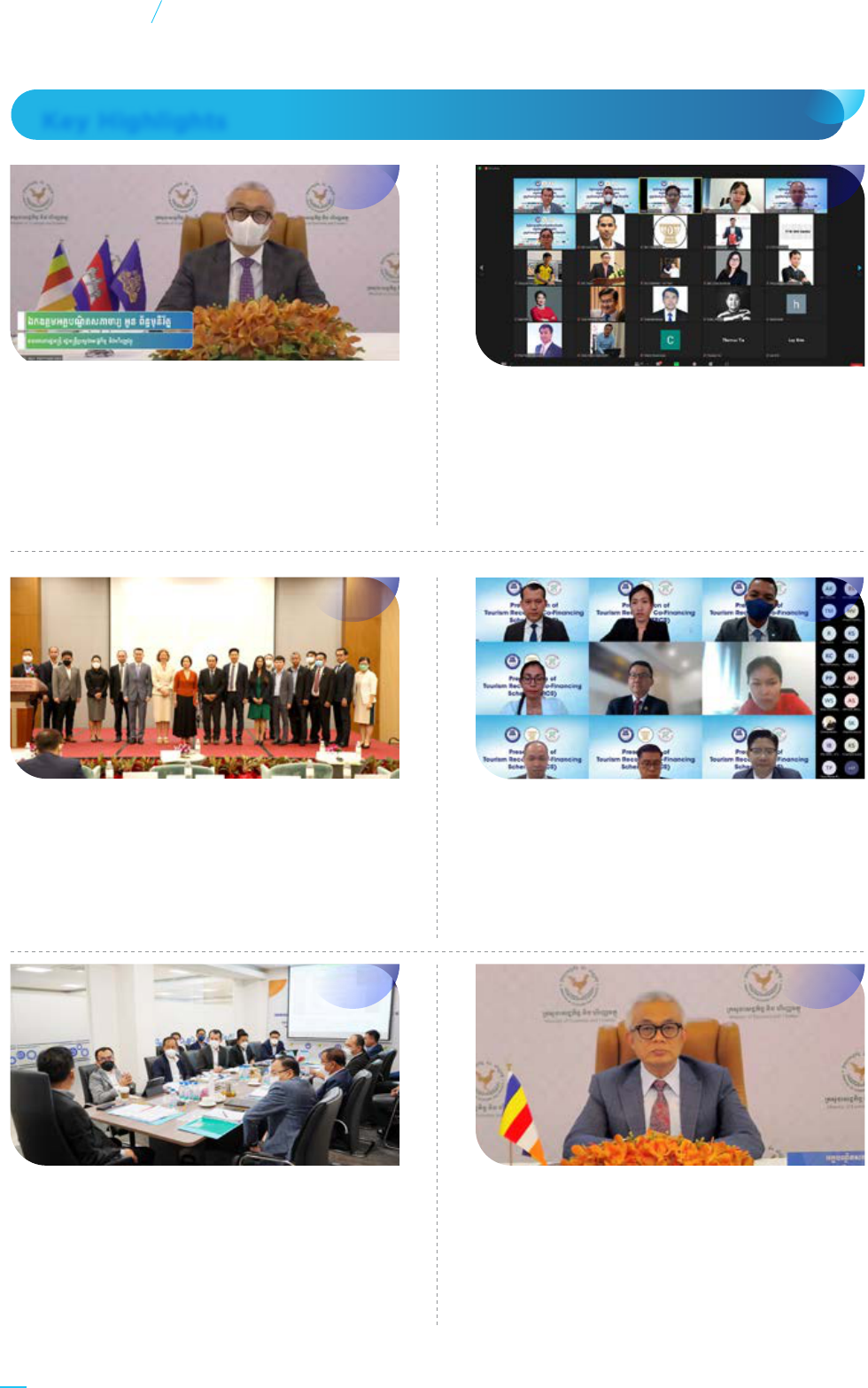
The virtual discussion forum on
“the Presentation of Tourism Recovery
Co-Financing Scheme”
April 20, 2022
10th Board of Directors Meeting
April 21, 2022 at the SME Bank’s Head Oce
Key Highlights
The Dissemination Ceremony on
“the Additional Fund Allocation for Small and
Medium Enterprise Bank of Cambodia and
Agricultural and Rural Development Bank”
February 14, 2022
Participation in a panel discussion on
“Understanding How to Access Financing”
at the program launch on “Access to Finance”
April 01, 2022 at Olympia City Hotel
The virtual discussion forum on “the Additional
Budget for SME Co-Financing Scheme Phase II”
February 22, 2022
Launching Ceremony of
“Tourism Recovery Co-Financing Scheme”
May 17, 2022
26
Annual Report 2022
SME Bank of Cambodia
Events
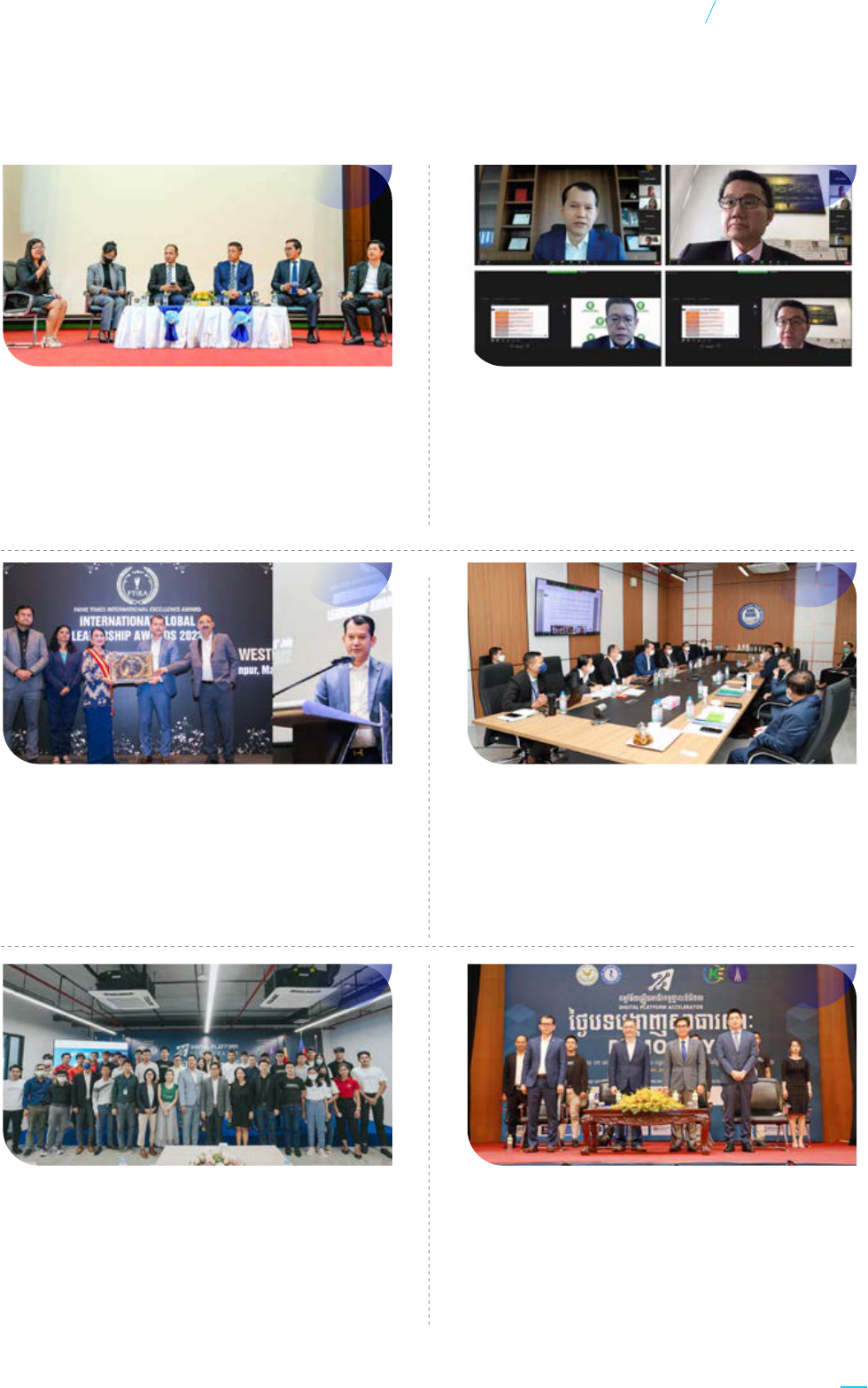
Dr. Lim Aun Receives an International
Global Leadership Awards 2022 in
Management
July 30, 2022 at Westin Hotel in Kuala Lumpur,
Malaysia
11th Board of Directors Meeting
August 4, 2022 at the SME Bank’s Head Oce
Participation in the demo day of the
“Digital Platform Accelerator”
August 24, 2022 at Cambodia-Japan
Cooperation Center (CJCC)
Participation in the launching ceremony
of the “Digital Platform Accelerator”
August 24, 2022 at the Techo Startup Center’s
Oce
Participation in discussion forum on
“Access to Finance and Market for
Women’s Business Growth”
June 16, 2022 at the Cambodia-Japan
Cooperation Centre (CJCC)
The virtual discussion forum on “The
implementation of Tourism Recovery
Co-Financing Scheme”
July 21, 2022
27
Annual Report 2022
SME Bank of Cambodia
Events
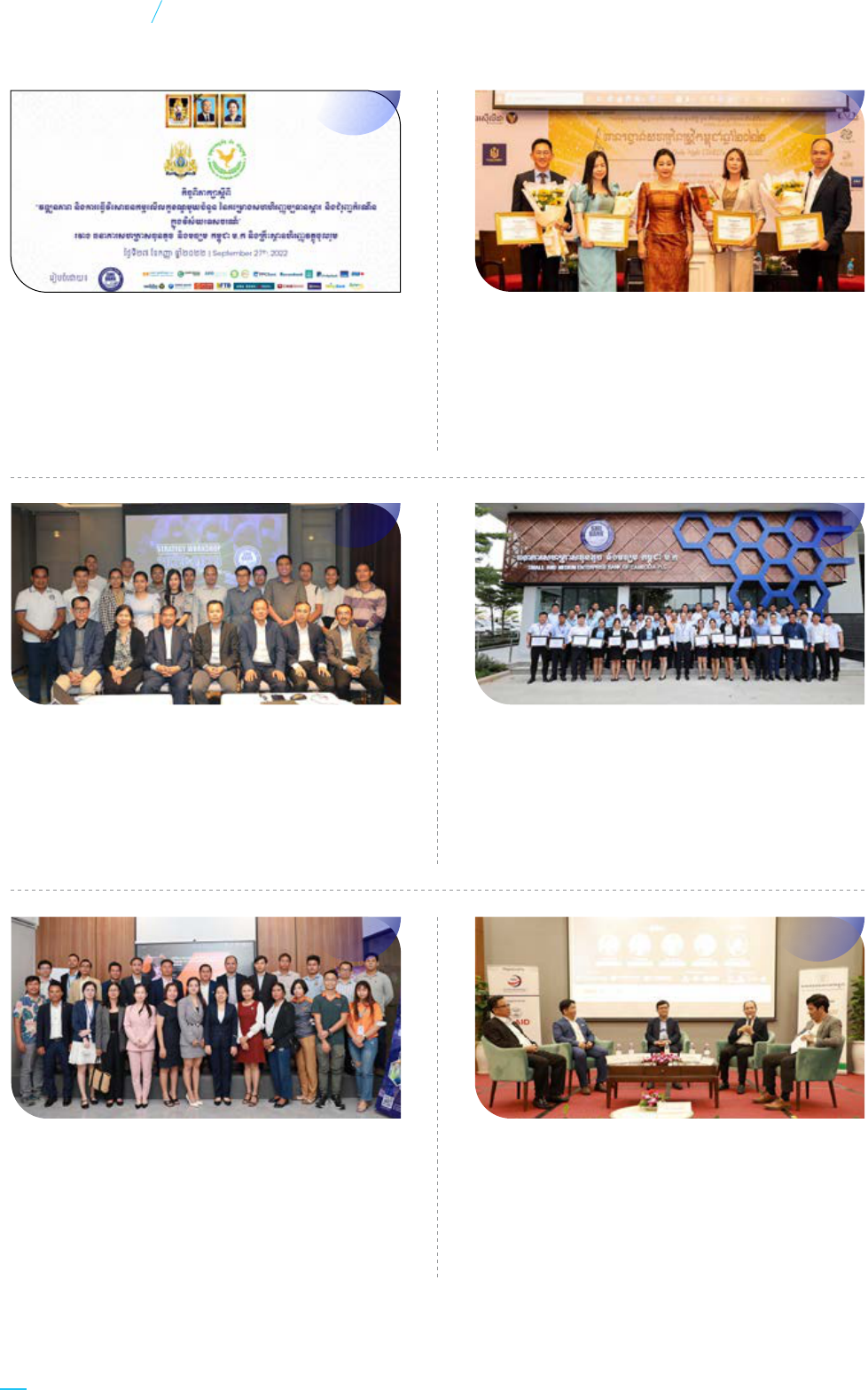
Organized the “Strategy Workshop”
to set the Bank’s business strategies plan for
2023-2025
September 30, 2022 at Hyatt Regency Hotel
Phnom Penh
Participation in the Cambodian Women
Entrepreneur’s Day on “MSMEs access to
Finance on digital Era”
December 09, 2022 at Sofitel Phnom Penh
Phokeetra Hotel
Participation in “the 4th CEO Gathering & 2nd
SMEs and Financial Institutions Night”
October 07, 2022 at Olympia City Hotel
Discussion on “ Tourism Recovery Co-Financing
Scheme Progress Update”
September 27, 2022 at the SME Bank’s Head
Oce
Induction Training
Septemeber 27 - 30, 2022 at the SME Bank’s
Head Oce
Seminar on “SME Access to Finance for
Developing Global Market”
October 4, 2022 at the SME Bank’s Head Oce
28
Annual Report 2022
SME Bank of Cambodia
Events
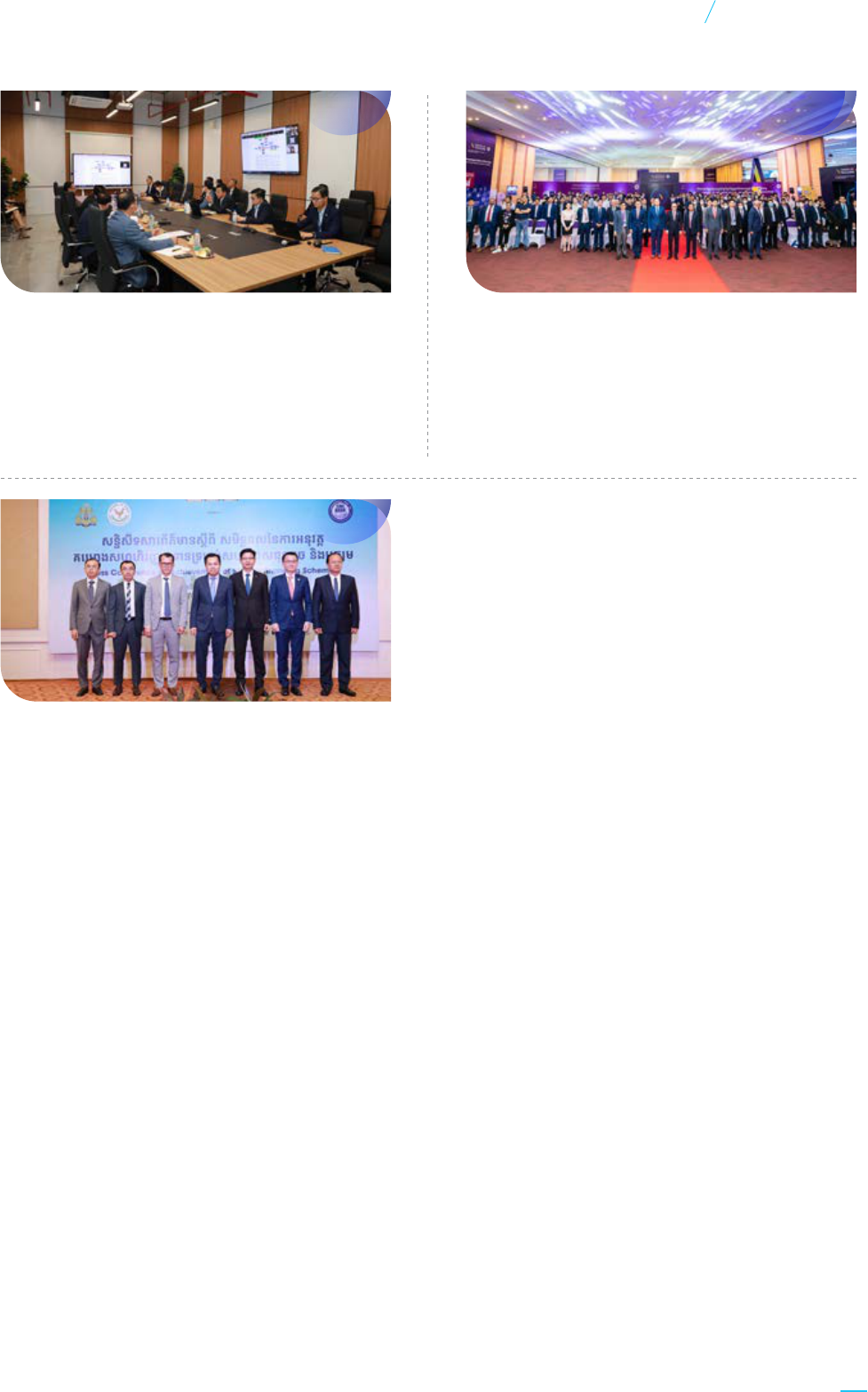
Co-sponsored on “the Cambodia Tech Expo
2022 (CTX 2022)”
November 11 - 13, 2022 at Koh Pich Convention
and Exhibition Center
Press Conference on “the Achievements of SME
Co-Financing Scheme”
December 05, 2022 at Raes Le Royal Hotel
12th Board of Directors Meeting
October 24, 2022 at the SME Bank’s Head Oce
29
Annual Report 2022
SME Bank of Cambodia
Events
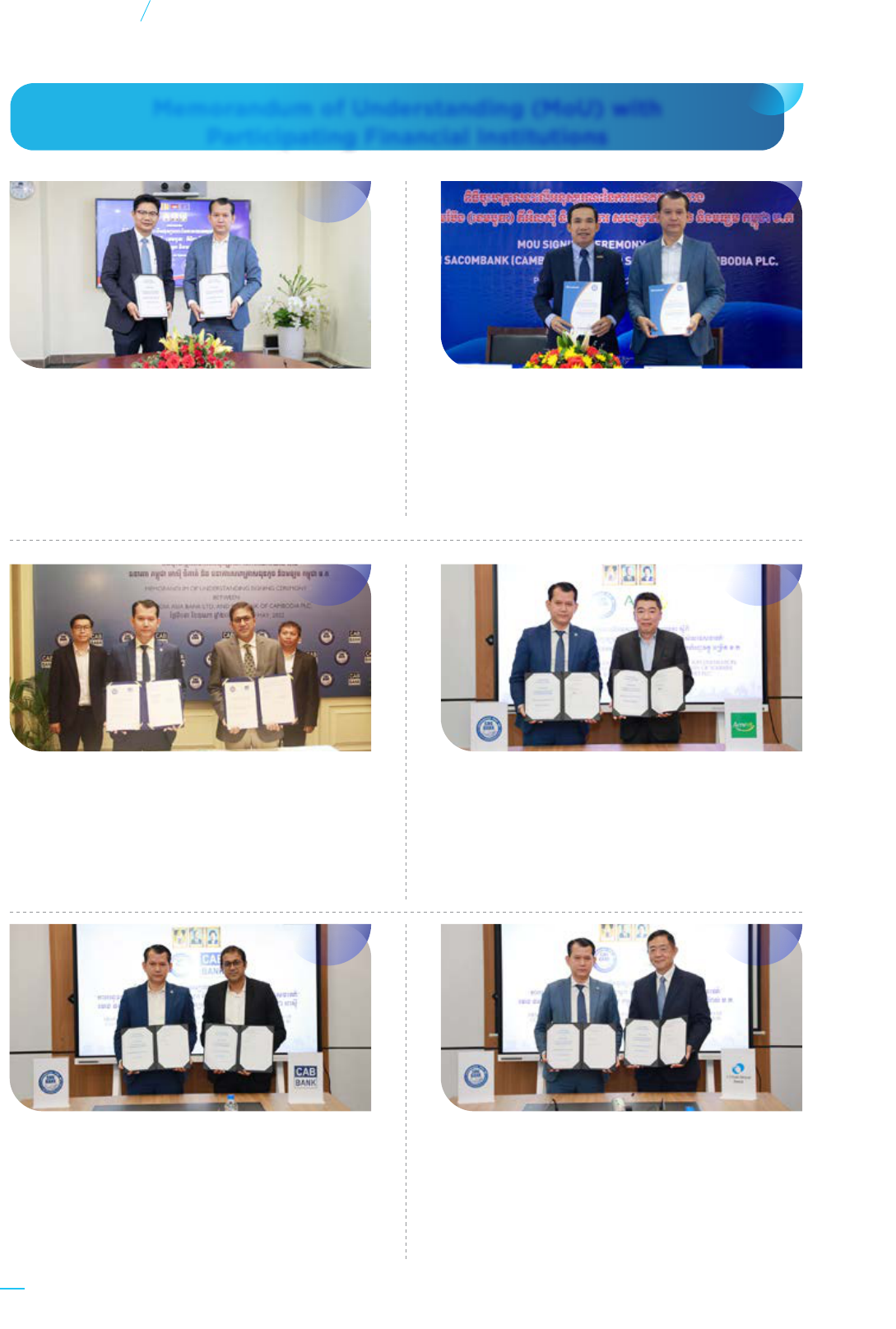
Signing Ceremony of Memorandum of
Understanding (MoU) between SME Bank and
Cambodia Asia Bank Ltd., to implement the
Tourism Recovery Co-Financing Scheme
October 04, 2022
Signing Ceremony of Memorandum of
Understanding (MoU) between SME Bank and
J-Trust Royal Bank Ltd., to implement the
Tourism Recovery Co-Financing Scheme
October 26, 2022
Signing Ceremony of Memorandum of
Understanding (MoU) between SME Bank
and LOLC (Cambodia) Microfinance Institution
Plc., to implement the SME Co-Financing
Scheme Phase II
April 12, 2022
Signing Ceremony of Memorandum of
Understanding (MoU) between SME Bank and
Amret Microfinance Institution Ltd., to
implement the Tourism Recovery Co-Financing
Scheme
September 05, 2022
Signing Ceremony of Memorandum of
Understanding (MoU) between SME Bank and
Cambodia Asia Bank Ltd., to implement the
SME Co-Financing Scheme Phase II
May 03, 2022
Signing Ceremony of Memorandum of
Understanding (MoU) between SME Bank and
Maybank (Cambodia) Plc., to implement the
SME Co-Financing Scheme Phase II
April 19, 2022
Internal
Audit Dept.
Finance &
Planning Dept.
Chief Finance
Ocer
Chief Operating
Ocer
Deputy CEO
(Vacant)
Procurement
Committee
State
Controller
Board
of Directors
Board
Audit
Committee
Board Risk
and Compliance
Committee
Procurement
Unit
Chief Executive
Ocer
Chief
Technology
Ocer
Chief
Risk Ocer
Treasury Unit
Operation
Dept.
Marketing
Dept.
Technology
System Dept.
Executive Committee
Risk Management Committee
Credit Committee
Assets & Liabilities Committee
Disciplinary Committee
IT Security
Unit
Risk
Management
Dept.
ESG Unit
Direct Sale
Dept.
Property &
Admin Unit
Business
Development
Dept.
Legal &
Secretariat Dept.
Human Resource
Dept.
Information
System Dept.
Credit
Management
Dept.
Compliance
Dept.
Branches
MINISTRY
OF
ECONOMY &
FINANCE
Board Remuneration
and Nomination
Committee
Memorandum of Understanding (MoU) with
Participating Financial Institutions
30
Annual Report 2022
SME Bank of Cambodia
Events
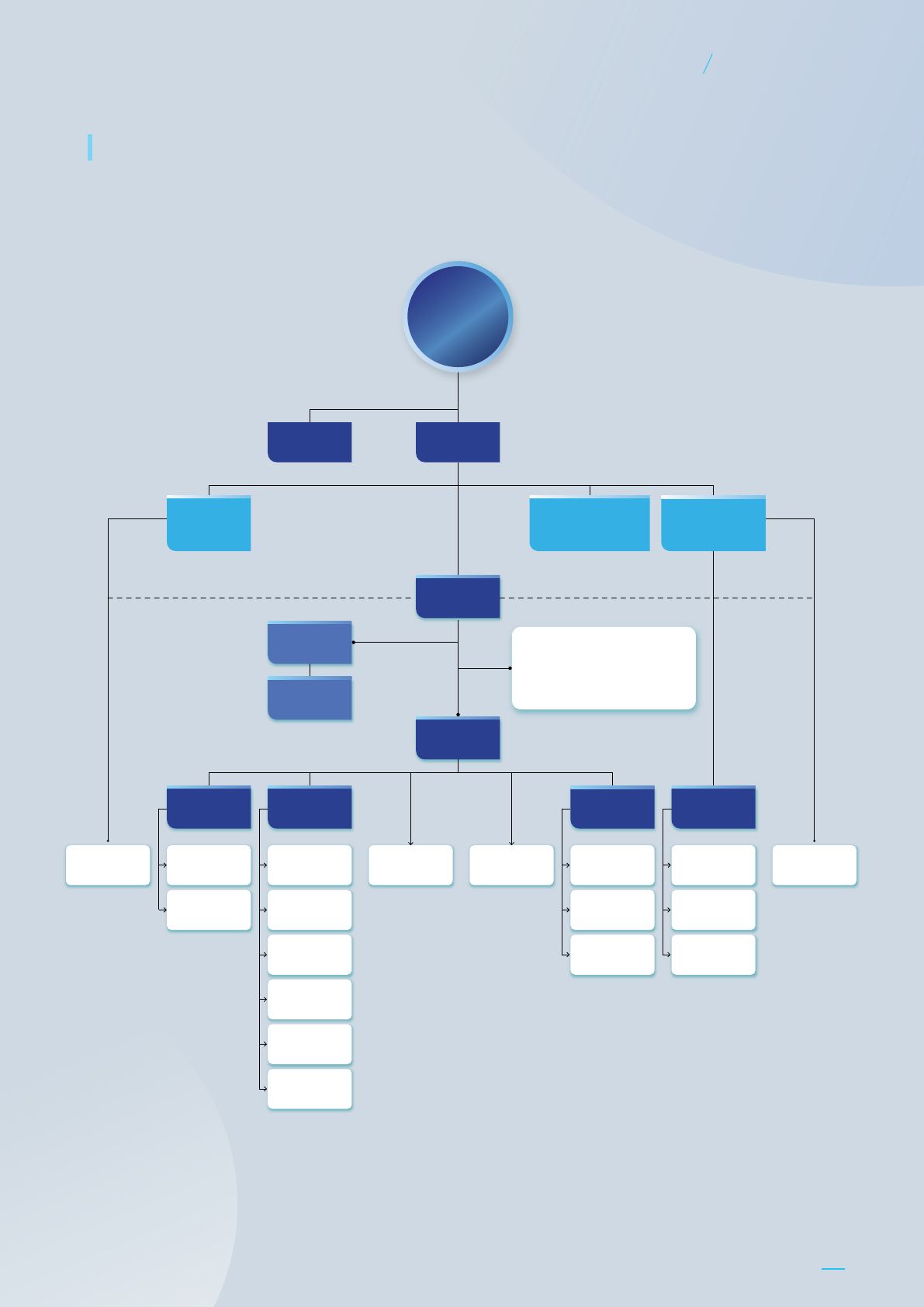
Internal
Audit Dept.
Finance &
Planning Dept.
Chief Finance
Ocer
Chief Operating
Ocer
Deputy CEO
(Vacant)
Procurement
Committee
State
Controller
Board
of Directors
Board
Audit
Committee
Board Risk
and Compliance
Committee
Procurement
Unit
Chief Executive
Ocer
Chief
Technology
Ocer
Chief
Risk Ocer
Treasury Unit
Operation
Dept.
Marketing
Dept.
Technology
System Dept.
Executive Committee
Risk Management Committee
Credit Committee
Assets & Liabilities Committee
Disciplinary Committee
IT Security
Unit
Risk
Management
Dept.
ESG Unit
Direct Sale
Dept.
Property &
Admin Unit
Business
Development
Dept.
Legal &
Secretariat Dept.
Human Resource
Dept.
Information
System Dept.
Credit
Management
Dept.
Compliance
Dept.
Branches
MINISTRY
OF
ECONOMY &
FINANCE
Board Remuneration
and Nomination
Committee
ORGANIZATIONAL STRUCTURE
31
Annual Report 2022
SME Bank of Cambodia
Corporate Governance

THE BOARD OF DIRECTORS

SENIOR MANAGEMENT

H.E. Dr. PHAN Phalla has joined the Ministry of Economy and
Finance and the Supreme National Economic Council since 2004.
He has been actively involved in the development of the Financial
Management Information System (FMIS) project, the Public
Financial Management Reform Program (PFMRP), the preparation
of national and sectoral strategies, revenue collection strategies,
management, and Macroeconomic analysis, development of
strategic framework and programs to restore and promote
Cambodia’s economic growth in living with COVID-19 in the new
normal path for 2021-2023, etc.
He is currently a member of the Supreme National Economic
Council, a board member of the Sihanoukville Autonomous Port,
the Secretary-General of the Economic and Financial Policy
Committee, the Secretary of State of the Ministry of Economy
and Finance, and the Chairman of SME Bank of Cambodia. He
holds a PhD in Economics from Australia.
H.E. Dr. PHAN Phalla
Secretary of State, Ministry of
Economy and Finance, and
Chairman of the Board
H.E. SON Seng Huot is the Secretary of State of the Ministry of
Industry, Science, Technology, and Innovation, he has a lot of
experience, before 2013, he was a director of Phnom Penh
Department of Industry, Mines and Energy. From 2013 to 2014,
He was the Deputy Director General of the Department of Small
and Medium Enterprise and Handicrafts at the Ministry of Industry
and Handicraft. From 2014 to the present, He is the Secretary of
State of the Ministry of Industry, Science, Technology, and
Innovation in charge of the General Department of Small and
Medium Enterprise and Handicrafts and the Department of
Industrial Aairs of the General Department of Industry.
He graduated from Vietnam with Small and Medium Enterprise
Management Skills and One Village One Product Management
Skills from Japan. He underwent short-term training courses on
small and medium enterprise management from Singapore and
Korea. He holds a master’s degree in public administration from
Asia Europe University.
H.E. SON Seng Huot
Board Member
THE BOARD OF DIRECTORS
34
Annual Report 2022
SME Bank of Cambodia
Corporate Governance

H.E. TEP Phiyorin is currently the Under Secretary of State at the
Ministry of Economy and Finance. In the past, he was the Director
General of the General Department of Policy. He also served as
an advisor to the Executive Director of the World Bank Group,
based in Washington D.C. the United States. He joined the Ministry
of Economy and Finance in 1999 as a Budget Ocer, and since
then he has held several positions in the Ministry of Economy
and Finance, including the Director of the Oce of Macroeconomics,
Deputy Head of Department, and Head of the Department of
Economic Policy and Public Finance.
He holds a degree in Public Economics and Finance from the
University of Birmingham in the United Kingdom and in Economics
from the Kharkov State University of Economics in Ukraine. He
is currently responsible for monitoring macroeconomic
development, policy monitoring, and analysis of development
issues. He is also in charge of the macroeconomic framework,
and medium-term taxes, and advises on economics, finance, and
the public management sector as well.
H.E. TEP Phiyorin
Board Member
Mrs. CHHORN Dalis has been appointed as an Independent Board
Member of SME Bank of Cambodia in 2020. She has more than
20 years of experience as an accountant and leads small and
medium enterprises in various fields, including agro-industry and
clean water.
She holds a Master of Business Administration from the Asian
Institute of Technology in Thailand and a Master of International
Finance from Ceram Sophia Antipolis in France in 2002.
Mrs. CHHORN Dalis
Independent Board Member
35
Annual Report 2022
SME Bank of Cambodia
Corporate Governance

Dr. LIM Aun
Chief Executive Officer and Board
Member
Mr. NEAV Sokun
Chief Operating Officer
and Board Member
H.E. CHAN Sok Ty is currently the Royal Government of Cambodia
Delegate in charge of the CEO of Green Trade Company of the
Ministry of Commerce, with the same status as the Secretary of
State and Board Member of SME Bank of Cambodia.
He is a member of the Food Reserve System Management
Committee of Cambodia (ប.ស.ប.ក), which is responsible for
managing the Royal Government’s Food Reserve System.
He was also the Director General of Domestic Trade of the Ministry
of Commerce; he has been the Director of Accelerating Inclusive
Markets for Smallholders Project (AIMS).
His Excellency joined the Ministry of Commerce in 1997 as an
Ocer of the Laboratory Oce of the General Department of
CamControl, and since then he has also held various positions in
the Ministry of Commerce, including Chong Ty Deputy Branch
Manager, Deputy Head of Department and Deputy Director
General of the General Department of International Trade, Acting
Director General of the General Department of Trade Promotion
of the Ministry of Commerce.
H.E. CHAN Sok Ty graduated with a degree in Food Chemistry
Engineering from the Institute of Technology of Cambodia and
a master’s degree in agriculture from the University of Tokyo,
Japan.
H.E. CHAN Sok Ty
Board Member
36
Annual Report 2022
SME Bank of Cambodia
Corporate Governance

Dr. LIM Aun has more than 25 years of experience in the field of
banking and international auditing companies. Before joining
SME Bank of Cambodia, from 1997 to 2021, he served as a Senior
Auditor at KPMG in Cambodia and Malaysia, a Deputy General
Manager at Vattanac Bank, and lastly, a Chief Executive Ocer
at Sathapana Bank.
He was appointed as a Chief Executive Ocer and a Board
Member of SME Bank of Cambodia by the Royal Government in
August 2021.
He holds a PhD in Business Administration from France.
Dr. LIM Aun
Chief Executive Officer
and Board Member
Mr. NEAV Sokun has more than 20 years of experience in the
banking and financial sector. He has started his career in finance
since 2003. He has held various senior positions including Branch
Manager, Credit Executive, and Branch Manager with some big
Banks. In August 2021, he joined the SME Bank of Cambodia as
a Chief Operating Ocer, being responsible for managing the
processes and operations of the Business Department, Operations
Department, Marketing Department, Business Development
Department, Administration, and branches.
He holds a master’s degree in business administration from Norton
University and a Bachelor of Arts in English from Build Bright
University. He has also received certifications in management
and leadership training from many countries, including Italy, India,
and Vietnam.
Mr. NEAV Sokun
Chief Operating Officer
and Board Member
SENIOR MANAGEMENT
37
Annual Report 2022
SME Bank of Cambodia
Corporate Governance

Mr. DEN Davuth joined the SME Bank of Cambodia in July 2021
with key responsibilities to execute Bank’s IT strategy, business
process re-engineering initiatives, and strengthen IT governance
and control.
He started his career in 2005 with a local bank in the Information
Technology Department. In 2010 he was among the pioneer team
to set up a bank, one of the biggest regional banks in Cambodia,
where he headed the Information Technology and Operations
departments. From 2018-2019, he drove a project team to set up
a new IT and Digital Banking infrastructure for a new local bank.
From 2020-2021, he became the Chief Technology and Information
Ocer at Sathapana Bank.
He graduated with a bachelor’s degree in computer science and
engineering from the Royal University of Phnom Penh in 2004,
a bachelor’s degree in public communication from the Institute
of Foreign Languages in 2009 and received his Management and
Leadership certificate from Nanyang Technological University in
2013.
Mr. DEN Davuth
Chief Technology Officer
Mr. OEUR Vibol has more than 18 years of experience in the
banking sector. He started his career at one of the leading local
banks in 2004 with experience in numerous roles in accounting
and finance. In 2010, he moved to one of the regional banks as
a pioneer in setting up the bank, where he had an opportunity
to expand his professional experience in accounting, finance, and
risk management. In his last role as Head of Risk Analytics and
Management, his main responsibilities were developing and
implementing risk management frameworks and policies to suit
operations and regulations.
In August 2020, he joined SME Bank as a Chief Risk Ocer to
oversee risk management functions, including but not limited to
credit, operational, liquidity, and market risks.
He graduated from the National University of Management with
a degree in Accounting and Finance and participated in numerous
courses in accounting, finance, risk management, and leadership.
Mr. OEUR Vibol
Chief Risk Management
38
Annual Report 2022
SME Bank of Cambodia
Corporate Governance

The Bank has a strong governance structure through the
technical and financial guidance of the Ministry of Economy
and Finance with further supervision from the National
Bank of Cambodia. The bank is managed by the Chairman
and Members of the Board appointed by the Sub-Decree
of the Royal Government of Cambodia.
The Bank operates on the basis of the principles, regulations,
procedures, validation and evaluation mechanisms
established by the management and other relevant
departments within the Bank and approved by the Board
of Directors.
Corporate Governance
39
Annual Report 2022
SME Bank of Cambodia
Corporate Governance
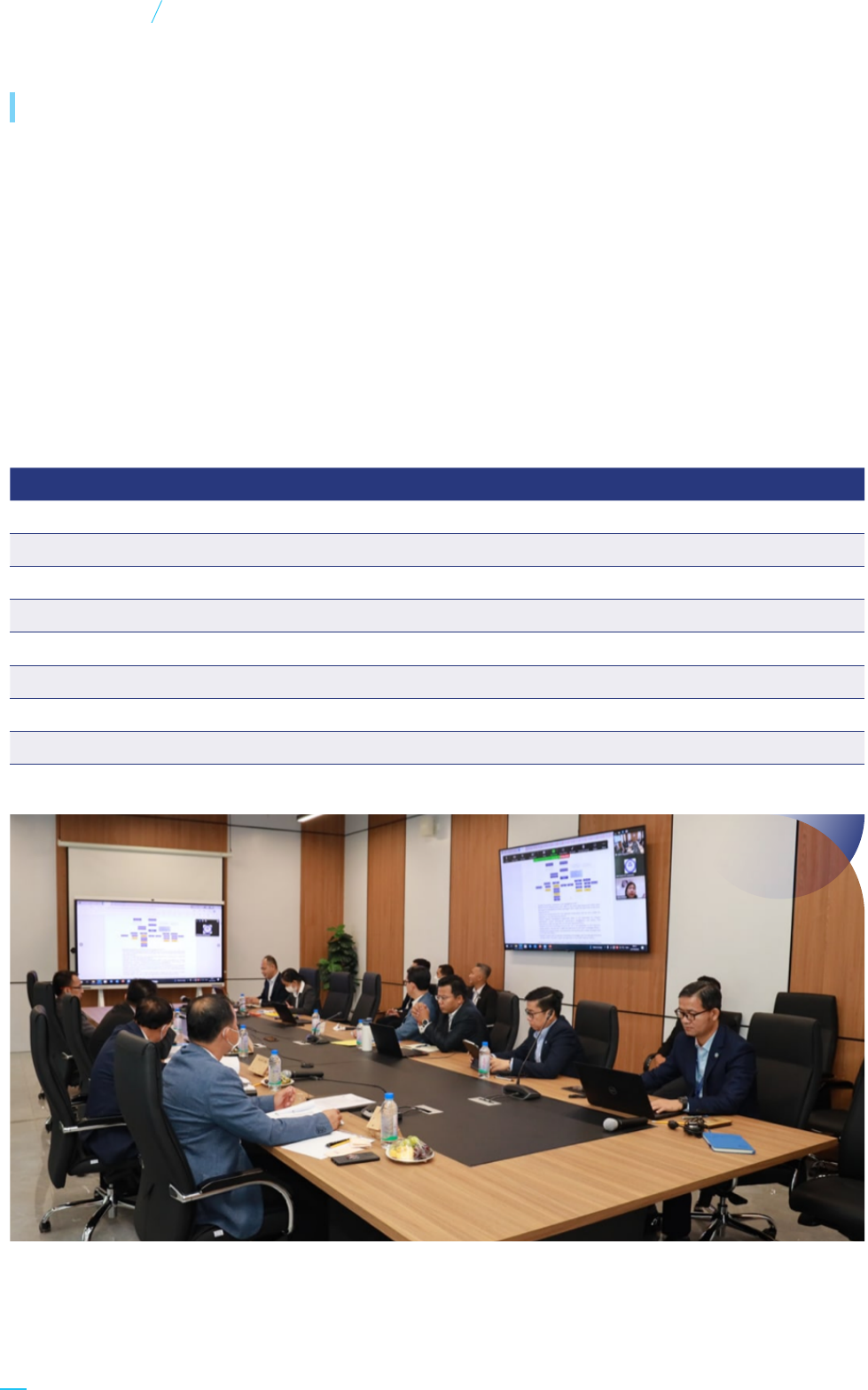
The Board of Directors (The Board) has seven members, with two Executive Directors and five Non-Executive
Directors. The Board is responsible for setting the goal and overseeing the overall management and aairs
of the Bank in accordance with the Royal Government of Cambodia’s policy direction. It is primarily accountable
to the Ministry of Economic and Finance (sole shareholder) for the proper conduct of the business of the
Bank. The Bank has established three Board-level committees which are under the direct control of the Board,
(1) Board Risk and Compliance Committee, (2) Board Nomination and Remuneration Committee, and (3)
Board Audit Committee. The Bank also has five executive Committees under the supervision of the Chief
Executive Ocer; they are 1) Executive Committee, 2). Risk Management Committee, 3). Asset and Liability
Management Committee, 4). Credit Committee, and 5). Procurement Committee.
A total of four Board meetings were held in 2022 and the Directors’ attendance at the meetings are as follows:
No. Directors Composition
1 H.E Dr. Phan Phalla Chairman
2 H.E Tep Phiyorin Member
3 H.E Son Senghout Member
4 H.E Chan Sokty Member
5 Dr. Lim Aun Member
6 Mrs. Chhorn Dalis Member
7 Mr. Neav Sokun Member
8 H.E Dr. Kong Marry State Controller
BOARD OF DIRECTORS MEETING
40
Annual Report 2022
SME Bank of Cambodia
Corporate Governance

The Board appoints the Board Risk and Compliance Committee (BRCC) and comprises three Non-Executive
Directors. BRCC’s responsibility is authorized by the Board to ensure that the integrated risk management
functions within the Bank are eectively discharged.
The BRCC oversees credit, liquidity, market, and operational risks including a review of strategic risks, policies,
guidelines, assessment methodology, and risk management report. The BRCC reports to the Board of Directors
on all risk and compliance matters of the Bank.
A total of seven BRCC meetings were held in 2022 and the Directors’ attendance at the meetings is as follows:
No. Directors Composition
1 H.E. Tep Phiyorin Chairman / Non-Executive Director
2 H.E. Song Seng Huot
Member / Independent Non-Executive Director
3 Mrs. Chhorn Dalis Independent Non-Executive Director
The terms of reference of the Board Risk and
Compliance Committee are as follows:
› Risk Management
• To review, formulate and recommend policies for
the Board’s approval;
• To review and consider the adequacy of risk
management policies and frameworks, identifying,
measuring, monitoring, and controlling risk and
the extent to which these are operating eectively;
• To ensure infrastructure, resources and systems
are in place for risk management i.e., to ensure
that the sta are responsible for implementing
risk management systems performing those duties
independently of the Bank’s risk-taking activities;
• To review management’s periodic reports on risk
exposure, risk portfolio composition, risk rating
systems, risk appetite, stress testing, and risk
management activities;
• To review and approve risk-taking activities as
delegated;
• To establish and keep under review any sub-
committee.
› Compliance
• Discuss compliance, anti-money laundering, and
combating the financing of the terrorism risk, and
ensure the risks are resolved eectively and
eciently;
• Review and comply with all regulations and
policies on anti-money laundering and combating
the financing of the terrorism and all necessary
amendments to the compliance;
• Receive and review, at least annually, a report on
anti-money laundering and combating the
financing of terrorism crime produced by the
Compliance Ocer and any specific actions taken
by senior management concerning the report;
• Review reports from Compliance Ocer on the
arrangements established by management for
ensuring adherence to internal compliance policies,
procedures, and compliance with specific laws
and regulations, as required by the Committee or
required by laws and regulations;
• Review and advise on the fundamental activities
that are required by the Board of Directors.
BOARD RISK AND
COMPLIANCE COMMITTEE
41
Annual Report 2022
SME Bank of Cambodia
Corporate Governance

Key Matters Reviewed/Deliberated/
Approved
Throughout the financial year ended 2022, BRCC has
committed to ensuring the Bank’s structure remained
resilient against multiple stressors, most notably
post-pandemic recovery strategies, and unexpected
economic shocks. Other matters discussed are set
out below:
• Discussed Risk Management Report;
• Discussed Compliance and Regulatory Compliance
Risk Report;
• Discussed compliance, anti-money laundering,
and combating the financing of the terrorism risk;
• Discussed the Bank’s Business Continuity
Management (BCP);
• Reviewed and endorsed Deviation Approval for
Loan Application;
• Reviewed and endorsed Finance and Accounting
Policy;
• Reviewed and approved on Finance’s Delegated
Authority;
• Reviewed and endorsed Credit Delegated
Approving Authority;
• Reviewed and endorsed Pricing Delegated
Authority for KHR Loan;
• Reviewed and endorsed Sale Channels Strategy;
• Reviewed and endorsed Business Partnership for
Bill Payment Services;
• Reviewed and endorsed Revised TRCS Schemes
Features;
• Reviewed and endorsed the Approved Property
Developers for sta Housing Loans;
• Reviewed and endorsed Opening Bank Account
and Delegated Authorized Signatories;
• Reviewed and endorsed Account Opening
Proposal – Wing
• Approved Risk Management Division’s and
Compliance Department’s Terms of Reference;
• Approved on AML/CFT Procedure;
• Approved Updating Credit Loss Rate;
• Approved Bill Payment Operations Manual;
• Approved Stress Test Scenario Result and Analysis
for Position as of November 2022;
› Risk Management Division
Risk Management plays a vital role in the banking business and is even more crucial during challenging business
environments. The role of Risk Management has also been broadened, and a strong risk culture needs to be
embedded into business units to ensure adequate risk transparency for the sustainable growth of the Bank.
Risk Management functions works independently and closely with all relevant business units to ensure the
understanding of risk culture and awareness.
Overall, Risk Management is responsible for administrating the day-to-day risk management functions as well
as the monitoring and control of the Bank’s risk exposures with regular reporting to the Risk Management
Committee and the Board Risk and Compliance Committee (BRCC).
42
Annual Report 2022
SME Bank of Cambodia
Corporate Governance

Key Roles of Risk Management:
Credit Risk
Credit Risk is the possibility of losses due to a borrower or market counterparty failing
to perform its contractual obligations to the Bank.
The Credit Management is under the Risk Division, which is responsible for Credit Risk,
including reviewing key risk strategies, policies, guidelines, risk assessment approaches,
and risk reports. The Credit Management Department also provides an independent
evaluation of credit applications before submissions for decisions. Credit management
is also responsible for reviewing and monitoring the Bank’s loan portfolio and any
credit-related limit/threshold. Besides credit evaluation, Credit Management has also
covered the scope for Credit Quality Control and Loan Monitoring and Recovery to
strengthen the Bank’s asset quality and its long-term sustainability.
Liquidity
Risk
Liquidity Risk is the risk that the Bank does not have sucient financial resources
available to fund increases in assets or to meet its obligations as they come without
incurring unacceptable losses.
The Bank must maintain sucient liquidity at all times so that its cash flow positions
and/or liquefiable assets are readily available to meet financial and regulatory obligations
under BAU and stress conditions.
Liquidity risk undertaken by the Bank is governed by an established liquidity risk
appetite that defines the risk-taking level that the Bank is willing to accept in pursuit
of its strategic and business objectives.
Risk Management is responsible for monitoring the Bank’s liquidity risk profile and
reports regularly to the Risk Management Committee and the BRCC to manage its
liquidity position to meet its daily operational needs and regulatory requirements.
Market Risk
Market Risk is defined as fluctuations in the value of financial instruments due to
changes in market risk factors such as interest rates, currency exchange rates, credit
spreads, equity prices, commodities prices, and their associated volatility.
Operational
Risk
Operational Risk refers to the risk of loss resulting from inadequate or failed internal
processes, people and systems or external events. One of the key requirements of a
robust risk management structure is having eective Operational Risk Management
tools to identify comprehensively, measure, monitor, control, and report the entity’s
operational risk exposures.
43
Annual Report 2022
SME Bank of Cambodia
Corporate Governance

The Board Audit Committee (“BAC”) is appointed by the Board. Board Audit Committee has composed of
four members who are Non-Executive Directors to provide oversight of the internal audit, financial statements,
internal control system, and risk management framework to ensure compliance with regulatory requirements
in the Bank. A total of eight Board Audit Committee meetings were held in 2022 at the meetings are as follows:
No. Directors Composition
1 Mrs. CHHORN Dalis Chairwoman
2 H.E. TEP Phiyorin Member
3 H.E. SON Senghuot Member
4 H.E. CHAN Sokty Member
The Board Audit Committee performs the
roles and responsibilities as follows:
• Ensure the information provided to the Public and
the National Bank of Cambodia is accurate and
reliable.
• Ensure the internal auditors regularly audit the
accounting methods, records, and financial
statements to meet the expectations of the
regulations and the Board.
• Evaluate, check, and approve the internal audit
policies, procedures, and annual internal audit
plans, mainly whether the system measuring,
monitoring, and risk management are consistent
and recommended on audit findings.
• Assist the Board in overseeing the implementation
of accounting policies, preparing accurate and
sucient reports, and ensuring the eectiveness
of internal control.
• Ensure corrective action between the internal
auditor and senior management to comply with
the target response.
Results of the Board Audit Committee’s
performance achievement in 2022:
• Reviewed and advised on internal audit findings,
and special audit findings;
• Discussed the KPIs for the Internal Audit team,
budgeting, and stang manpower;
• Reviewed the implementation following
recommendations from the Internal Audit
Department and the Board of Audit Committee;
• Reviewed and endorsed on External Auditor
selection before the Board of Director approved;
• Conducted meeting between senior management
with External Auditors on findings;
• Reviewed and endorsed on Annual Audit Report
2021 before the Board of Director for submitted
to CAFIU;
• Reviewed and approved Internal Control Report
2021 for submitted to NBC and CAFIU
• Reviewed training course for internal auditors;
• Reviewed and approved Annual Internal Audit
Plan for 2022;
• Evaluated annual performance of the Head Internal
Audit.
BOARD AUDIT COMMITTEE
44
Annual Report 2022
SME Bank of Cambodia
Corporate Governance

The Internal Audit Department is responsible for
regularly evaluating, checking, and monitoring the
implementation of the Bank’s internal control system
and governance to ensure the Bank’s vision and main
objectives’ eectiveness. To ensure the transparency
and independence of the audit work, the internal
auditors must report directly to the Board Audit
Committee and indirectly to the Chief Executive
Ocer on certain administrative matters.
Internal Audit’s Key Roles:
• Manage audit work, coordinate, review, and report
on the internal audit’s work, and provide the Audit
Standards, criteria, and requirements of the
internal audit.
• Plan, manage, and monitor the daily work activities
of the Internal Audit Department and develop and
maintain eective and ecient customers and
sta.
• Ensure that Bank’s management and employees
fully implement all internal policies and procedures.
• Introduce management to the impact of risks
related to new products and services or activities
and plans to mitigate risks.
• Prepare and update an internal risk-based audit
plan for evaluating the eectiveness of risk
management and report the internal audit report
to the Board Audit Committee.
• Ensure the management has responded and acted
on the internal audit report and implemented the
recommendation by the target date. Perform other
tasks as assigned by the Board Audit Committee.
• Assist the Board Audit Committee and the Board
of Directors in fulfilling their responsibilities for
properly implementing accounting policies,
reports, adequacy, and eectiveness of internal
control.
45
Annual Report 2022
SME Bank of Cambodia
Corporate Governance

The Board of Remuneration and Nomination (BRNC) Committee is appointed by the Board of Directors. The
Board of Remuneration and Nomination Committee consists of 1 (one) executive director and 4 (four) non-
executive directors to ensure that the Remuneration Policy is consistent with the long-term objectives and
corporate values of the SME Bank and reasonable in the light of the SME Bank’s objectives, compensation for
a similar function in other banks and financial institutions, and other relevant factors with due regard to the
interests of the shareholders and to the financial and commercial needs of the SME Bank. There were 5 (five)
meetings held in 2022 with the participation of members as follows:
No. Directors Composition
1 H.E. SON Senghuot Chairman
2 H.E. TEP Phiyorin Member
3 H.E. CHAN Sokty Member
4 Mrs. CHHORN Dalis Member
5 Mr. NEAV Sokun Member
The BRNC performs the roles and
responsibilities as follows:
• Cover all aspects of remuneration, including but
not limited to Directors’ fees, salaries, allowances,
expenses, consultancy fees (where applicable)
and benefits in kind; and
• Recommend the remuneration of the Directors
of the SME Bank to the Board of Director.
• Recommend to the Board the performance targets
and incentive plan (including bonus and any other
scheme designed to encourage long-term
corporate value creation) for the SME Bank
Managements, the Head of Internal Audit, and the
Compliance Manager for the coming year.
• Review the adequacy and form of compensation
to the SME Bank Managements and Key Managers
to ensure that it is realistically commensurate with
the responsibilities and risks involved in being an
eective member of the management team.
• Review and guide the evaluation of the
eectiveness of the Board and the Board
committee at least once per year.
• Review and update the relevant policies and
procedures at least once a year for BOD’s approval.
Results of the Board of Remuneration and
Nomination Committee in 2022:
• Reviewed and advised on the Annual salary
increment of 2022 and special salary increments
before the Board of Director approved
• Reviewed and advised on Sales incentive scheme
before the Board of Director approved
• Reviewed and advised on revise SME bank’s
management restructure before the Board of
Director approved
• Reviewed and approved on Employee performance
evaluation form of 2022
• Reviewed and approved on Provision of training
to employees
• Reviewed on defining employee performance
evaluation criteria
• Reviewed and advised on Code of Conduct before
the Board of Director approved
• Reviewed and evaluated the extension of
employment contract of a C-level sta
• Reviewed and approved on employee recognition
program
BOARD OF REMUNERATION AND
NOMINATION COMMITTEE (BRNC)
46
Annual Report 2022
SME Bank of Cambodia
Corporate Governance

FINANCIAL
STATEMENTS

The Board of Directors of Small and Medium Enterprise Bank of Cambodia Plc. (“the Bank”) presents its report
and the Bank’s financial statements as at 31 December 2022 and for the year then ended.
THE BANK
The Bank was incorporated in the Kingdom of Cambodia as a state-owned company organized under Law
on the General Statute of Public Enterprise with the registration certificate Co. 0001 M/2020 issued by the
Ministry of Commerce on 13 January 2020. The Bank is under technical and financial supervision of Ministry
of Economy and Finance (“MEF”).
The Bank obtained its banking license from the National Bank of Cambodia (“NBC”) on 27 February 2020 to
operate as a commercial bank with a permanent validity.
The Bank’s principal business activities are provisions of financing and commercial banking services to support
small and medium enterprises in the Kingdom of Cambodia.
The Bank’s registered oce address is located at MEF Business Development Center, #S, OCIC Street, Phum
Kien Khleang, Sangkat Chraoy Chongvar, Khan Chraoy Chongvar, Phnom Penh, Cambodia.
FINANCIAL RESULT
The Bank’s financial performance for the year is set out in the statement of comprehensive income.
DIVIDENDS
No dividend was declared or paid, and the Board of Directors does not recommend any dividend to be paid
for the year.
EXPECTED CREDIT LOSSES ON LOANS AND ADVANCES
Before the financial statements of the Bank were prepared, the Board of Directors took reasonable steps to
ascertain that action had been taken in relation to writing o of bad loans or recognition of allowance for
expected credit losses and satisfied themselves that all known bad loans had been written o and that adequate
allowance had been made for expected credit losses on loans and advances.
At the date of this report and based on the best of knowledge, the Board of Directors is not aware of any
circumstances which would render the amount written o for bad loans or the amount of the allowance for
expected credit losses in the financial statements of the Bank inadequate to any material extent.
REPORT OF THE BOARD
OF DIRECTORS
48
Annual Report 2022
SME Bank of Cambodia
Financial Statements

ASSETS
Before the financial statements of the Bank were prepared, the Board of Directors ascertained that management
took reasonable steps to ensure that any assets, which were unlikely to be realized in the ordinary course of
business at their values as shown in the accounting records of the Bank had been written down to amounts
which they might be expected to realize.
At the date of this report and based on the best of knowledge, the Board of Directors is not aware of any
circumstances which would render the values attributed to the assets in the financial statements of the Bank
misleading in any material respect.
VALUATION METHODS
At the date of this report, the Board of Directors is not aware of any circumstances that have arisen which
render adherence to the existing method of valuation of assets and liabilities in the financial statements of
the Bank misleading or inappropriate.
CONTINGENT AND OTHER LIABILITIES
At the date of this report, there is:
(a) no charge on the assets of the Bank which has arisen since the end of the financial year which secures
the liabilities of any other person; and
(b) no contingent liability in respect of the Bank that has arisen since the end of the financial year other
than in the ordinary course of its business operations.
No contingent or other liability of the Bank has become enforceable, or is likely to become enforceable within
the period of 12 months after the end of the financial year which, in the opinion of the Board of Directors, will
or may have a material eect on the ability of the Bank to meet its obligations as and when they fall due.
CHANGE OF CIRCUMSTANCES
At the date of this report, the Board of Directors is not aware of any circumstances, not otherwise dealt with
in this report or the financial statements of the Bank, which would render any amount stated in the financial
statements misleading.
ITEMS OF AN UNUSUAL NATURE
The result of the operation of the Bank for the year was not, in the opinion of the Board of Directors, substantially
aected by any item, transaction or event of a material and unusual nature.
There has not arisen in the interval between the end of the financial year and the date of this report any item,
transaction or event of a material and unusual nature likely, in the opinion of the Board of Directors, which
aect substantially the financial performance of the Bank for the year in which this report is made.
49
Annual Report 2022
SME Bank of Cambodia
Financial Statements

EVENTS AFTER END OF THE REPORTING PERIOD
At the date of this report, to the best knowledge of the Board of Directors, there have been no significant
events occurring after end of the reporting period which would require adjustments or disclosures to be made
in the financial statements.
THE BOARD OF DIRECTORS
The members of the Board of Directors holding oce during the year and at the date of this report are:
Name Position
H.E. Dr. Phan Phalla Secretary of State, Ministry of Economy and Finance
and Chairman of the Board of Directors
H.E. Tep Phiyorin Member
H.E. Chan Sokty Member
H.E. Son Seng Huot Member
Mrs. Chhorn Dalis Member
Dr. Lim Aun Chief Executive Ocer and Member
Mr. Neav Sokun Chief Operating Ocer and Member (Appointed on 1 February 2022)
AUDITOR
Ernst & Young (Cambodia) Ltd. is the auditor of the Bank.
DIRECTORS’ INTERESTS
No directors held any interest in the equity of the Bank. No arrangement existed to which the Bank is a party
with object of enabling the members to obtain an interest in the Bank or in any corporate body.
DIRECTORS’ BENEFITS
During and at the end of the year, no arrangement existed to which the Bank was a party with the objective
of enabling the directors of the Bank to acquire benefits by means of the acquisition of shares in or debentures
of the Bank or any other body corporate.
During the financial year, no director of the Bank has received or become entitled to receive any benefit by
reason of a contract made by the Bank or a related corporation with a firm of which the director is a member,
or with a company in which the director has substantial financial interest other than as disclosed in the financial
statements.
50
Annual Report 2022
SME Bank of Cambodia
Financial Statements

RESPONSIBILITIES OF THE BOARD OF DIRECTORS IN RESPECT OF
THE FINANCIAL STATEMENTS
The Board of Directors is responsible for ascertaining that the financial statements give a true and fair view
of the financial position of the Bank as at 31 December 2022, and its financial performance and its cash flows
for the year then ended. The Board of Directors oversees preparation of these financial statements by
management who is required to:
• adopt appropriate accounting policies which are supported by reasonable and prudent judgments and
estimates and then apply them consistently;
•
comply with the disclosure requirements of Cambodian International Financial Reporting Standards
(“CIFRSs”), or if there have been any departures in the interest of fair true and fair presentation, ensure
that these have been appropriately disclosed, explained and quantified in the financial statements;
•
oversee the Bank’s financial reporting process and maintains adequate accounting records and an eective
system of internal controls;
• assess the Bank’s ability to continue as a going concern, disclosing, as applicable, matters related to going
concern and using the going concern basis of accounting unless management either intends to liquidate
the Bank or to cease operations, or has no realistic alternative but to do so; and
• eectively control and direct eectively the Bank in all material decisions aecting the operations and
performance and ascertain that such have been properly reflected in the financial statements.
The Board of Directors confirms that they have fulfilled and complied with the above responsibilities in
preparing the financial statements.
APPROVAL OF THE FINANCIAL STATEMENTS
We hereby approve the accompanying financial statements which give a true and fair view of the financial
position of the Bank as at 31 December 2022, and its financial performances and its cash flows for the year
then ended in accordance with CIFRSs.
On behalf of the Board of Directors:
H.E. Dr. Phan Phalla
Secretary of State of Ministry of Economy and Finance
and Chairman of the Board of Directors
Phnom Penh, Kingdom of Cambodia
22 March 2023
Dr. Lim Aun
Chief Executive Ocer and Member
51
Annual Report 2022
SME Bank of Cambodia
Financial Statements

To: The Shareholder of Small and Medium Enterprise Bank of Cambodia Plc.
Opinion
We have audited the accompanying financial statements of Small and Medium Enterprise Bank of Cambodia
Plc. (“the Bank”) which comprise the statement of financial position as at 31 December 2022, and the statement
of comprehensive income, statement of changes in equity and statement of cash flows for the year then
ended, and notes to the financial statements, including a summary of significant accounting policies.
In our opinion, the accompanying financial statements give a true and fair view of the financial position of the
Bank as at 31 December 2022, and its financial performance and its cash flows for the year then ended in
accordance with Cambodian International Financial Reporting Standards (“CIFRSs”).
Basis for Opinion
We conducted our audit in accordance with Cambodian International Standards on Auditing (“CISAs”). Our
responsibilities under those standards are further described in the Auditor’s Responsibilities for the Audit of
the Financial Statements section of our report. We are independent of the Bank in accordance with the Code
of Ethics for Professional Accountants and Auditors issued by the Ministry of Economy and Finance of
Cambodia, together with the ethical requirements that are relevant to our audit of the financial statements in
Cambodia, and we have fulfilled our other ethical responsibilities in accordance with these requirements. We
believe that the audit evidence we have obtained is sucient and appropriate to provide a basis for our
opinion.
Information Other than the Financial Statements and Auditor’s Report Thereon
The other information obtained at the date of the auditor’s report comprises the Report of the Board of
Directors. Management is responsible for the other information.
Our opinion on the financial statements does not cover the other information and we do not express any form
of assurance conclusion thereon.
In connection with our audit of the financial statements, our responsibility is to read the other information
and, in doing so, consider whether the other information is materially inconsistent with the financial statements
or our knowledge obtained in the audit or otherwise appears to be materially misstated. If, based on the work
we have performed, we conclude that there is a material misstatement of this other information, we are
required to report that fact. We have nothing to report in this regard.
Responsibilities of Management and Those Charged with Governance for the
Financial Statements
Management is responsible for the preparation of financial statements that give a true and fair view in
accordance with CIFRSs, and for such internal control as management determines is necessary to enable the
preparation of financial statements that are free from material misstatement, whether due to fraud or error.
In preparing the financial statements, management is responsible for assessing the Bank’s ability to continue
as a going concern, disclosing, as applicable, matters related to going concern and using the going concern
basis of accounting unless management either intends to liquidate the Bank or to cease operations, or has no
realistic alternative but to do so.
INDEPENDENT AUDITOR’S REPORT
52
Annual Report 2022
SME Bank of Cambodia
Financial Statements

Those charged with governance are responsible for overseeing the Bank’s financial reporting process.
Auditor’s Responsibilities for the Audit of the Financial Statements
Our objectives are to obtain reasonable assurance about whether the financial statements as a whole are free
from material misstatement, whether due to fraud or error, and to issue an auditor’s report that includes our
opinion. Reasonable assurance is a high level of assurance, but is not a guarantee that an audit conducted in
accordance with CISAs will always detect a material misstatement when it exists. Misstatements can arise
from fraud or error and are considered material if, individually or in the aggregate, they could reasonably be
expected to influence the economic decisions of users taken on the basis of these financial statements.
As part of an audit in accordance with CISAs, we exercise professional judgment and maintain professional
skepticism throughout the audit. We also:
• Identify and assess the risks of material misstatement of the financial statements, whether due to fraud or
error, design and perform audit procedures responsive to those risks, and obtain audit evidence that is
sucient and appropriate to provide a basis for our opinion. The risk of not detecting a material misstatement
resulting from fraud is higher than for one resulting from error, as fraud may involve collusion, forgery,
intentional omissions, misrepresentations, or the override of internal control.
• Obtain an understanding of internal control relevant to the audit in order to design audit procedures that
are appropriate in the circumstances, but not for the purpose of expressing an opinion on the eectiveness
of the Bank’s internal control.
•
Evaluate the appropriateness of accounting policies used and the reasonableness of accounting estimates
and related disclosures made by management.
•
Conclude on the appropriateness of management’s use of the going concern basis of accounting and,
based on the audit evidence obtained, whether a material uncertainty exists related to events or conditions
that may cast significant doubt on the Bank’s ability to continue as a going concern. If we conclude that
a material uncertainty exists, we are required to draw attention in our auditor’s report to the related
disclosures in the financial statements or, if such disclosures are inadequate, to modify our opinion. Our
conclusions are based on the audit evidence obtained up to the date of our auditor’s report. However,
future events or conditions may cause the Bank to cease to continue as a going concern.
•
Evaluate the overall presentation, structure and content of the financial statements, including the disclosures,
and whether the financial statements represent the underlying transactions and events in a manner that
achieves fair presentation.
We communicate with those charged with governance regarding, among other matters, the planned scope
and timing of the audit and significant audit findings, including any significant deficiencies in internal control
that we identify during our audit.
Hong Khav
Associate Partner
Ernst & Young (Cambodia) Ltd.
Certified Public Accountants
Registered Auditors
Phnom Penh, Kingdom of Cambodia
22 March 2023
53
Annual Report 2022
SME Bank of Cambodia
Financial Statements

STATEMENT OF
FINANCIAL POSITION
as at 31 December 2022
Notes 2022 2021
US$ KHR’000 US$ KHR’000
(Note 2.3) (Note 2.3)
ASSETS
Cash on hand 5 570,750 2,349,778 384,731 1,567,394
Balances with the National Bank of
Cambodia (“NBC”) 6 12,970,398 53,399,129 31,570,769 128,619,313
Balances with other banks 7 50,478,382 207,819,499 6,003,213 24,457,090
Loans and advances
to customers – net 8 210,500,932 866,632,337 109,311,651 445,335,666
Other assets 9 182,939 753,159 53,455 217,776
Intangible assets 10 789,727 3,251,306 907,182 3,695,859
Property and equipment 11 1,808,897 7,447,229 847,587 3,453,069
Right-of-use assets 12 2,295,191 9,449,301 112,238 457,258
Statutory deposit 13 321,965 1,325,530 22,946 93,482
Deferred tax asset 14 820,969 3,379,929 - -
TOTAL ASSETS 280,740,150 1,155,807,197 149,213,772 607,896,907
LIABILITIES AND
SHAREHOLDER’S EQUITY
LIABILITIES
Deposits from other financial
institutions 15 49,461 203,631 15,839 64,528
Deposits from customers 16 4,660,524 19,187,377 504,980 2,057,289
Borrowing 17 74,016,274 304,725,000 - -
Income tax liability 14 253,069 1,041,885 9,889 40,288
Other liabilities 18 884,691 3,642,273 369,507 1,505,371
Lease liabilities 12 2,310,618 9,512,814 97,277 396,306
Total Liabilities 82,174,637 338,312,980 997,492 4,063,782
SHAREHOLDER’S EQUITY
Share capital 19 200,000,000 800,000,000 150,000,000 600,000,000
Contributions from Ministry of
Economy and Finance 20 1,246,882 4,987,528 1,308,082 5,232,328
Accumulated losses (2,681,369) (10,912,624) (3,091,802) (12,590,063)
Cumulative exchange dierences
on translation - 23,419,313 - 11,190,860
Total Shareholder’s Equity 198,565,513 817,494,217 148,216,280 603,833,125
TOTAL LIABILITIES AND
SHAREHOLDER’S EQUITY 280,740,150 1,155,807,197 149,213,772 607,896,907
The accompanying notes from 1 to 29 form an integral part of these financial statements.
54
Annual Report 2022
SME Bank of Cambodia
Financial Statements
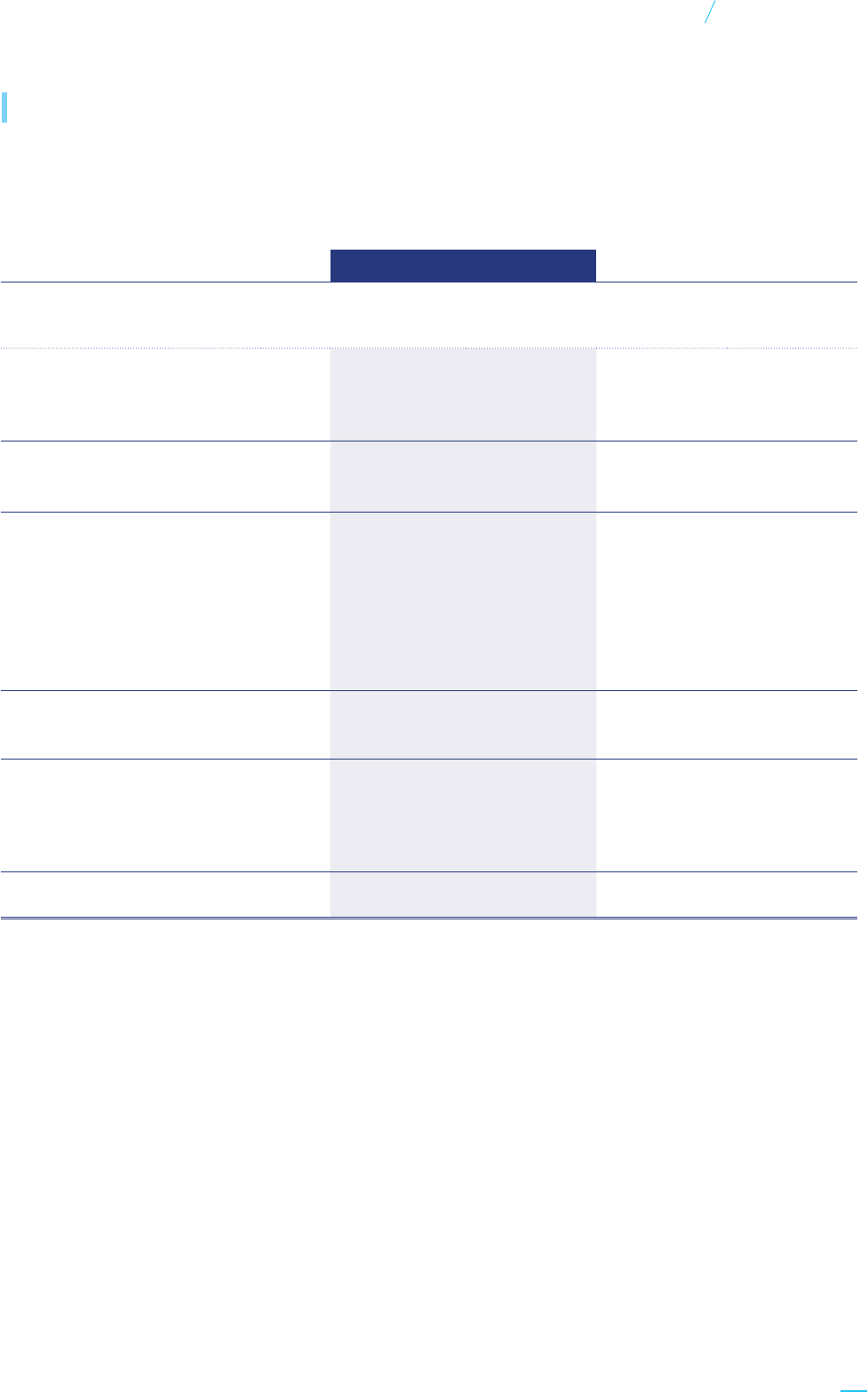
STATEMENT OF
COMPREHENSIVE INCOME
for the year ended 31 December 2022
Notes 2022 2021
US$ KHR’000 US$ KHR’000
(Note 2.3) (Note 2.3)
Operating income
Interest income 21 6,387,859 26,107,180 2,182,518 8,878,483
Interest expense 21 (36,345) (148,542) (6,381) (25,958)
Net interest income 6,351,514 25,958,638 2,176,137 8,852,525
Net fee and commission 24,062 98,341 46,289 188,304
Foreign exchange loss (527,795) (2,157,098) (192,500) (783,090)
Total operating income 5,847,781 23,899,881 2,029,926 8,257,739
Personnel expenses 22 (1,964,642) (8,029,492) (1,266,645) (5,152,712)
Depreciation and amortization 23 (1,025,148) (4,189,780) (770,884) (3,135,956)
General and administrative
expenses 24 (929,799) (3,800,089) (627,216) (2,551,515)
Provision for expected credit
losses 8 (2,028,607) (8,290,917) (1,032,998) (4,202,236)
Loss before income tax (100,415) (410,397) (1,667,817) (6,784,680)
Income tax benefit (expense) 14 510,848 2,087,836 (22,535) (91,672)
Net profit (loss) 410,433 1,677,439 (1,690,352) (6,876,352)
Other comprehensive income item:
Exchange dierence on
translation - 12,228,453 - 6,587,151
Total comprehensive income
(loss) for the year 410,433 13,905,892 (1,690,352) (289,201)
The accompanying notes from 1 to 29 form an integral part of these financial statements.
55
Annual Report 2022
SME Bank of Cambodia
Financial Statements

STATEMENT OF
CHANGES IN EQUITY
for the year ended 31 December 2022
Share capital
Contributions from Ministry
of Economy and Finance
(Note 20) Accumulated losses
Regulatory reserves
(Note 3.13)
Cumulative
translation
dierences
on
translation Total
US$ KHR’000 US$ KHR’000 US$ KHR’000 US$ KHR’000 KHR’000 US$ KHR’000
(Note 2.3) (Note 2.3) (Note 2.3) (Note 2.3) (Note 2.3) (Note 2.3)
As at 1
January 2022 150,000,000 600,000,000 1,308,082 5,232,328 (3,091,802) (12,590,063) - - 11,190,860 148,216,280 603,833,125
Capital
injection 50,000,000 200,000,000 - - - - - - - 50,000,000 200,000,000
Net profit for
the year - - - - 410,433 1,677,439 - - - 410,433 1,677,439
Return of
contribution
to MEF (Note
20) - - (61,200) (244,800) - - - - - (61,200) (244,800)
Currency
translation
dierence - - - - - - - - 12,228,453 - 12,228,453
As at 31
December
2022 200,000,000 800,000,000 1,246,882 4,987,528 (2,681,369) (10,912,624) - - 23,419,313 198,565,513 817,494,217
As at 1
January 2021 100,000,000 400,000,000 1,308,082 5,232,328 (1,438,492) (5,864,731) 37,042 151,020 4,603,709 99,906,632 404,122,326
Capital
injection 50,000,000 200,000,000 - - - - - - - 50,000,000 200,000,000
Net profit for
the year - - - - (1,690,352) (6,876,352) - - - (1,690,352) (6,876,352)
Transfer from
regulatory
reserve - - - - 37,042 151,020 (37,042) (151,020) - - -
Currency
translation
dierence - - - - - - - - 6,587,151 - 6,587,151
As at 31
December
2021 150,000,000 600,000,000 1,308,082 5,232,328 (3,091,802) (12,590,063) - - 11,190,860 148,216,280 603,833,125
The accompanying notes from 1 to 29 form an integral part of these financial statements.
56
Annual Report 2022
SME Bank of Cambodia
Financial Statements

STATEMENT OF CASH FLOWS
for the year ended 31 December 2022
Notes 2022 2021
US$ KHR’000 US$ KHR’000
(Note 2.3) (Note 2.3)
OPERATING ACTIVITIES
Loss before income tax (100,415) (410,397) (1,667,817) (6,784,680)
Adjustments for:
Depreciations and amortisation 23 1,025,148 4,189,780 770,884 3,135,956
Return of contribution to MEF 20 (61,200) (250,124) - -
Provision for expected credit
losses 8 2,028,607 8,290,917 1,798,998 7,318,324
Interest expense on lease
liabilities 12 24,264 99,167 6,031 24,534
Changes in:
Statutory deposit (299,019) (1,222,091) (16,957) (68,981)
Balance with other banks with
original maturity more than 3
months 7 (17,253,163) (70,513,677) (2,634,000) (10,715,112)
Loans and advances 8 (103,217,888) (421,851,508) (64,289,137) (261,528,209)
Other assets (152,797) (624,481) 23,004 93,580
Deposits from other financial
institutions 15 33,622 137,413 12,148 49,418
Deposits from customers 16 4,155,544 16,983,708 495,378 2,015,198
Other liabilities 18 515,184 2,105,557 (91,410) (371,856)
Cash used in operations (113,302,113) (463,065,736) (65,592,878) (266,831,828)
Income tax paid 14 (66,941) (273,588) (19,840) (80,709)
Net cash used in operating
activities (113,369,054) (463,339,324) (65,612,718) (266,912,537)
INVESTING ACTIVITIES
Purchases of:
Property and equipment 11 (1,527,644) (6,243,481) (169,080) (687,817)
Software 10 (78,154) (319,415) (316,194) (1,286,277)
Net cash used in investing
activities (1,605,798) (6,562,896) (485,274) (1,974,094)
57
Annual Report 2022
SME Bank of Cambodia
Financial Statements

Notes 2022 2021
US$ KHR’000 US$ KHR’000
(Note 2.3) (Note 2.3)
FINANCING ACTIVITIES
Proceeds from:
Additional share capital 19 50,000,000 204,350,000 50,000,000 203,400,000
Proceeds from borrowings 17 74,016,274 302,504,512 - -
Lease payments 12 (233,768) (955,410) (129,075) (525,077)
Net cash provided by financing
activities 123,782,506 505,899,102 49,870,925 202,874,923
Net increase (decrease) in cash
and cash equivalents 8,807,654 35,996,882 (16,227,067) (66,011,708)
Cash and cash equivalents at
beginning of year 35,324,713 143,912,881 51,551,780 208,526,950
Currency translation dierences - 1,783,192 - 1,397,639
Cash and cash equivalents at
end of year 5 44,132,367 181,692,955 35,324,713 143,912,881
Additional information on operational cash flow from interest:
Notes 2022 2021
US$ KHR’000 US$ KHR’000
(Note 2.3) (Note 2.3)
Interest received 5,729,664 23,417,137 2,182,518 8,878,483
Interest paid 25,512 104,268 6,089 24,770
58
Annual Report 2022
SME Bank of Cambodia
Financial Statements

NOTES TO THE FINANCIAL
STATEMENTS
1. CORPORATE INFORMATION
The Bank was incorporated in the Kingdom of Cambodia as a state-owned company organized under
Law on the General Statute of Public Enterprise with the registration certificate Co. 0001 M/2020
issued by the Ministry of Commerce on 13 January 2020. The Bank is under technical and financial
supervision of Ministry of Economy and Finance (“MEF”).
The Bank obtained its banking license from the National Bank of Cambodia (“NBC”) on 27 February
2020 to operate as a commercial bank with a permanent validity.
The Bank’s principal business activities are provisions of financing and commercial banking services
to support small and medium enterprises in the Kingdom of Cambodia.
The Bank’s registered oce address is located at at MEF Business Development Center, #S, OCIC
Street, Phum Kien Khleang, Sangkat Chraoy Chongvar, Khan Chraoy Chongvar, Phnom Penh, Cambodia.
As at 31 December 2022, the Bank had 144 employees (2021: 52 employees).
Approval of the Bank’s financial statements
The financial statements were authorized for issue by the Board of Directors on 22 March 2022.
2. BASIS OF PREPARATION OF THE FINANCIAL STATEMENTS
The financial statements, expressed in United States dollar (“US$”), have been prepared on a historical
cost basis, except otherwise indicated.
2.1. Basis of preparation
The Bank’s financial statements have been prepared in accordance with Cambodian International
Financial Reporting Standards (“CIFRSs”).
2.2. Fiscal year
The Bank’s fiscal year starts on 1 January and ends on 31 December.
2.3. Functional and presentation currency
Presentation currency
The financial statements are presented in United State Dollar (“US$”), which is the Bank’s functional
and presentation currency.
Transactions and balances
Transactions in currencies other than US$ are translated into US$ at the foreign exchange rate ruling
at the date of the transaction. Monetary assets and liabilities denominated in currencies other than
as at 31 December 2022 and for the year then ended
59
Annual Report 2022
SME Bank of Cambodia
Financial Statements

US$ which are outstanding at the reporting date are translated into US$ at the rate of exchange ruling
at that date. Exchange dierences arising on translation are recognized in profit or loss.
Translation of US$ in Khmer Riels (“KHR”)
The translation of the US$ amounts into thousands KHR (“KHR’000”) is presented in the financial
statements to comply with the Law on Accounting and Audit dated 11 April 2016 using the closing and
average rates for the year.
Assets and liabilities included in the statement of financial position are translated at the closing rate
prevailing at the end of each reporting date, whereas income and expense items presented in the
statement of comprehensive income are translated at the average rate for the year then ended. All
resulting exchange dierences are recognized in the statement of comprehensive income. Such
translation should not be construed as a representation that the US$ amounts represent, or have been
or could be, converted into KHR at that or any other rate. All values in KHR are rounded to the nearest
thousand (“KHR’000”), except if otherwise indicated.
The financial statements are presented in KHR based on the applicable exchange rates per US$1 as
follows:
2022 2021
Closing rate 4,117 4,074
Average rate 4,087 4,068
2.4 Rounding of amounts
Except as indicated otherwise, amounts in the financial statements have been rounded o to the
nearest dollar for US$ amounts and nearest thousand for KHR amounts.
2.5 New and amended standards and interpretations
The accounting policies adopted are consistent with those of the previous financial year, except that
the Bank has adopted the following new accounting pronouncements starting 1 January 2022. Adoption
of these pronouncements did not have any significant impact on the Bank’s financial position or
performance unless otherwise indicated.
• Onerous Contract – Costs of Fulfilling a Contract – Amendments to CIAS 37
• Reference to Conceptual Framework – Amendments to CIFRS 3
• Property, Plant and Equipment; Proceeds before Intended Use – Amendments to CIAS 16 Leases
• CIFRS 1 First-time Adoption of International Financial Reporting Standards - Subsidiary as a first-
time adopter
• CIFRS 9 Financial Instruments - Fees in the ’10 per cent’ test for derecognition of financial liabilities
• CIAS 41 Agriculture – Taxation in fair value measurements
2.6 Standards issued but not yet eective
The standards and interpretations that are issued, but not yet eective, up to the date of issuance of
the Bank’s financial statements are disclosed below. These standards and amendments to CIFRSs
issued but not yet eective are not expected to have a significant impact on the financial position or
performance of the Bank.
60
Annual Report 2022
SME Bank of Cambodia
Financial Statements

Eective beginning on or after 1 January 2023
• CIFRS 17, Insurance Contracts
•
Amendments to CIAS 1, First-time Adoption of Cambodian International Financial Reporting
Standards - Classification of liabilities as current and non-current
•
Amendments to CIAS 1, First-time Adoption of Cambodian International Financial Reporting
Standards, and CIFRS Practice Statement 2 Making Materiality Judgments - Disclosure of Accounting
Policies
•
Amendments to CIAS 8, Accounting Policies, Changes in Accounting Estimates and Errors - Definition
of Accounting Estimates
• Amendments to CIAS 12, Income Taxes - Deferred Tax related to Assets and Liability arising from
a Single Transaction.
3. SUMMARY OF SIGNIFICANT ACCOUNTING POLICES
3.1 Cash and cash equivalents
Cash and cash equivalents consist of cash on hand, unrestricted balance with the NBC, balances with
other banks and highly-liquid financial assets with original maturities of three months or less from the
date of acquisition that are subject to an insignificant risk of changes in their fair value, and are used
by the Bank in the management of its short-term commitments.
3.2 Financial instruments
The Bank’s financial assets and liabilities include cash on hand, balances with the NBC (except statutory
deposit), balances with other banks, loans and advances to customers, other assets (except for non-
refundable deposits and prepayments), deposits from other financial institutions, deposits from
customers, borrowing, and other liabilities (except for tax payable) which are measured at amortized
cost following the business model discussed in Note 3.2.1.
Initial recognition and measurement
Financial assets and financial liabilities are recognized in the Bank’s statement of financial position
when the Bank becomes a party to the contractual provisions of the instruments.
Financial assets and financial liabilities are initially measured at fair value. Transaction costs that are
directly attributable to the acquisition or issue of financial assets and financial liabilities (other than
financial assets and financial liabilities at fair value through profit or loss) are added to or deducted
from the fair value of the financial assets or financial liabilities, as appropriate, on initial recognition.
If the transaction price diers from fair value at initial recognition, the Bank will account for such
dierence as follows:
• If fair value is evidenced by a quoted price in an active market for an identical asset or liability or
based on a valuation technique that uses only data from observable markets, then the dierence
is recognized in profit or loss on initial recognition (i.e. day 1 profit or loss);
• In all other cases, the fair value will be adjusted to bring it in line with the transaction price (i.e. day
1 profit or loss will be deferred by including it in the initial carrying amount of the asset or liability).
3.2.1 Business model
The Bank measures balances with the NBC (except for statutory deposit), balances with other banks,
loans and advances to customers, and other assets (except for non-refundable deposits and prepayments)
61
Annual Report 2022
SME Bank of Cambodia
Financial Statements

at amortized cost based on the business model or management of the asset’s contractual term when
the following conditions are met:
•
The financial asset is held within a business model with the objective to hold financial asset in order
to collect contractual cash flow;
•
The contractual terms of the financial asset give rise on specified dates to cash flows that are solely
payment of principal and interest (“SPPI”) on the principal amount outstanding.
The details of these conditions are outlined below.
The Bank makes an assessment of the objective of a business model in which an asset is held at a
portfolio level that best reflects how the assets are managed. Factors considered includes:
• The stated policies and objectives for the portfolio and the operation of those policies in practice.
In particular, whether management’s strategy focuses on earning contractual interest revenue,
maintaining a particular interest rate profile, matching the duration of the financial assets to the
duration of the liabilities that are funding those assets or realizing cash flows through the sale of
the assets;
• How the performance of the portfolio is evaluated and reported to the Bank’s management;
• The risks that aect the performance of the business model (and the financial assets held within
that business model) and its strategy for how those risks are managed;
• How managers of the business are compensated (e.g. whether compensation is based on the fair
value of the assets managed or the contractual cash flows collected); and
•
The frequency, volume and timing of sales in prior periods, the reasons for such sales and its
expectations about future sales activity. However, information about sales activity is not considered
in isolation, but as part of an overall assessment of how the Bank’s stated objective for managing
the financial assets is achieved and how cash flows are realized.
Financial assets that are held for trading or managed and whose performance is evaluated on a fair
value basis are measured at FVTPL because they are neither held to collect contractual cash flows
nor held both to collect contractual cash flows and to sell financial assets.
3.2.2 Solely payments of principal and interest (“SPPI”) test
As a second step of its classification process, the Bank assess the contractual terms of the financial
asset to identify whether they meet the SPPI test.
For purposes of this assessment, ‘principal’ is defined as the fair value of the financial asset on initial
recognition. ‘Interest’ is defined as consideration for the time value of money and for the credit risk
associated with the principal amount outstanding during a particular period of time and for other basic
lending risks and costs (e.g. liquidity risk and administrative costs), as well as profit margin.
In assessing whether the contractual cash flows are SPPI, the Bank considers the contractual terms
of the instrument. This includes assessing whether the financial asset contains a contractual term that
could change the timing or amount of contractual cash flows such that it would not meet this condition.
In making the assessment, the Bank considers:
• Contingent events that would change the amount and timing of cash flows;
• Leverage features;
• Prepayment and extension terms;
• Terms that limit the Bank’s claim to cash flows from specified assets (e.g. non-recourse loans); and
• Features that modify consideration of the time value of money (e.g. periodical reset of interest
rates).
62
Annual Report 2022
SME Bank of Cambodia
Financial Statements

Non-recourse loans
In some cases, loans made by the Bank that are secured by collateral of the borrower limit the Bank’s
claim to cash flows of the underlying collateral (non-recourse loans). The Bank applies judgment in
assessing whether the non-recourse loans meet the SPPI criterion. The Bank typically considers the
following information when making this judgement:
•
Whether the contractual arrangement specifically defines the amounts and dates of the cash
payments of the loan;
• The fair value of the collateral relative to the amount of the secured financial asset;
•
The ability and willingness of the borrower to make contractual payments, notwithstanding a decline
in the value of collateral;
•
Whether the borrower is an individual or a substantive operating entity or is a special-purpose entity;
• The Bank’s risk of loss on the asset relative to a full-recourse loan;
•
The extent to which the collateral represents all or a substantial portion of the borrower’s assets; and
• Whether the Bank will benefit from any upside from the underlying assets.
Reclassification of financial assets and liabilities
Financial assets are not reclassified subsequent to their initial recognition, except in the period after
the Bank changes its business model for managing financial assets.
3.2.3 Derecognition of financial assets and liabilities
Financial assets
The Bank derecognizes a financial asset when the contractual rights to the cash flows from the financial
asset expire, or it transfers the rights to receive the contractual cash flows in a transaction in which
substantially all of the risks and rewards of ownership of the financial asset are transferred or in which
the Bank neither transfers nor retains substantially all of the risks and rewards of ownership and it
does not retain control of the financial asset.
On derecognition of a financial asset, the dierence between the carrying amount of the asset (or the
carrying amount allocated to the portion of the asset derecognized) and the sum of (i) the consideration
received (including any new asset obtained less any new liability assumed) and (ii) any cumulative
gain or loss that had been recognized in OCI is recognised in profit and loss.
Financial liabilities
A financial liability is derecognized when the obligation under the liability is discharged, cancelled or
expires. Where an existing financial liability is replaced by another from the same lender on substantially
dierent terms, or the terms of an existing liability are substantially modified, such an exchange or
modification is treated as a derecognition of the original liability and the recognition of a new liability.
The dierence between the carrying value of the original financial liability and the consideration paid
is recognized in profit or loss.
3.2.4 Modifications and forbearance of financial assets
If the terms of a financial asset are modified, then the Bank evaluates whether the cash flows of the
modified asset are substantially dierent.
If the cash flows are substantially dierent, then the contractual rights to cash flows from the original
financial asset are deemed to have expired. In this case, the original financial asset is derecognized
and a new financial asset is recognized at fair value plus any eligible transaction costs. Any fees received
63
Annual Report 2022
SME Bank of Cambodia
Financial Statements

as part of the modification are accounted for as follows:
•
Fees that are considered in determining the fair value of the new asset and fees that represent
reimbursement of eligible transaction costs are included in the initial measurement of the asset; and
• Other fees are included in profit and loss as part of the gain or loss on derecognition. If cash flows
are modified when the borrower is in financial diculties, then the objective of the modification is
usually to maximize recovery of the original contractual terms rather than to originate a new asset
with substantially dierent terms. If the Bank plans to modify a financial asset in a way that would
result in forgiveness of cash flows, then it first considers whether a portion of the asset should be
written o before the modification takes place (see below for write-o policy). This approach impacts
the result of the quantitative evaluation and means that the derecognition criteria are not usually
met in such cases.
•
If the modification of a financial asset measured at amortized cost or FVOCI does not result in
derecognition of the financial asset, then the Bank first recalculates the gross carrying amount of the
financial asset using the original eective interest rate of the asset and recognizes the resulting
adjustment as a modification gain or loss in profit and loss. For floating-rate financial assets, the
original eective interest rate used to calculate the modification gain or loss is adjusted to reflect
current market terms at the time of the modification. Any costs or fees incurred and fees received
as part of the modification adjust the gross carrying amount of the modified financial asset and are
amortized over the remaining term of the modified financial asset.
• If such a modification is carried out because of financial diculties of the borrower, then the gain or
loss is presented together with impairment losses. In other cases, it is presented as interest income
calculated using the eective interest rate method.
3.2.5 Osetting
Financial assets and financial liabilities are oset and the net amount presented in the statement of
financial position when, and only when, the Bank has a legal right to set o the amounts and it intends
either to settle them on a net basis or to realize the asset and settle the liability simultaneously.
3.2.6 Fair value measurement
‘Fair value’ is the price that would be received to sell an asset or paid to transfer a liability in an orderly
transaction between market participants at the measurement date in the principal or, in its absence,
the most advantageous market to which the Bank has access at that date. The fair value of a liability
reflects its non-performance risk.
When one is available, the Bank measures the fair value of an instrument using the quoted price in an
active market for that instrument. A market is regarded as ‘active’ if transactions for the asset or
liability take place with sucient frequency and volume to provide pricing information on an ongoing
basis.
If there is no quoted price in an active market, then the Bank uses valuation techniques that maximize
the use of relevant observable inputs and minimize the use of unobservable inputs. The chosen valuation
technique incorporates all of the factors that market participants would take into account in pricing
a transaction.
The best evidence of the fair value of a financial instrument on initial recognition is normally the
transaction price – i.e. the fair value of the consideration given or received. If the Bank determines
that the fair value on initial recognition diers from the transaction price and the fair value is evidenced
neither by a quoted price in an active market for an identical asset or liability nor based on a valuation
technique for which any unobservable inputs are judged to be insignificant in relation to the measurement,
then the financial instrument is initially measured at fair value, adjusted to defer the dierence between
the fair value on initial recognition and the transaction price. Subsequently, that dierence is recognized
64
Annual Report 2022
SME Bank of Cambodia
Financial Statements

in profit and loss on an appropriate basis over the life of the instrument but no later than when the
valuation is wholly supported by observable market data or the transaction is closed out.
If an asset or a liability measured at fair value has a bid price and an ask price, then the Bank measures
assets and long positions at a bid price and liabilities and short positions at an ask price.
Portfolios of financial assets and financial liabilities that are exposed to market risk and credit risk that
are managed by the Bank on the basis of the net exposure to either market or credit risk are measured
on the basis of a price that would be received to sell a net long position (or paid to transfer a net short
position) for the particular risk exposure. Portfolio-level adjustments – e.g. bid-ask adjustment or credit
risk adjustments that reflect the measurement on the basis of the net exposure – are allocated to the
individual assets and liabilities on the basis of the relative risk adjustment of each of the individual
instruments in the portfolio.
The fair value of a financial liability with a demand feature (e.g. a demand deposit) is not less than the
amount payable on demand, discounted from the first date on which the amount could be required
to be paid.
The Bank recognizes transfers between levels of the fair value hierarchy as of the end of the reporting
period during which the change has occurred.
3.2.7 Expected credit losses (“ECLs”)
The Bank recognizes allowance for ECLs on the following financial instruments that are measured at
amortized cost:
• Balances with other banks;
• Loans and advances to customers; and
• Loan commitments and financial guarantee contracts issued.
ECLs are required to be measured through a loss allowance at an amount equal to:
• 12-month ECL, i.e. lifetime ECL that result from those default events on the financial instrument that
are possible within 12 months after the reporting date, (referred to as Stage 1); or
•
Full lifetime ECL, i.e. lifetime ECL that result from all possible default events over the life of the financial
instrument, (referred to as Stage 2 and Stage 3).
A loss allowance for full lifetime ECL is required for a financial instrument if the credit risk on that
financial instrument has increased significantly since initial recognition. For all other financial instruments,
ECLs are measured at an amount equal to the12-month ECL. More details on the determination of a
significant increase in credit risk are provided below.
ECLs are a probability-weighted estimate of the present value of credit losses. These are measured
as the present value of the dierence between the cash flows due to the Bank under the contract and
the cash flows that the Bank expects to receive arising from the weighting of multiple future economic
scenarios, discounted at the asset’s EIR.
•
for undrawn loan commitments, the ECL is the dierence between the present value of the dierence
between the contractual cash flows that are due to the Bank if the holder of the commitment draws
down the loan and the cash flows that the Bank expects to receive if the loan is drawn down; and
•
for financial guarantee contracts, the ECL is the dierence between the expected payments to
reimburse the holder of the guaranteed debt instrument less any amounts that the Bank expects to
receive from the holder, the debtor or any other party.
The Bank measures ECL on an individual basis, or on a collective basis for portfolios of loans that share
similar economic risk characteristics. The measurement of the loss allowance is based on the present
65
Annual Report 2022
SME Bank of Cambodia
Financial Statements

value of the asset’s expected cash flows using the asset’s original EIR, regardless of whether it is
measured on an individual basis or a collective basis.
Credit-impaired financial assets
A financial asset is ‘credit-impaired’ when one or more events that have a detrimental impact on the
estimated future cash flows of the financial asset have occurred. Credit-impaired financial assets are
referred to as Stage 3 assets. Evidence of credit-impairment includes observable data about the
following events:
• Significant financial diculty of the borrower or issuer;
• A breach of contract such as a default or past due event;
• The lender of the borrower, for economic or contractual reasons relating to the borrower’s financial
diculty, having granted to the borrower a concession that the lender would not otherwise consider;
• The disappearance of an active market for a security because of financial diculties; or
• The purchase of a financial asset at a deep discount that reflects the incurred credit losses.
It may not be possible to identify a single discrete event. Instead, the combined eect of several events
may have caused financial assets to become credit-impaired. The Bank assesses whether debt
instruments that are financial assets measured at amortized cost or FVTOCI are credit-impaired at
each reporting date. To assess if sovereign and corporate debt instruments are credit impaired, the
Bank considers factors such as bond yields, credit ratings and the ability of the borrower to raise
funding.
A loan is considered credit-impaired when a concession is granted to the borrower due to a deterioration
in the borrower’s financial condition, unless there is evidence that as a result of granting the concession
the risk of not receiving the contractual cash flows has reduced significantly and there are no other
indicators of impairment. For financial assets where concessions are contemplated but not granted
the asset is deemed credit impaired when there is observable evidence of credit-impairment including
meeting the definition of default.
The definition of default (see below) includes unlikeliness to pay indicators and a backstop if amounts
are overdue for 90 days or more.
Definition of default
Critical to the determination of ECL is the definition of default. The definition of default is used in
measuring the amount of ECL and in the determination of whether the loss allowance is based on
12-month or lifetime ECL, as default is a component of the probability of default (“PD”) which aects
both the measurement of ECLs and the identification of a significant increase in credit risk.
The Bank considers the following as constituting an event of default:
• The borrower is past due more than 90 days on any material credit obligation to the Bank; or
• The borrower is unlikely to pay its credit obligations to the Bank in full.
This definition of default is used by the Bank for accounting purposes as well as for internal credit risk
management purposes and is broadly aligned to the regulatory definition of default. The definition of
default is appropriately tailored to reflect dierent characteristics of dierent types of assets. Overdrafts
are considered as being past due once the customer has breached an advised limit or has been advised
of a limit smaller than the current amount outstanding.
When assessing if the borrower is unlikely to pay its credit obligation, the Bank takes into account
both qualitative and quantitative indicators. The information assessed depends on the type of the
66
Annual Report 2022
SME Bank of Cambodia
Financial Statements

asset, for example in corporate lending a qualitative indicator used is the breach of covenants, which
is not relevant for retail lending. Quantitative indicators, such as overdue status and non-payment on
another obligation of the same counterparty are key inputs in this analysis. The Bank uses a variety
of sources of information to assess default which are either developed internally or obtained from
external sources. As noted in the definition of credit impaired financial assets above, default is evidence
that an asset is credit impaired. Therefore, credit impaired assets will include defaulted assets, but will
also include other non-defaulted given the definition of credit impaired is broader than the definition
of default.
Significant increase in credit risk
The Bank monitors all financial assets, issued loan commitments and financial guarantee contracts
that are subject to the impairment requirements to assess whether there has been a significant increase
in credit risk since initial recognition. If there has been a significant increase in credit risk, the Bank
will measure the loss allowance based on lifetime rather than 12-month ECL. Financial assets with ‘low’
credit risk at the reporting date are deemed not to have had a significant increase in credit risk. As a
result, the Bank monitors all financial assets, issued loan commitments and financial guarantee contracts
that are subject to impairment for significant increase in credit risk.
In assessing whether the credit risk on a financial instrument has increased significantly since initial
recognition, the Bank compares the risk of a default occurring on the financial instrument at the
reporting date based on the remaining maturity of the instrument with the risk of a default occurring
that was anticipated for the remaining maturity at the current reporting date when the financial
instrument was first recognized. In making this assessment, the Bank considers both quantitative and
qualitative information that is reasonable and supportable, including historical experience and forward-
looking information that is available without undue cost or eort, based on the Bank’s historical
experience and expert credit assessment including forward-looking information.
Multiple economic scenarios form the basis of determining the probability of default at initial recognition
and at subsequent reporting dates. Dierent economic scenarios will lead to a dierent probability
of default. It is the weighting of these dierent scenarios that forms the basis of a weighted average
probability of default that is used to determine whether credit risk has significantly increased.
For corporate lending, forward-looking information includes the future prospects of the industries in
which the Bank’s counterparties operate, obtained from economic expert reports, financial analysts,
governmental bodies, relevant think-tanks and other similar organizations, as well as consideration of
various internal and external sources of actual and forecast economic information. For retail, lending
forward-looking information includes the same economic forecasts as corporate lending with additional
forecasts of local economic indicators, particularly for regions with a concentration to certain industries,
as well as internally generated information of customer payment behavior. The Bank allocates its
counterparties to a relevant internal credit risk grade depending on their credit quality. The quantitative
information is a primary indicator of significant increase in credit risk and is based on the change in
lifetime PD by comparing:
• The remaining lifetime PD at the reporting date; with
•
The remaining lifetime PD for this point in time that was estimated based on facts and circumstances
at the time of initial recognition of the exposure.
The PDs used are forward-looking and the Bank uses the same methodologies and data used to
measure the loss allowance for ECL. The qualitative factors that indicate significant increase in credit
risk are reflected in PD models on a timely basis. However, the Bank still considers separately some
qualitative factors to assess if credit risk has increased significantly. For corporate lending there is
particular focus on assets that are included on a ‘watch list’ given an exposure is on a watch list once
there is a concern that the creditworthiness of the specific counterparty has deteriorated. For retail
67
Annual Report 2022
SME Bank of Cambodia
Financial Statements

lending, the Bank considers the expectation of forbearance and payment holidays, credit scores and
events such as unemployment, bankruptcy, divorce or death.
Given that a significant increase in credit risk since initial recognition is a relative measure, a given
change, in absolute terms, in the PD will be more significant for a financial instrument with a lower
initial PD than compared to a financial instrument with a higher PD.
As a backstop when an asset becomes 30 days past due, the Bank considers that a significant increase
in credit risk has occurred and the asset is in stage 2 of the impairment model, i.e. the loss allowance
is measured as the lifetime ECL. In addition, loans that are individually assessed and are included on
a watch list are in stage 2 of the impairment model. As noted if there is evidence of credit-impairment
the assets are at stage 3 of the impairment model.
Write-o
Loans and debt securities are written o when the Bank has no reasonable expectations of recovering
the financial asset (either in its entirety or a portion of it). This is the case when the Bank determines
that the borrower does not have assets or sources of income that could generate sucient cash flows
to repay the amounts subject to the write-o. A write-o constitutes a derecognition event. The Bank
may apply enforcement activities to financial assets written o. Recoveries resulting from the Bank’s
enforcement activities will result in impairment gains, which will be presented in ‘net impairment loss
on financial assets/other income’ in profit or loss.
Presentation of allowance for ECL in the statement of financial position
Loss allowances for ECL are presented in the statement of financial position as follows:
• For financial assets measured at amortized cost: as a deduction from the gross carrying amount of
the assets;
• For loan commitments and financial guarantee contracts: as a provision; and
•
Where a financial instrument includes both a drawn and an undrawn component, and the Bank cannot
identify the ECL on the loan commitment component separately from those on the drawn component:
the Bank presents a combined loss allowance for both components. The combined amount is presented
as a deduction from the gross carrying amount of the drawn component. Any excess of the loss
allowance over the gross amount of the drawn component is presented as a provision.
3.2.8 Financial liabilities and equity
Debt and equity instruments that are issued are classified as either financial liabilities or as equity in
accordance with the substance of the contractual arrangement.
A financial liability is a contractual obligation to deliver cash or another financial asset or to exchange
financial assets or financial liabilities with another entity under conditions that are potentially unfavourable
to the Bank or a contract that will or may be settled in the Bank’s own equity instruments and is a
non-derivative contract for which the Bank is or may be obliged to deliver a variable number of its
own equity instruments, or a derivative contract over own equity that will or may be settled other
than by the exchange of a fixed amount of cash (or another financial asset) for a fixed number of the
Bank’s own equity instruments.
An equity instrument is any contract that evidences a residual interest in the assets of an entity after
deducting all of its liabilities.
Equity instruments issued by the Bank are recognized at the proceeds received, net of direct issue
costs. Repurchase of the Bank’s own equity instruments is recognized and deducted directly in equity.
68
Annual Report 2022
SME Bank of Cambodia
Financial Statements

No gain/loss is recognized in profit or loss on the purchase, sale, issue or cancellation of the Bank’s
own equity instruments.
Other financial liabilities
Other financial liabilities, including borrowings, are initially measured at fair value, net of transaction
costs. Other financial liabilities are subsequently measured at amortized cost using the eective interest
method.
Foreign exchange gains and losses
For financial liabilities that are denominated in a foreign currency and are measured at amortized cost
at the end of each reporting period, the foreign exchange gains and losses are determined based on
the amortized cost of the instruments. These foreign exchange gains and losses are recognized in the
‘other gains and losses’ line item in profit or loss for financial liabilities that are not part of a designated
hedging relationship. For those which are designated as a hedging instrument for a hedge of foreign
currency risk, foreign exchange gains and losses are recognized in other comprehensive income and
accumulated in a separate component of equity.
The fair value of financial liabilities denominated in a foreign currency is determined in that foreign
currency and translated at the spot rate at the end of the reporting period. For financial liabilities that
are measured as at FVTPL, the foreign exchange component forms part of the fair value gains or losses
and is recognized in profit or loss for financial liabilities that are not part of a designated hedging
relationship.
Modification and derecognition of financial liabilities
The Bank derecognizes a financial liability when its terms are modified and the cash flows of the
modified liability are substantially dierent. In this case, a new financial liability based on the modified
terms is recognized at fair value. The dierence between the carrying amount of the financial liability
derecognized and consideration paid is recognized in profit and loss. Consideration paid includes
non-financial assets transferred, if any, and the assumption of liabilities, including the new modified
financial liability.
If the modification of a financial liability is not accounted for as derecognition, then the amortized cost
of the liability is recalculated by discounting the modified cash flows at the original eective interest
rate and the resulting gain or loss is recognized in profit and loss. For floating-rate financial liabilities,
the original eective interest rate used to calculate the modification gain or loss is adjusted to reflect
current market terms at the time of the modification. Any costs and fees incurred are recognized as
an adjustment to the carrying amount of the liability and amortized over the remaining term of the
modified financial liability by re-computing the eective interest rate on the instrument.
3.3 Property and equipment
Items of property and equipment are stated at cost less accumulated depreciation and accumulated
impairment losses, if any. Where an item of property and equipment have dierent useful lives, then
they are accounted for as separate items (major components) of property and equipment.
Any gains or losses on disposal of an item of property and equipment is recognized in profit or loss.
Depreciation is calculated to write o the cost of items of property and equipment less their estimated
residual values using the straight-line method over their estimated useful lives, and is generally
recognized in the statement of comprehensive income.
69
Annual Report 2022
SME Bank of Cambodia
Financial Statements

Useful life based on number of years
Leasehold improvements 5
Equipment 4
Computer equipment 3
Furniture and fixture 4
Motor vehicles 5
Depreciation methods, useful lives and residual values are reviewed at each reporting date and adjusted
if appropriate.
During the year, the Bank has changed the useful life of the leasehold improvements from 3 years to
5 years, in order to reflect the shorter of lease term of the underlying asset.
Work in progress is not depreciated until they are ready for use as intended by the management.
Subsequent expenditure is capitalised only when it is probable that the future economic benefits of
the expenditure will flow to the Bank. Ongoing repairs and maintenance are expensed as incurred.
Gains or losses on disposal of an item of property and equipment are determined by comparing the
proceeds from disposal with the carrying amount of property and equipment and are recognized net
within “other income” in the statement of comprehensive income.
Fully depreciated property and equipment are retained in the statement of financial position until they
are disposed of or written-o.
3.4 Software
Computer software and related costs are stated at cost less accumulated amortisation and accumulated
impairment losses, if any. Amortisation is recognized in the statement of comprehensive income on a
straight-line basis at the rate of 20% per annum. If there is an indication that there has been a significant
change in amortisation rate or useful life of an intangible asset, the amortisation is revised prospectively
to reflect the new expectations.
Software in progress is not amortized until they are ready for use as intended by the management.
3.5 Leases
The Bank assesses whether a contract is or contains a lease, at inception of a contract.
The Bank recognizes a right-of-use assets and a corresponding lease liabilities with respect to all lease
agreements in which it is the lessee, except for leases of low value assets. For these leases, the Bank
recognizes the lease payments as an operating expense on a straight-line basis over the term of the
lease.
Right-of-use assets
The right-of-use assets comprise the initial measurement of the corresponding lease liabilities, lease
payments made at or before the commencement day and initial direct costs, if any. They are subsequently
measured at cost less accumulated depreciation and impairment losses.
Right-of-use assets are depreciated over the shorter period of lease term and useful life of the underlying
asset. The depreciation starts at the commencement date of the lease.
70
Annual Report 2022
SME Bank of Cambodia
Financial Statements

The right-of-use assets are presented as a separate line in the statement of financial position.
Lease liabilities
The lease liabilities are initially measured at the present value of the lease payments that are not paid
at the commencement date, discounted by using its incremental borrowing rate which is interest that
the Bank would have to pay to borrow over a similar term and with a similar security the funds necessary
to obtain an asset of a similar value to the right-of-use assets in a similar economic environment.
Lease payments included in the measurement of the lease liabilities comprise:
• Fixed lease payments, less any lease incentives;
• Payments of penalties for terminating the lease, if the lease term reflects the exercise of an option
to terminate the lease.
The lease liabilities are presented as a separate line in the statement of financial position.
The lease liabilities are subsequently measured by increasing the carrying amount to reflect interest
on the lease liabilities (using the eective interest method) and by reducing the carrying amount to
reflect the lease payments made.
The Bank remeasures the lease liabilities (and makes a corresponding adjustment to the related right-
of-use assets) whenever:
• The lease term has changed in which case the lease liabilities are remeasured by discounting the
revised lease payments using a revised discount rate.
• A lease contract is modified and the lease modification is not accounted for as a separate lease, in
which case the lease liabilities are remeasured by discounting the revised lease payments using a
revised discount rate.
Short-term leases and leases of low-value assets
The Bank applies the short-term lease recognition exemption to its short-term leases of vehicles (i.e.,
those leases that have a lease term of 12 months or less from the commencement date and do not
contain a purchase option). It also applies the lease of low-value assets recognition exemption, if any.
Lease payments on short-term leases and leases of low-value assets are recognized as expense on a
straight-line basis over the lease term.
3.6 Impairment of non-financial assets
The carrying amounts of the non-financial assets are reviewed at each reporting date to determine
whether there is any indication of impairment. If any such indication exists, the asset’s recoverable
amount is estimated.
The recoverable amount of an asset or cash-generating unit is the greater of its value in use and its
fair value less cost to sell. In assessing value in use, the estimated future cash flows are discounted to
their present value using a pre-tax discount rate that reflects current market assessments of the time
value of money and the risks specific to the asset. For the purpose of impairment testing, assets are
grouped together into the smallest group of assets that generates cash inflows from continuing use that
are largely independent of the cash inflows of other assets or groups of assets (the “cash-generating unit”).
An impairment loss is recognized if the carrying amount of an asset or its cash-generating unit exceeds
its estimated recoverable amount. Impairment losses are recognized in the statement of comprehensive
income.
71
Annual Report 2022
SME Bank of Cambodia
Financial Statements

3.7 Employee benefits
Short-term employee benefits
Short term employee benefits are accrued in the period in which the associated services are rendered
by the employees of the Bank.
3.8 Provisions
Provisions are recognized in the statement of financial position when the Bank has a present legal or
constructive obligation as a result of a past event, and it is probable that an outflow of resources
embodying economic benefits will be required to settle the obligation. If the eect is material, provisions
are determined by discounting the expected future cash flows at a pre-tax rate that reflects current
market assessments of the time value of money and, where appropriate, the risks specific to the liability.
3.9 Contributions from MEF
Contributions from MEF represents the Bank’s start-up costs and leasehold improvement shouldered
by MEF. The Bank recognised the start-up costs to profit or loss while capitalized expenditures are
recognized in the statement of financial position and are depreciated over its useful life.
The start-up costs and leasehold improvement were fully transferred by MEF to the Bank with no
refundable condition. Hence, the contributions from MEF are considered equity.
3.10 Eective interest method
Eective interest rate (“EIR”) is a rate that exactly discounts estimated future cash payments or receipts
through the expected life of the financial asset or financial liability to the gross carrying amount of a
financial asset or to the amortized cost of a financial liability.
When calculating the eective interest rate, the Bank estimates the expected cash flow by considering
all the contractual terms of the financial instrument, but not considering the expected credit loss. The
calculation includes all fees and points paid or received between parties to the contract that are an
integral part of the eective interest rate, transaction costs, and all other premiums or discounts.
Transaction costs are incremental costs that are directly attributable to the acquisition, issue or disposal
of a financial asset or financial liability. An incremental cost is one that would not have been incurred if
the entity had not acquired, issued or disposed of the financial instrument.
3.10.1 Interest income
Interest income are recognized in profit and loss using the eective interest method. It is calculated
by applying the eective interest rate to the gross carrying amount of financial asset except for:
•
Purchased or originated credit-impaired financial assets. Credit-adjusted EIR is applied to the amortized
cost of the financial assets.
•
Financial assets that are not purchased or originated credit-impaired financial assets but subsequently
have become credit-impaired financial assets. EIR to the amortized cost of the financial asset in
subsequent reporting periods is applied.
Credit-adjusted eective interest rate is a rate that exactly discounts the estimated future cash payment
or receipts through the expected life of the financial asset to the amortized cost of a financial assets
that is a purchased or originated credit-impaired financial asset.
72
Annual Report 2022
SME Bank of Cambodia
Financial Statements

Interest income calculated using the eective interest method presented in the statement of
comprehensive income includes interest on financial assets measured at amortized cost.
3.10.2 Interest expense
Interest expense is also calculated using the EIR method for all financial liabilities held at amortized
cost. Interest expense presented in the statement of comprehensive income includes financial liabilities
measured at amortized cost.
3.11 Other fees and income
Fee and commission income and expense that are integral to the eective interest rate on a financial
asset or financial liability are included in the eective interest rate.
A contract with a customer that results in a recognized financial instrument in the Bank’s financial
statements may be partially in the scope of CIFRS 9 and partially in the scope of CIFRS 15. If this is
the case, then the Bank first applies CIFRS 9 to separate and measure the part of the contract that is
in the scope of CIFRS 9 and then applies CIFRS 15 to the residual. The Bank follows a five-step model
to account for revenue arising from contracts with customers under CIFRS 15. The five-step model is
as follows:
i) Identify the contract(s) with a customer
ii) Identify the performance obligations in the contract
iii) Determine the transaction price
iv) Allocate the transaction price to the performance obligation in the contract
v) Recognize revenue when (or as) the entity satisfies a performance obligation
Fees and commission income are recognized as the related services are performed.
3.12 Income tax
Income tax on the statement of comprehensive income for the year comprises current and deferred
tax. Income tax is recognized in the profit and loss except to the extent that it relates to items recognized
directly to equity, in which case it is recognized in equity.
Current tax is the expected tax payable on the taxable income for the year using tax rates enacted or
substantially enacted at the reporting date, and any adjustments to tax payable in respect of previous
years.
Deferred tax is provided using the balance sheet method, providing for temporary dierences between
the carrying amounts of assets and liabilities for financial reporting purposes and the amounts used
for taxation purposes.
The amount of deferred tax provided is based on the expected manner of realization or settlement of
the carrying amount of assets and liabilities, using tax rates enacted at the reporting date.
A deferred tax asset is recognized only to the extent that it is probable that future taxable profits will
be available against which the asset can be utilized. Deferred tax assets are reviewed at each reporting
date and are reduced to the extent that it is no longer probable that the related tax benefit will be
realized.
Deferred tax assets and liabilities are oset only if certain criteria are met.
73
Annual Report 2022
SME Bank of Cambodia
Financial Statements

3.13 Regulatory reserve
A regulatory reserve is established for the dierence between the allowance for expected credit losses
as determined in accordance with CIFRS 9 and the regulatory allowance in accordance with NBC
Prakas No. B7-017-344 dated 1 December 2017 and Circular No. B7-018-001 dated 16 February 2018
on credit risk classification and provisioning for banks and financial institutions. The Bank shall compare
the regulatory allowance with the provision in accordance with CIFRS 9, and:
(i) In case the regulatory allowance is lower than the allowance in accordance with CIFRS 9, the
entity records the allowance based on CIFRS 9; and
(ii) In case the regulatory allowance is higher than the allowance in accordance with CIFRS 9, the
entity records the allowance based on CIFRS 9 and transfer the dierence from the retained
earnings (accumulated losses) to regulatory reserve in the equity section of the statement of
financial position.
The Prakas on regulatory provisioning requires banks and financial institutions to classify their loan
portfolio into five classes and provide general and specific allowance based on the following loan
classification:
Classification Number of days past due Allowance rate
Standard 0 to 14 days (short-term)
0 to 29 days (long-term)
1%
Special mention 15 days to 30 days (short-term)
30 days to 89 days (long-term)
3%
Substandard 31 days to 60 days (short-term)
90 days to 179 days (long-term)
20%
Doubtful 61 days to 90 days (short-term)
180 days to 359 days (long-term)
50%
Loss From 91 days (short-term)
360 days or more (long-term)
100%
In December 2021, the NBC issued Circular No. B7-021-2314 to provide additional guidance to banks
and financial institutions in classifying their loans which have been restructured up to 31 December
2021 and in providing the regulatory allowance. This Circular requires banks and financial institutions
to classify the restructured loans as follows:
• Special mention if a restructured loan is “viable” or deemed as “performing”
• Substandard if a first-time restructured loan will need another restructuring
• Doubtful if a second-time restructured loan will need another restructuring
• Loss if a restructured loan is “non-viable” or deemed as “non-performing”
Allowance for ECLs per CIFRS 9 of US$3,827,605 or KHR’000 15,758,250 (2021: US$1,798,998 or
KHR’000 7,329,118) is higher than regulatory allowance of US$ 2,843,927 or KHR’000 11,708,447 (2021:
US$ 1,171,138 or KHR’000 4,771,216). As such, no regulatory reserve required.
3.14 Related parties
Parties are considered to be related to the Bank if one party has the ability, directly or indirectly, to
control the other party or exercise significant influence over the other party in making financial and
operating decisions, or where the Bank and the other party are subject to common control or significant
influence. Related parties may be individuals or corporate entities and include close family members
of any individual considered to be a related party.
74
Annual Report 2022
SME Bank of Cambodia
Financial Statements

3.15 Rounding of amounts
All amounts disclosed in the financial statements and notes have been rounded o to the nearest
KHR’000 and all amounts in US$ are in whole currency unit, unless otherwise stated.
4. CRITICAL ACCOUNTING JUDGMENTS AND ESTIMATION
The preparation of financial statements in accordance with CIFRSs requires the use of judgments,
estimates and assumptions that aect the reported amounts and disclosures of assets and liabilities
at the date of financial statements and the reported amounts and disclosures of revenues and expenses
during the reporting period. The resulting accounting judgments and estimates will, by definition,
seldom equal the related actual results.
Judgments, estimates and assumptions are continually evaluated based on historical experience and
other factors, including expectations of future events that are believed to be reasonable under the
circumstances.
4.1 Judgments
The following are the critical judgements, apart from those involving estimation (Note 4.2), that
management has made in the process of applying the Bank’s accounting policies that have the most
significant eect on the amounts recognized in the financial statements.
(i) Significant increase in credit risk
As explained in Note 3, ECLs are measured as an allowance equal to 12-month ECL for stage 1 assets,
or lifetime ECL for stage 2 or stage 3 assets. An asset moves to stage 2 when its credit risk has increased
significantly since initial recognition. CIFRS 9 does not define what constitutes a significant increase
in credit risk. In assessing whether the credit risk of an asset has significantly increased, the Bank takes
into account qualitative and quantitative reasonable and supportable forward-looking information.
(ii) Business model assessment
Classification and measurement of financial assets depends on the results of the SPPI and the business
model test. The Bank determines the business model at a level that reflects how groups of financial
assets are managed together to achieve a particular business objective. This assessment includes
judgement reflecting all relevant evidence including how the performance of the assets is evaluated
and their performance is measured, the risks that aect the performance of the assets and how these
are managed and how the managers of the assets are compensated.
The Bank monitors financial assets measured at amortized cost or fair value through other comprehensive
income that are derecognized prior to their maturity to understand the reason for their disposal and
whether the reasons are consistent with the objective of the business for which the asset was held. Monitoring
is part of the Bank’s continuous assessment of whether the business model for which the remaining
financial assets are held continues to be appropriate and if it is not appropriate whether there has
been a change in business model and so a prospective change to the classification of those assets.
(iii) Establishing groups of assets with similar credit risk characteristics
When ECLs are measured on a collective basis, the financial instruments are grouped on the basis of
shared risk characteristics. Note 3.2 provides details of the characteristics considered in this judgement.
The Bank monitors the appropriateness of the credit risk characteristics on an ongoing basis to assess
whether they continue to be similar. This is required in order to ensure that should credit risk
75
Annual Report 2022
SME Bank of Cambodia
Financial Statements

characteristics change there is appropriate re-segmentation of the assets. This may result in new
portfolios being created or assets moving to an existing portfolio that better reflects the similar credit
risk characteristics of that group of assets.
Re-segmentation of portfolios and movement between portfolios is more common when there is a
significant increase in credit risk (or when that significant increase reverses) and so assets move from
12-month to lifetime ECLs, or vice versa, but it can also occur within portfolios that continue to be
measured on the same basis of 12-month or lifetime ECLs but the amount of ECL changes because
the credit risk of the portfolios dier.
(iv) Models and assumptions used
The Bank uses various models and assumptions in measuring fair value of financial assets as well as
in estimating ECL. Judgement is applied in identifying the most appropriate model for each type of
asset, as well as for determining the assumptions used in these models, including assumptions that
relate to key drivers of credit risk.
(v) Leases
The Bank determines the lease term as the non-cancellable term of the lease, together with any periods
covered by an option to extend the lease if it is reasonably certain to be exercised, or any periods
covered by an option to terminate the lease, if it is reasonably certain not to be exercised.
(vi) Functional currency
CIAS 21 requires management to use its judgment to determine the entity’s functional currency such
that it most faithfully represents the economic eects of the underlying transactions, events and
conditions that are relevant to the entity. In making this judgment, the Bank considers the following:
i) The currency that mainly influences prices for financial instruments and services (this will often
be the currency in which prices for its financial instruments and services are denominated and
settled);
ii) The currency in which funds from financing activities are generated; and
iii) The currency in which receipts from operating activities are usually retained.
4.2 Estimation
The key assumptions concerning the future and other key sources of estimation uncertainty at the
reporting date, that have a significant risk of causing a material adjustment to the carrying amounts
of assets and liabilities within the next financial year, are described below.
The Bank based its assumptions and estimates on parameters available when the financial statements
were prepared. Existing circumstances and assumptions about future developments, however, may
change due to market changes or circumstances arising beyond the control of the Bank. Such changes
are reflected in the assumptions when they occur.
(i) Taxes
Taxes are calculated on the basis of the tax laws and regulations and its current interpretation. However,
these regulations are subject to periodic variation and the ultimate determination of tax expense will
be made following inspection by the General Department of Taxation (“GDT”). The Bank’s tax returns
are subject to periodic examination by the GDT. As the application of tax laws and regulations to many
types of transactions are susceptible to varying interpretations, amounts reported in the financial
statements could be changed at a later date upon final determination by the GDT.
76
Annual Report 2022
SME Bank of Cambodia
Financial Statements

Deferred tax assets are recognized for all unused tax losses and temporary dierences to the extent
that it is probable that future taxable profit will be available against which the losses can be utilized.
Significant management judgment is required to determine the amount of deferred tax assets that
can be recognized, based upon the likely timing and level of future taxable income together with
future tax planning strategies.
(ii) Establishing the number and relative weightings of forward-looking scenarios for each type of
product/market and determining the forward-looking information relevant to each scenario:
When measuring ECL, the Bank uses reasonable and supportable forward-looking information, which
is based on assumptions for the future movement of dierent economic drivers and how these drivers
will aect each other. Note 3.2 provides more details regarding the estimated forward-looking
information.
(iii) Probability of default
PD constitutes a key input in measuring ECL. PD is an estimate of the likelihood of default over a given
time horizon, the calculation of which includes historical data, assumptions and expectations of future
conditions. Note 3.2 provides more details, including analysis of the sensitivity of the reported ECL to
changes in PD resulting from changes in economic drivers.
(iv) Loss given default (“LGD”)
LGD is an estimate of the loss arising on default. It is based on the dierence between the contractual
cash flows due and those that the lender would expect to receive, taking into account cash flows from
collateral and integral credit enhancements. See note 3.2 for more details, including analysis of the
sensitivity of the reported ECL to changes in LGD resulting from changes in economic drivers.
(v) Estimating the incremental borrowing rate (“IBR”)
The Bank cannot readily determine the interest rate implicit in the lease, therefore, it uses its IBR to
measure lease liabilities. The IBR for lease liabilities are the rate of interest that the Bank would have
to pay to borrow over a similar term, and with a similar security, the funds necessary to obtain an asset
of a similar value to the ROU asset in a similar economic environment. The Bank estimates the IBR for
lease liabilities using observable inputs (by reference to prevailing risk-free rates) adjusted to take
into account the Bank’s credit risk.
5. CASH ON HAND
2022 2021
US$ KHR’000 US$ KHR’000
(Note 2.3) (Note 2.3)
Cash on hand
US$ 325,228 1,338,964 225,315 917,933
KHR 245,522 1,010,814 159,416 649,461
570,750 2,349,778 384,731 1,567,394
77
Annual Report 2022
SME Bank of Cambodia
Financial Statements
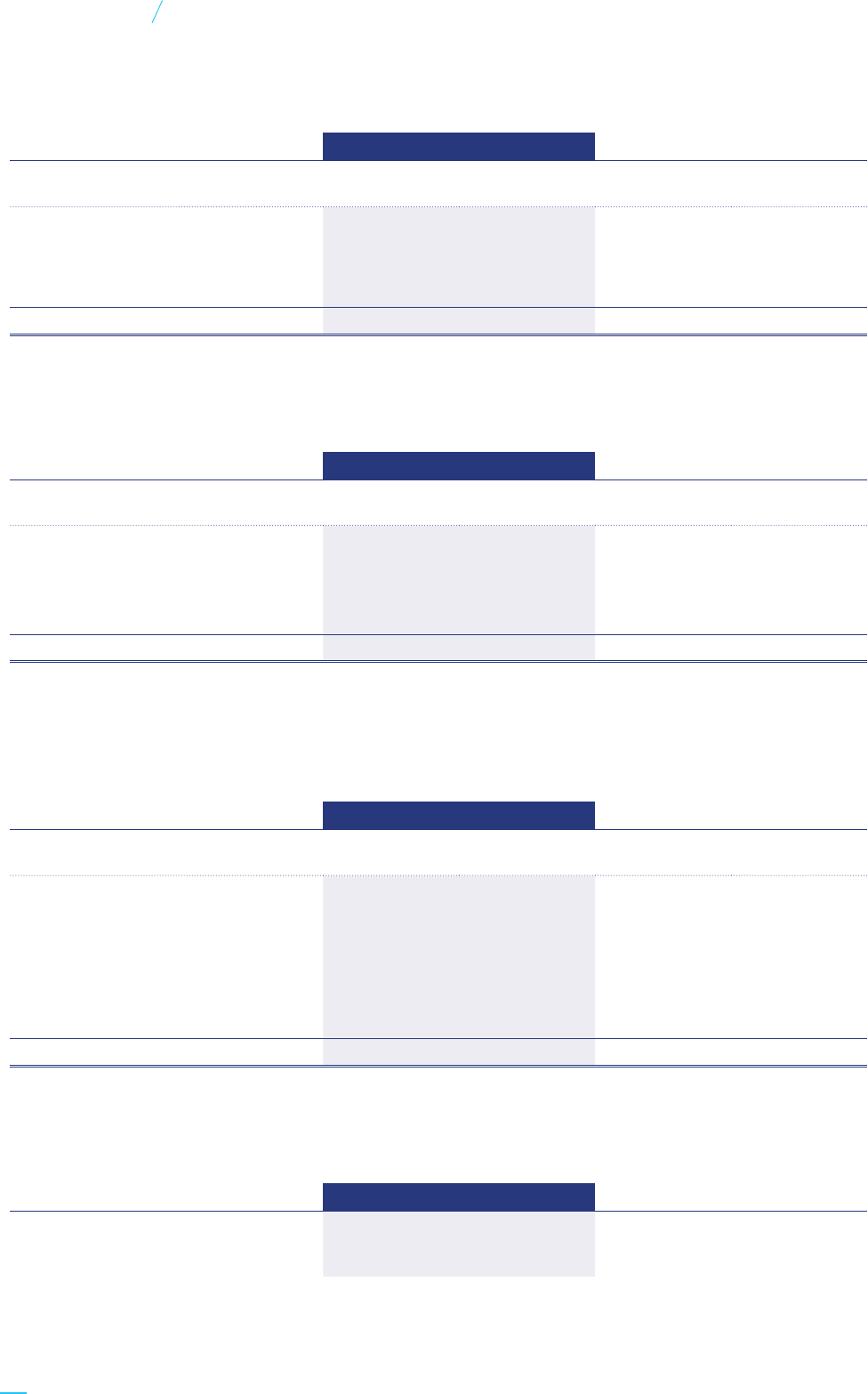
For the purpose of the statement of cash flows, cash and cash equivalents comprise:
2022 2021
US$ KHR’000 US$ KHR’000
(Note 2.3) (Note 2.3)
Cash on hand 570,750 2,349,778 384,731 1,567,394
Balances with the NBC (Note 6) 12,970,398 53,399,129 31,570,769 128,619,313
Balances with other banks (Note 7) 30,591,219 125,944,048 3,369,213 13,726,174
44,132,367 181,692,955 35,324,713 143,912,881
6. BALANCES WITH THE NBC
2022 2021
US$ KHR’000 US$ KHR’000
(Note 2.3) (Note 2.3)
Current accounts
US$ 5,012,796 20,637,681 19,774,014 80,559,333
KHR 7,957,602 32,761,448 11,796,755 48,059,980
12,970,398 53,399,129 31,570,769 128,619,313
The current accounts do not earn any interest.
7. BALANCES WITH OTHER BANKS
2022 2021
US$ KHR’000 US$ KHR’000
(Note 2.3) (Note 2.3)
Current accounts 3,386,944 13,944,048 3,369,213 13,726,174
Time deposits with original maturity of:
3 months or less 27,204,275 112,000,000 - -
More than 3 months 19,431,625 80,000,000 2,586,939 10,539,189
Accrued interest receivable 455,538 1,875,451 47,061 191,727
50,478,382 207,819,499 6,003,213 24,457,090
Interest rate
Annual interest rates on balances with other banks are as follows:
2022 2021
Current accounts Nil Nil
Time deposits 3.75% - 4.50% 1.50% - 4.00%
78
Annual Report 2022
SME Bank of Cambodia
Financial Statements
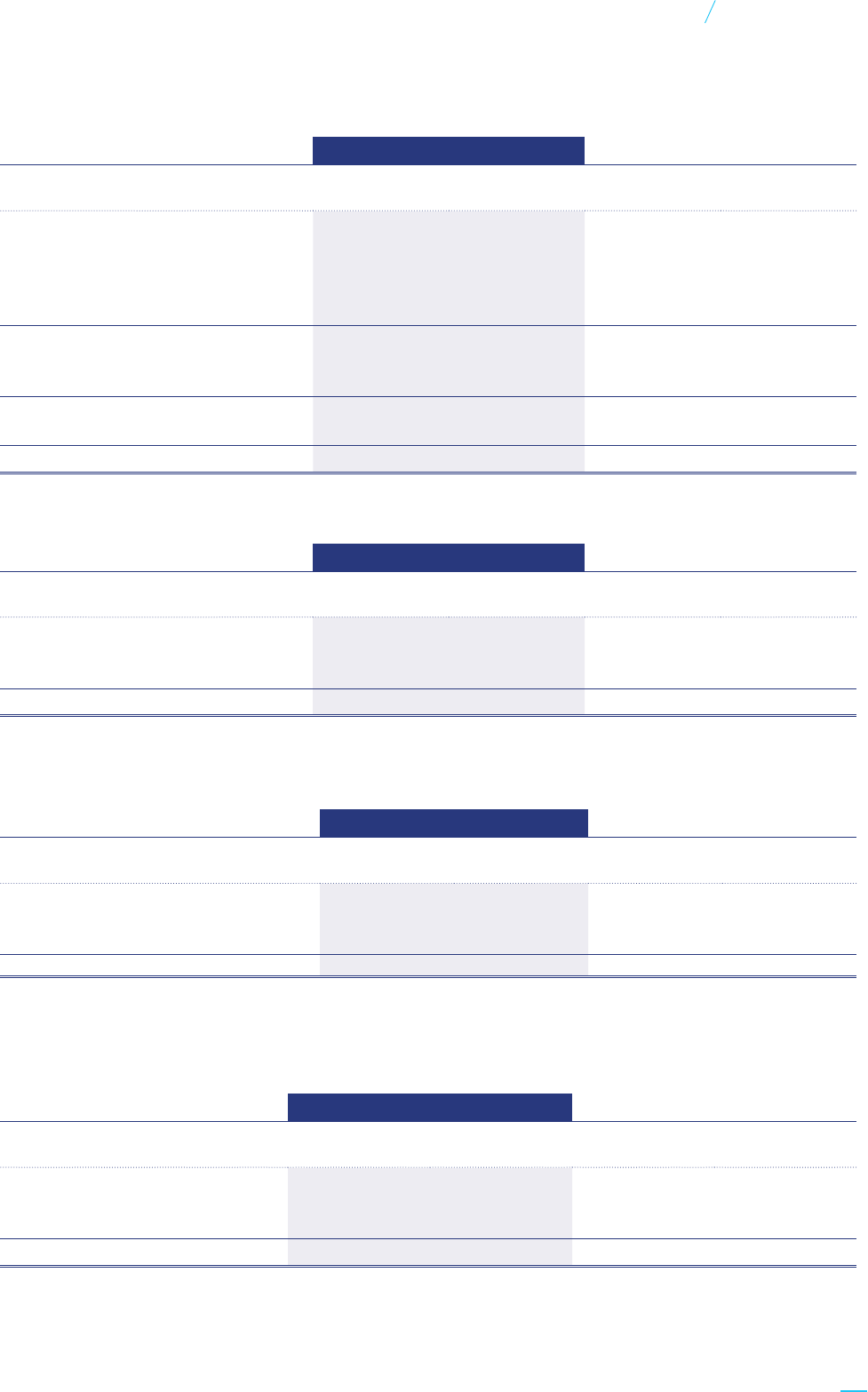
8. loans and advances to customers- NET
2022 2021
US$ KHR’000 US$ KHR’000
(Note 2.3) (Note 2.3)
Long-term loans 212,633,405 875,411,728 110,693,530 450,965,441
Sta loans 1,032,187 4,249,514 276,969 1,128,372
Short-term loans 744,070 3,063,336 - -
Accrued interest receivable 389,868 1,605,087 140,150 570,971
Total principal and accrued interest
receivable 214,799,530 884,329,665 111,110,649 452,664,784
Unamortised loan processing fee (470,993) (1,939,078) - -
Gross carrying amount 214,328,537 882,390,587 111,110,649 452,664,784
Allowance for ECL (3,827,605) (15,758,250) (1,798,998) (7,329,118)
Net carrying amount 210,500,932 866,632,337 109,311,651 445,335,666
Breakdown of allowance for ECL on loans and advances to customers is as follows:
2022 2021
US$ KHR’000 US$ KHR’000
(Note 2.3) (Note 2.3)
Stage 1 3,344,178 13,767,981 1,798,998 7,329,118
Stage 2 226,932 934,279 - -
Stage 3 256,495 1,055,990 - -
3,827,605 15,758,250 1,798,998 7,329,118
Movements of allowance for ECL on loans and advances are as follows:
2022 2021
US$ KHR’000 US$ KHR’000
(Note 2.3) (Note 2.3)
As at 31 January 1,798,998 7,329,118 766,000 3,098,470
Provision for expected credit losses 2,028,607 8,290,917 1,032,998 4,202,236
Exchange dierences on translation - 138,215 - 28,412
As at 31 December 3,827,605 15,758,250 1,798,998 7,329,118
Further analyses of loans and advances to customers are as follows:
(i) Staging of gross loan portfolio
2022 2021
US$ KHR’000 US$ KHR’000
(Note 2.3) (Note 2.3)
Stage 1 213,418,582 878,644,302 111,110,649 452,664,784
Stage 2 1,124,453 4,629,373 - -
Stage 3 256,495 1,055,990 - -
214,799,530 884,329,665 111,110,649 452,664,784
79
Annual Report 2022
SME Bank of Cambodia
Financial Statements
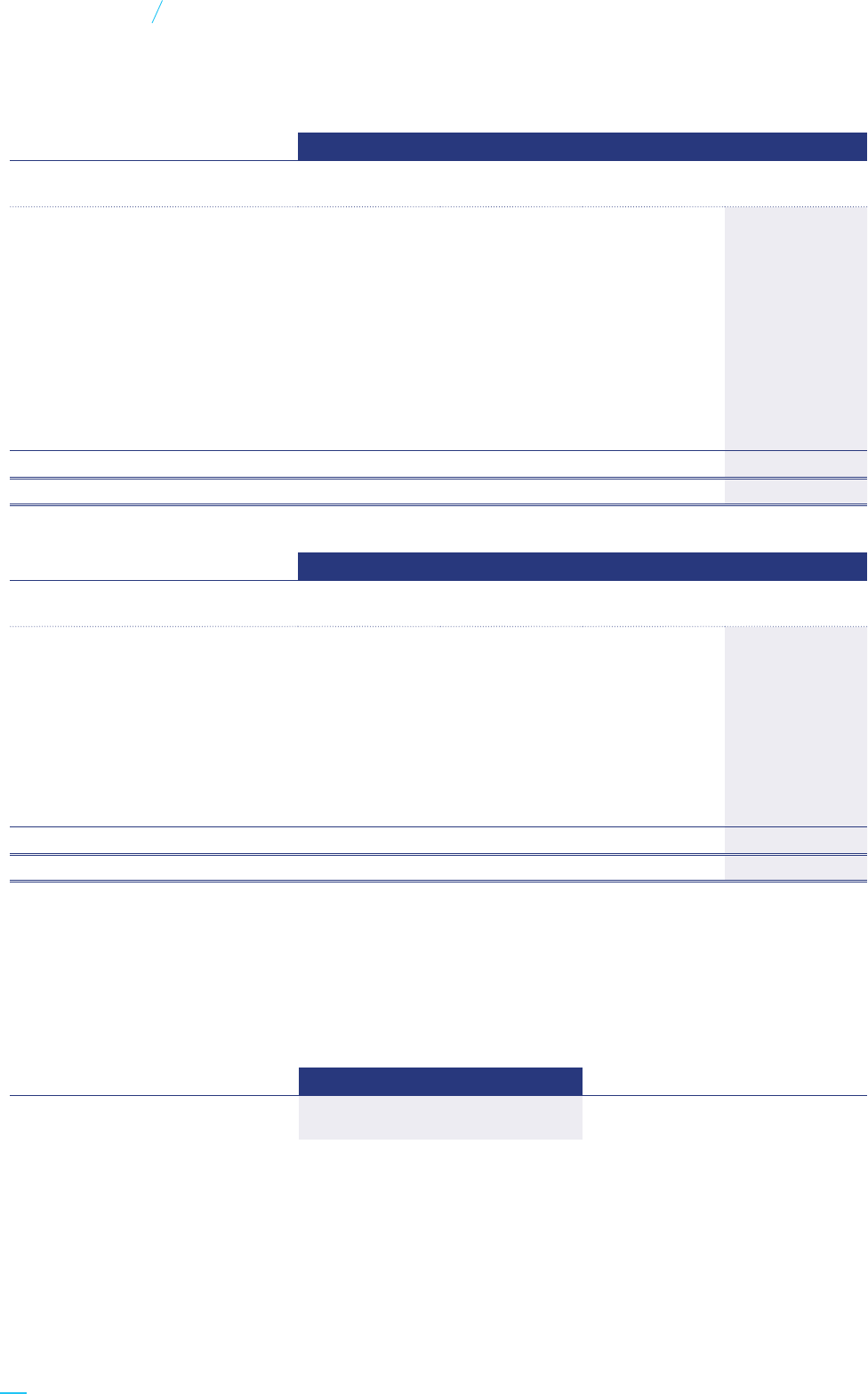
(ii) Movements of allowance for losses on loans and advances
2022
Stage 1 Stage 2 Stage 3 Total
US$ US$ US$ US$
As at 1 January 2022 1,798,998 - - 1,798,998
Newly originated assets 2,466,008 - - 2,466,008
Changes due to transfer between
stages:
Newly originated assets that moved
to stage 2 and stage 3 (483,427) 226,932 256,495 -
Net remeasurement of loss
allowance (387,708) - - (387,708)
Financial assets derecognized during
the period other than write o
(49,693) - - (49,693)
Allowance for ECL 3,344,178 226,932 256,495 3,827,605
KHR’000 (Note 2.3) 13,767,981 934,279 1,055,990 15,758,250
2021
Stage 1 Stage 2 Stage 3 Total
US$ US$ US$ US$
As at 1 January 2021 766,000 - - 766,000
Newly originated assets 1,179,714 - - 1,179,714
Changes due to transfer
between stages:
Net remeasurement of loss
allowance (129,721) - - (129,721)
Financial assets derecognized during
the period other than write o
(16,995) - - (16,995)
Allowance for ECL 1,798,998 - - 1,798,998
KHR’000 (Note 2.3) 7,329,118 - - 7,329,118
(iii) Refer to Note 28.2 on Credit risk for analysis of loan quality.
(iv) Refer to Note 28.2 on Credit risk for analysis of loans by maturity, sector, currency, security,
residency, relationship, and exposure
(v) By interest rate (per annum):
2022 2021
Interest rate 2.00% - 8.50% 2.00% - 7.50%
80
Annual Report 2022
SME Bank of Cambodia
Financial Statements
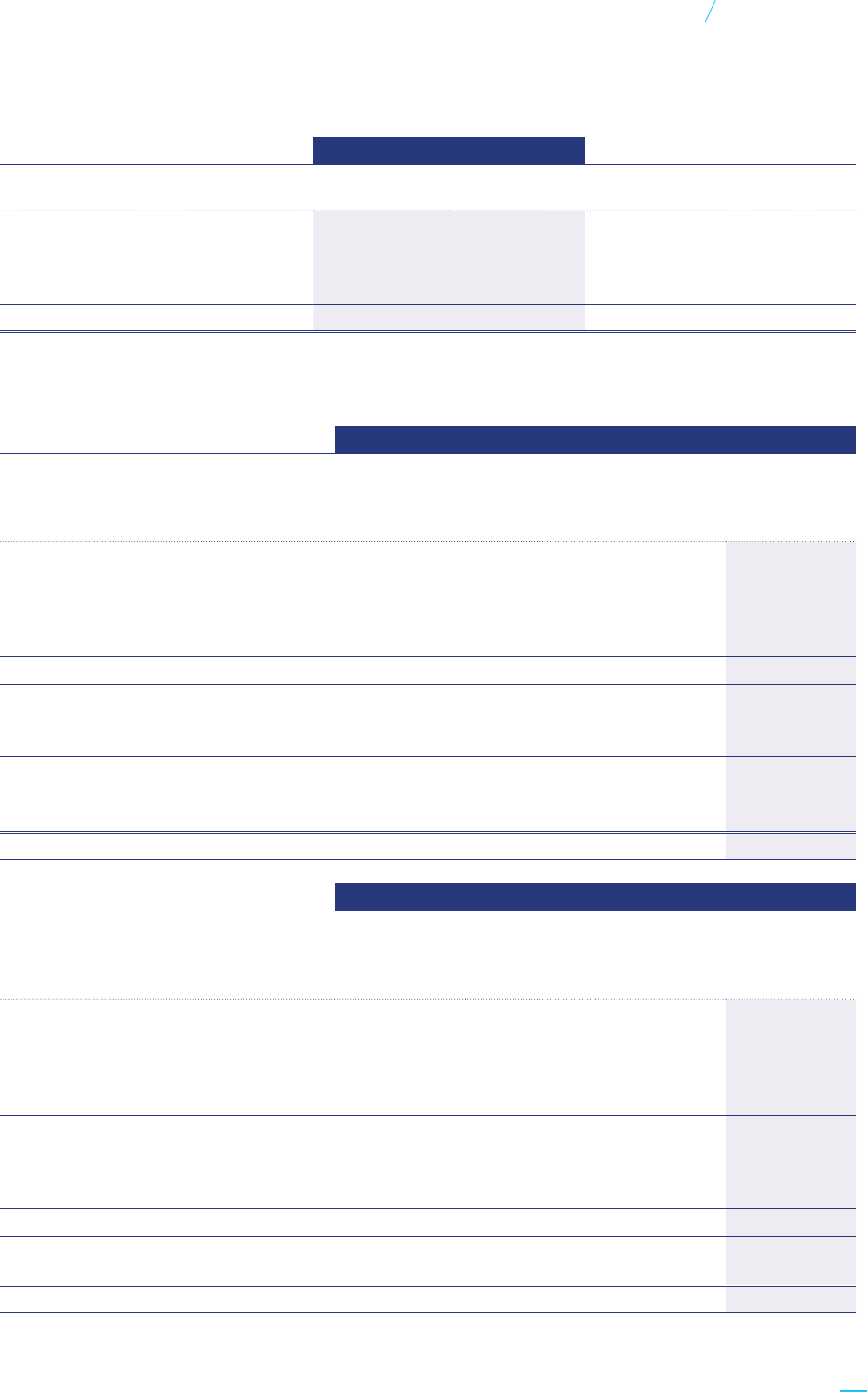
9. Other assets
2022 2021
US$ KHR’000 US$ KHR’000
(Note 2.3) (Note 2.3)
Advances and prepayments 100,143 412,289 44,986 183,273
Security deposits 51,547 212,219 - -
Others 31,249 128,651 8,469 34,503
182,939 753,159 53,455 217,776
10. INTANGIBLE ASSETS
2022
Computer
software
Other
intangible
assets
Software in
progress Total
US$ US$ US$ US$
Cost
As at 1 January 817,600 231,200 4,994 1,053,794
Additions - 76,310 1,844 78,154
Transfer 184,400 (184,400) - -
At 31 December 1,002,000 123,110 6,838 1,131,948
Less: accumulated amortization
As at 1 January 145,838 - 774 146,612
Charge during the year 194,516 - 1,093 195,609
As at 31 December 340,354 - 1,867 342,221
Net book value
As at 31 December 661,646 123,110 4,971 789,727
KHR’000 (Note 2.3) 2,723,997 506,844 20,466 3,251,306
2021
Computer
software
Other
intangible
assets
Software in
progress Total
US$ US$ US$ US$
Cost
As at 1 January 461,000 276,600 - 737,600
Additions 80,000 231,200 4,994 316,194
Transfer 276,600 (276,600) - -
At 31 December 817,600 231,200 4,994 1,053,794
Less: accumulated amortization
As at 1 January 30,784 - - 30,784
Charge during the year 115,054 - 774 115,828
As at 31 December 145,838 - 774 146,612
Net book value
As at 31 December 671,762 231,200 4,220 907,182
KHR’000 (Note 2.3) 2,736,758 941,909 17,192 3,695,859
81
Annual Report 2022
SME Bank of Cambodia
Financial Statements
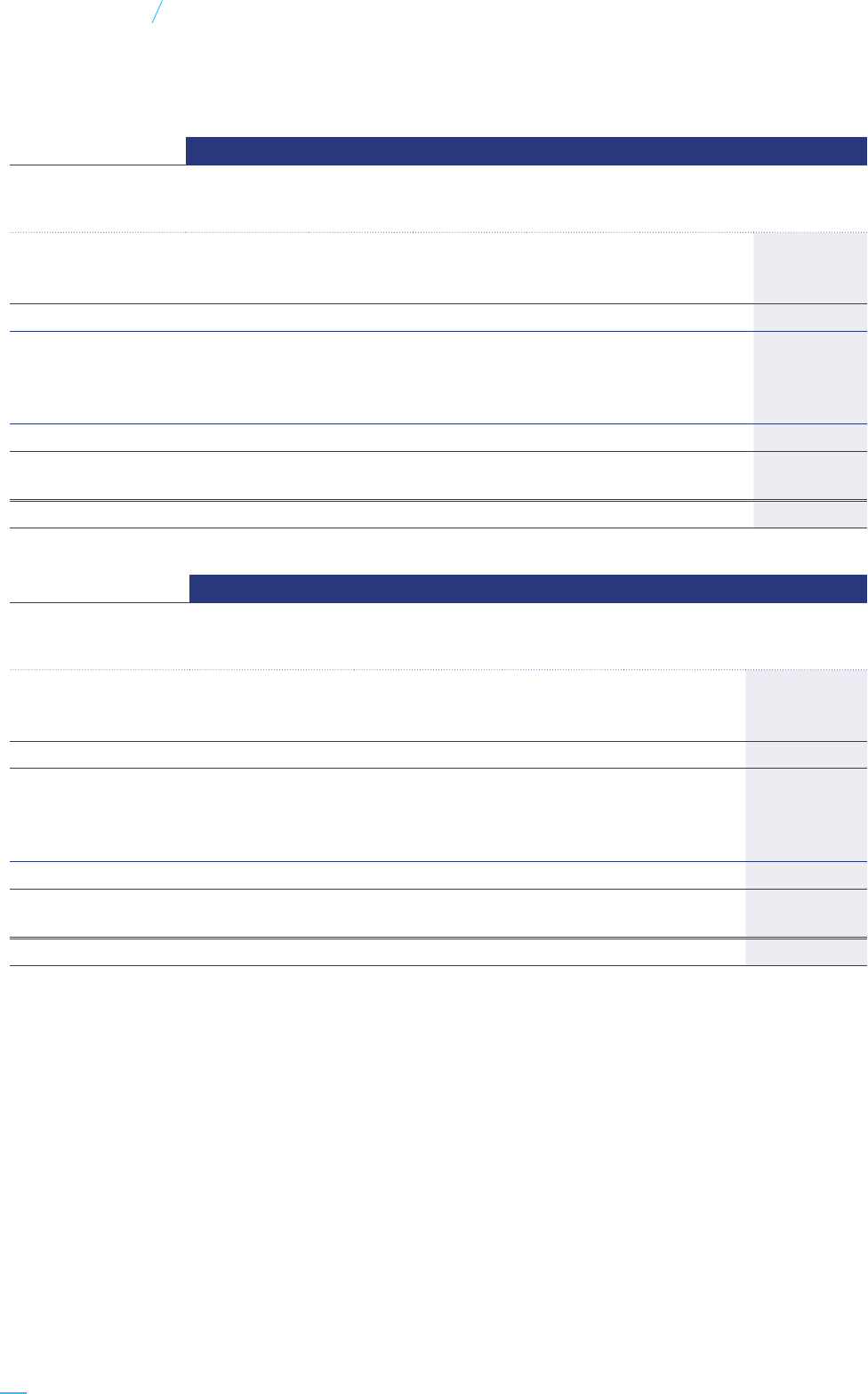
11. PROPERTY AND EQUIPMENT
2022
Leasehold
improvements
Equipment
Computer
equipment
Furniture
and fixture
Motor
vehicles Total
US$ US$ US$ US$ US$ US$
Cost
As at 1 January 838,140 44,278 691,736 - 140,810 1,714,964
Additions 706,748 341,886 193,137 41,873 244,000 1,527,644
As at 31 December 1,544,888 386,164 884,873 41,873 384,810 3,242,608
Less: accumulated
depreciation
As at 1 January 494,388 17,293 306,983 - 48,713 867,377
Charge during the year 268,847 37,872 209,422 4,944 45,249 566,334
As at 31 December 763,235 55,165 516,405 4,944 93,962 1,433,711
Net book value
As at 31 December 781,653 330,999 368,468 36,929 290,848 1,808,897
In KHR’000 (Note 2.3) 3,218,065 1,362,723 1,516,983 152,037 1,197,421 7,447,229
2021
Leasehold
improvements Equipment
Computer
equipment
Motor
vehicles Total
US$ US$ US$ US$ US$
Cost
As at 1 January 838,140 44,278 522,656 140,810 1,545,884
Additions - - 169,080 - 169,080
As at 31 December 838,140 44,278 691,736 140,810 1,714,964
Less: accumulated
depreciation
As at 1 January 215,245 6,239 105,061 20,461 347,006
Charge during the year 279,143 11,054 201,922 28,252 520,371
As at 31 December 494,388 17,293 306,983 48,713 867,377
Net book value
As at 31 December 343,752 26,985 384,753 92,097 847,587
In KHR’000 (Note 2.3) 1,400,446 109,937 1,567,483 375,203 3,453,069
12. LEASES
The Bank entered into several lease contracts for oce premises used in its operations with lease
terms ranging from 5 to 10 years. The Bank applies the ‘short-term lease assets’ recognition exemption
for leases of vehicles.
Set out below are the carrying amounts of right-of-use assets and lease liabilities recognized and the
movements during the year:
82
Annual Report 2022
SME Bank of Cambodia
Financial Statements

Right-of-use assets
2022 2021
US$ KHR’000 US$ KHR’000
(Note 2.3) (Note 2.3)
As at 1 January 112,238 457,258 246,923 998,804
Additions 2,446,158 10,070,832 - -
Charge during the year (263,205) (1,075,719) (134,685) (547,899)
Exchange dierence on translation - (3,070) - 6,353
As at 31 December 2,295,191 9,449,301 112,238 457,258
Lease liabilities
2022 2021
US$ KHR’000 US$ KHR’000
(Note 2.3) (Note 2.3)
As at 1 January 97,277 396,306 220,321 891,198
Additions 2,422,845 9,974,853 - -
Accretion of interest 24,264 99,167 6,031 24,534
Payments (233,768) (955,410) (129,075) (525,077)
Exchange dierence on translation - (2,102) - 5,651
As at 31 December 2,310,618 9,512,814 97,277 396,306
Current and non-current portion
Current 279,287 1,149,824 97,277 396,306
Non-current 2,031,331 8,362,990 - -
2,310,618 9,512,814 97,277 396,306
Maturity analysis – contractual
undiscounted cash flows
Less than one year 330,894 1,362,291 110,250 449,159
One to five years 1,379,288 5,678,529 - -
More than five years 808,111 3,326,993 - -
Total undiscounted lease liabilities 2,518,293 10,367,813 110,250 449,159
The following amounts are recognized in profit or loss:
2022 2021
US$ KHR’000 US$ KHR’000
(Note 2.3) (Note 2.3)
Depreciation of right-of-use assets
(Note 23) 263,205 1,075,719 134,685 547,899
Short-term lease assets
(Note 24) 25,946 106,041 - -
Accreted interest on lease liabilities
(Note 21)
24,264 99,167 6,031 24,534
Total lease expenses 313,415 1,280,927 140,716 572,433
83
Annual Report 2022
SME Bank of Cambodia
Financial Statements

13. Statutory deposit
2022 2021
US$ KHR’000 US$ KHR’000
(Note 2.3) (Note 2.3)
Reserve requirement
KHR 231,965 955,000 2,946 12,002
US$ 90,000 370,530 20,000 81,480
321,965 1,325,530 22,946 93,482
Reserve requirement
Under NBC Prakas No. B7-020-230 dated 18 March 2020, commercial banks are required to maintain
certain cash reserves with the NBC in the form of compulsory deposits, computed at 7.0% of customer
deposits and borrowings in KHR and other currencies.
Capital guarantee
Under NBC Prakas No. B7-01-136 dated 15 October 2001, Banks are required to maintain a capital
guarantee of 10% of registered capital with the NBC. However, the Bank obtained approval from the
NBC on 29 January 2020 on the exemption from such obligation.
14. INCOME TAX
(i) Income tax liability
2022 2021
US$ KHR’000 US$ KHR’000
(Note 2.3) (Note 2.3)
As at 1 January 9,889 40,288 7,194 29,100
Income tax expense 310,121 1,267,465 22,535 91,672
Income tax paid (66,941) (273,588) (19,840) (80,709)
Exchange dierence on translation - 7,720 - 225
As at 31 December 253,069 1,041,885 9,889 40,288
(ii) Income tax expense
2022 2021
US$ KHR’000 US$ KHR’000
(Note 2.3) (Note 2.3)
Current income tax 310,121 1,267,465 22,535 91,672
Movement in deferred tax (820,969) (3,355,301) - -
Income tax benefit (expense) (510,848) (2,087,836) 22,535 91,672
In accordance with the Cambodian Law on Taxation, the Bank has an obligation to pay corporate
income tax of either the profit tax at the rate of 20% of taxable profit or the minimum tax at 1% of
annual turnover, whichever is higher.
84
Annual Report 2022
SME Bank of Cambodia
Financial Statements
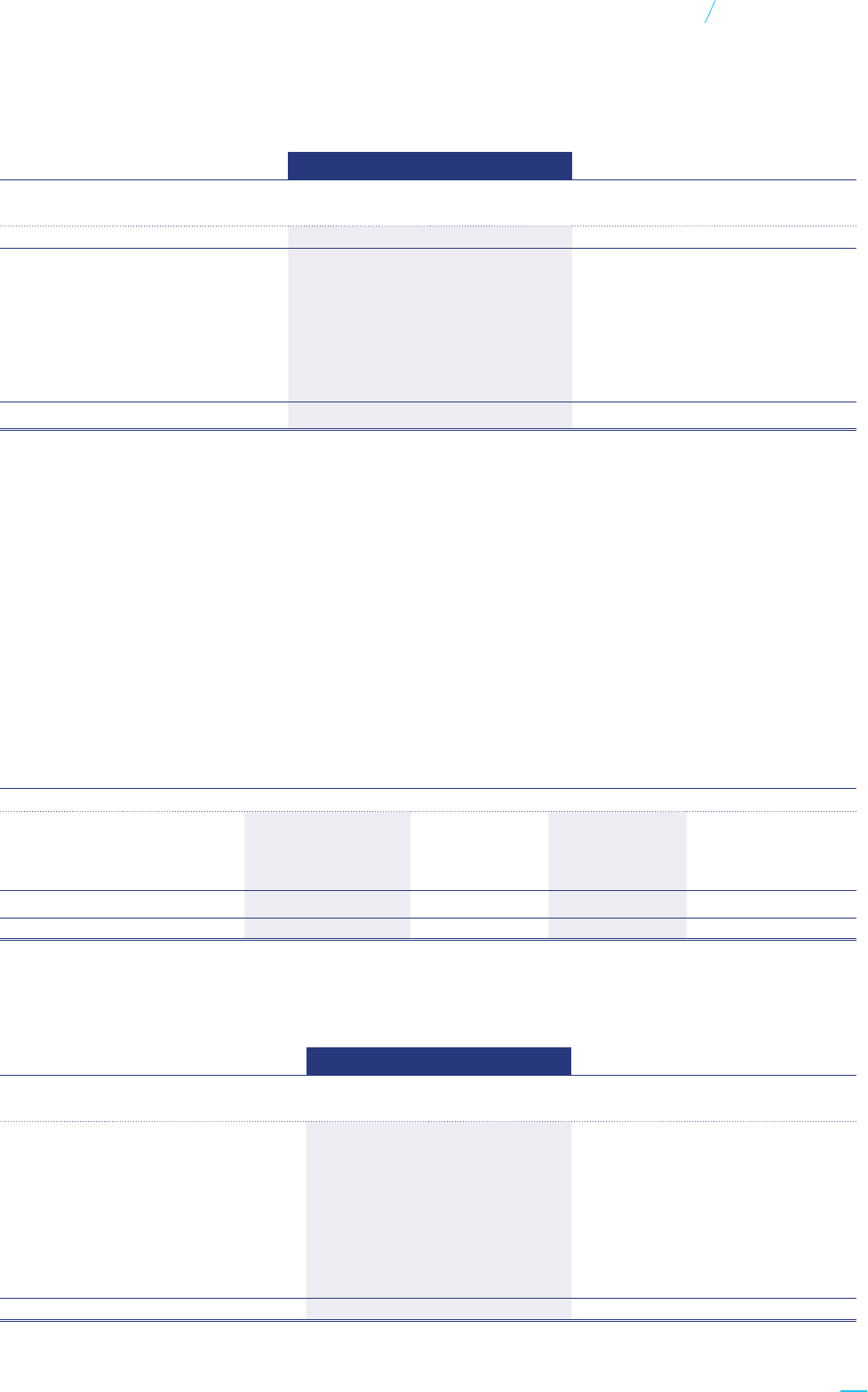
The reconciliation of income tax expense computed at the statutory tax rate of 20% to the income
tax expense shown in the statement of comprehensive income is as follows:
2022 2021
US$ KHR’000 US$ KHR’000
(Note 2.3) (Note 2.3)
Loss before tax (100,415) (410,397) (1,667,817) (6,784,680)
Income tax at statutory rate of 20% (20,083) (82,079) (333,563) (1,356,936)
Non-deductible expenses 3,944 16,119 7,303 29,711
Eect of previously unrecognized
deferred tax asset (431,669) (1,764,231) - -
Utilization of tax loss (63,040) (257,645) - -
Unrecognized deferred tax - - 326,260 1,327,225
Minimum tax - - 22,535 91,672
Income tax benefit (expense) (510,848) (2,087,836) 22,535 91,672
(iii) Tax loss carried forward
In accordance with the Prakas No. 098 on Tax on Income for the tax losses to be carried forward for
a period of five consecutive years and utilized against taxable profit in subsequent years, the following
conditions should be met:
• Tax loss has been calculated based on the tax rules and reported in the annual tax return to the GDT;
• The business activity of the Company must not have changed; and
• No tax unilateral reassessment on the tax losses has been made by the GDT.
Tax loss is subject to assessment by GDT and may not be utilized due to the criteria mentioned above.
The details of the tax loss and its utilization for the year are as follows:
Originating
year
Can be
utilized up to Tax loss amount Utilized Forfeited
Unutilized as at
31 December 2022
US$ US$ US$ US$
2020 2025 315,201 - - 315,201
2021 2026 - (1,508) - (1,508)
2022 2027 - (313,693) - (313,693)
315,201 (315,201) - -
KHR’000 (Note 2.3) 1,297,683 (1,297,683) - -
(iv) Deferred tax assets
Temporary dierences recognized during the year giving rise to deferred tax assets are as follows:
2022 2021
US$ KHR’000 US$ KHR’000
(Note 2.3) (Note 2.3)
Deferred tax assets (liabilities)
Lease liabilities under CIFRS 16 462,124 1,902,565 19,455 79,261
ROU under CIFRS 16 (459,038) (1,889,859) (22,448) (91,452)
ECLs under CIFRS 9 738,859 3,041,883 359,800 1,465,824
Unrealized exchange (loss)/gain (15,328) (63,105) 37,117 151,213
Tax loss carried forward - - 63,040 256,826
Property and equipment 88,144 362,889 37,745 153,772
Provision for seniority indemnity 6,208 25,556 - -
Deferred tax assets – net 820,969 3,379,929 494,709 2,015,444
85
Annual Report 2022
SME Bank of Cambodia
Financial Statements
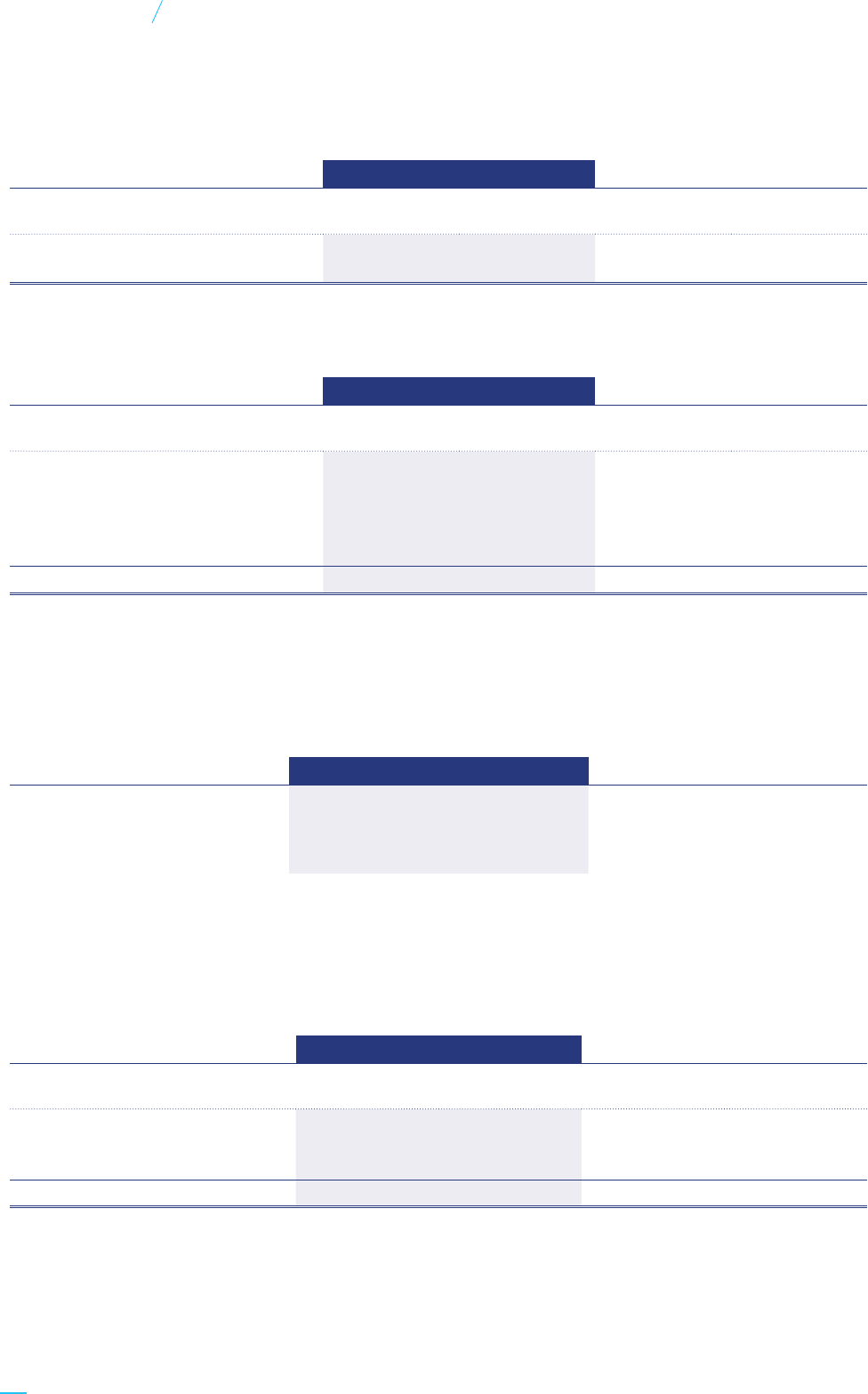
15. DEPOSITS FROM OTHER FINANCIAL INSTITUTIONS
2022 2021
US$ KHR’000 US$ KHR’000
(Note 2.3) (Note 2.3)
Demand deposits 49,461 203,631 15,839 64,528
16. DEPOSITS FROM CUSTOMERS
2022 2021
US$ KHR’000 US$ KHR’000
(Note 2.3) (Note 2.3)
Time deposits 2,914,744 12,000,001 9,692 39,485
Demand deposits 977,481 4,024,289 488,405 1,989,762
Savings deposits 757,174 3,117,285 6,591 26,852
Interest payable 11,125 45,802 292 1,190
4,660,524 19,187,377 504,980 2,057,289
Further analyses of deposits from customers are as follows:
(i) Interest rates
Savings deposits and term deposits from other banks bear interest as follows:
2022 2021
Demand deposits Nil Nil
Savings deposits 0.80% 0.80%
Term deposits 3.80% 3.70% - 4.00%
(ii) Maturity analysis
Refer to Note 28.4 on Liquidity risk.
(iii) Type of customers
2022 2021
US$ KHR’000 US$ KHR’000
(Note 2.3) (Note 2.3)
Domestic corporations 430,065 1,770,578 430,065 1,752,085
Individuals 4,230,459 17,416,799 74,915 305,204
4,660,524 19,187,377 504,980 2,057,289
86
Annual Report 2022
SME Bank of Cambodia
Financial Statements
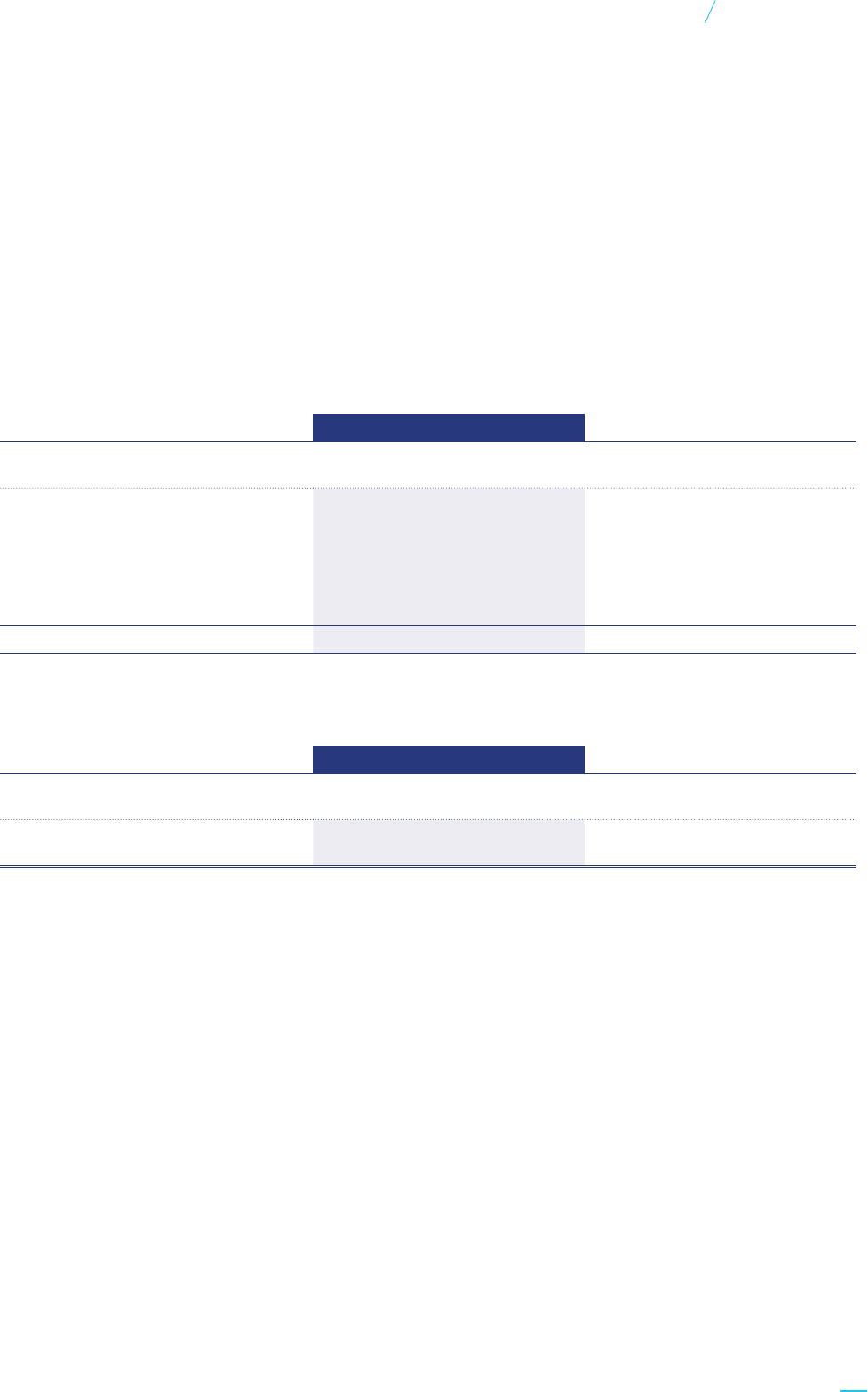
17. BORROWING
On 27 April 2022, the Bank has requested for an additional fund amounting to KHR’000 304,725,000
or US$ 74,016,274 from MEF in order to support on Tourism Recovery Co-Financing Scheme (TRSC)
which is part of its implementing strategies to restore and promote Cambodia’s economic growth in
living with Covid 19 in a new and financial normalization trajectory.
The amount was fully disbursed through 3 installments in June, July and August 2022 and was approved
by MEF as borrowing. Up to date of this report, borrowing agreement has not yet signed by both
parties as terms and conditions are being discussed and finalized with MEF.
18. Other liabilites
2022 2021
US$ KHR’000 US$ KHR’000
(Note 2.3) (Note 2.3)
Account payables 621,918 2,560,436 292,074 1,189,909
Accrued bonus 139,378 573,819 - -
Accrued expenses 77,025 317,112 52,804 215,123
Accrued severance pays 31,039 127,788 15,836 64,516
Withholding tax payable 15,331 63,118 8,793 35,823
884,691 3,642,273 369,507 1,505,371
19. SHARE CAPITAL
2022 2021
US$ KHR’000 US$ KHR’000
(Note 2.3) (Note 2.3)
Registered, issued and fully paid
ordinary shares of US$250 each 200,000,000 800,000,000 150,000,000 600,000,000
On 21 April 2022, the Bank obtained approval from the NBC for the increase of share capital of US$
50,000,000. The amendment of the Bank’s memorandum and articles of association was endorsed
by the Ministry of Commerce on 9 August 2022.
20. CONTRIBUTIONS FROM MINISTRY OF ECONOMY AND FINANCE
Contributions from MEF represents the Bank’s start-up costs and capitalized expenditures shouldered
by MEF amounted to US$529,942 (KHR’000 2,119,768) and US$778,140 (KHR’000 3,112,560), respectively.
MEF issued Deika No. 1686 dated 20 September 2021 requested the Bank to refund US$ 61,200
regarding rental deposits returned by lessor upon maturity. The Bank has returned the deposits to
MEF on 16 November 2022.
87
Annual Report 2022
SME Bank of Cambodia
Financial Statements
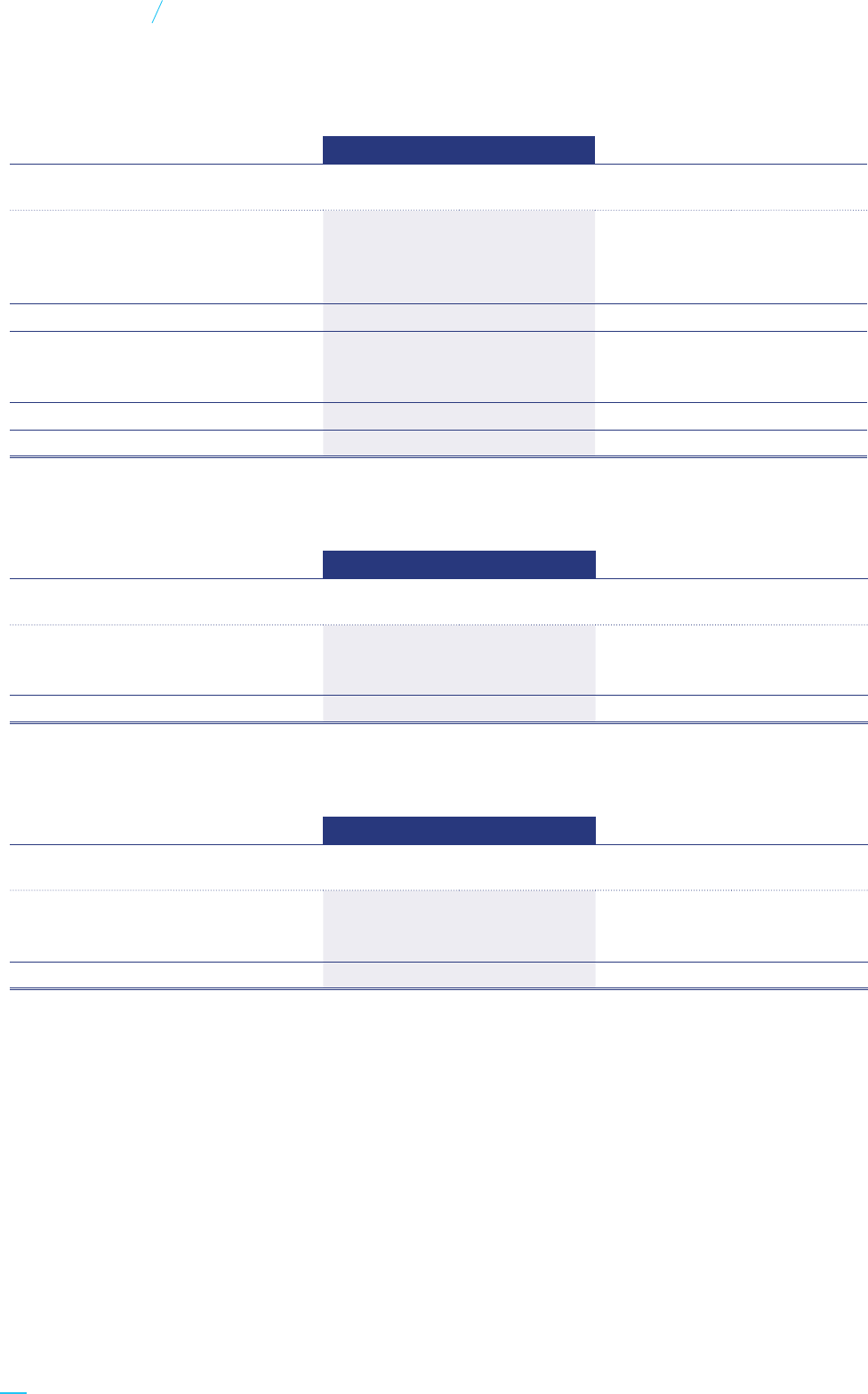
21. NET INTEREST INCOME
2022 2021
US$ KHR’000 US$ KHR’000
(Note 2.3) (Note 2.3)
Interest income
Loans and advances to customers 5,289,639 21,618,755 1,311,872 5,336,695
Balances with the NBC and other banks 1,098,220 4,488,425 870,646 3,541,788
6,387,859 26,107,180 2,182,518 8,878,483
Interest expense
Customer deposits 12,081 49,375 350 1,424
Lease liabilities (Note 12) 24,264 99,167 6,031 24,534
36,345 148,542 6,381 25,958
Net interest income 6,351,514 25,958,638 2,176,137 8,852,525
22. PERSONNEL EXPENSES
2022 2021
US$ KHR’000 US$ KHR’000
(Note 2.3) (Note 2.3)
Salaries and bonuses 1,920,024 7,847,138 1,241,941 5,052,216
Other sta related costs 44,618 182,354 24,704 100,496
1,964,642 8,029,492 1,266,645 5,152,712
23. DEPRECIATION AND AMORTIZATION
2022 2021
US$ KHR’000 US$ KHR’000
(Note 2.3) (Note 2.3)
Property and equipment (Note 11) 566,334 2,314,607 520,371 2,116,869
Right-of-use assets (Note 12) 263,205 1,075,719 134,685 547,899
Intangible assets (Note 10) 195,609 799,454 115,828 471,188
1,025,148 4,189,780 770,884 3,135,956
88
Annual Report 2022
SME Bank of Cambodia
Financial Statements
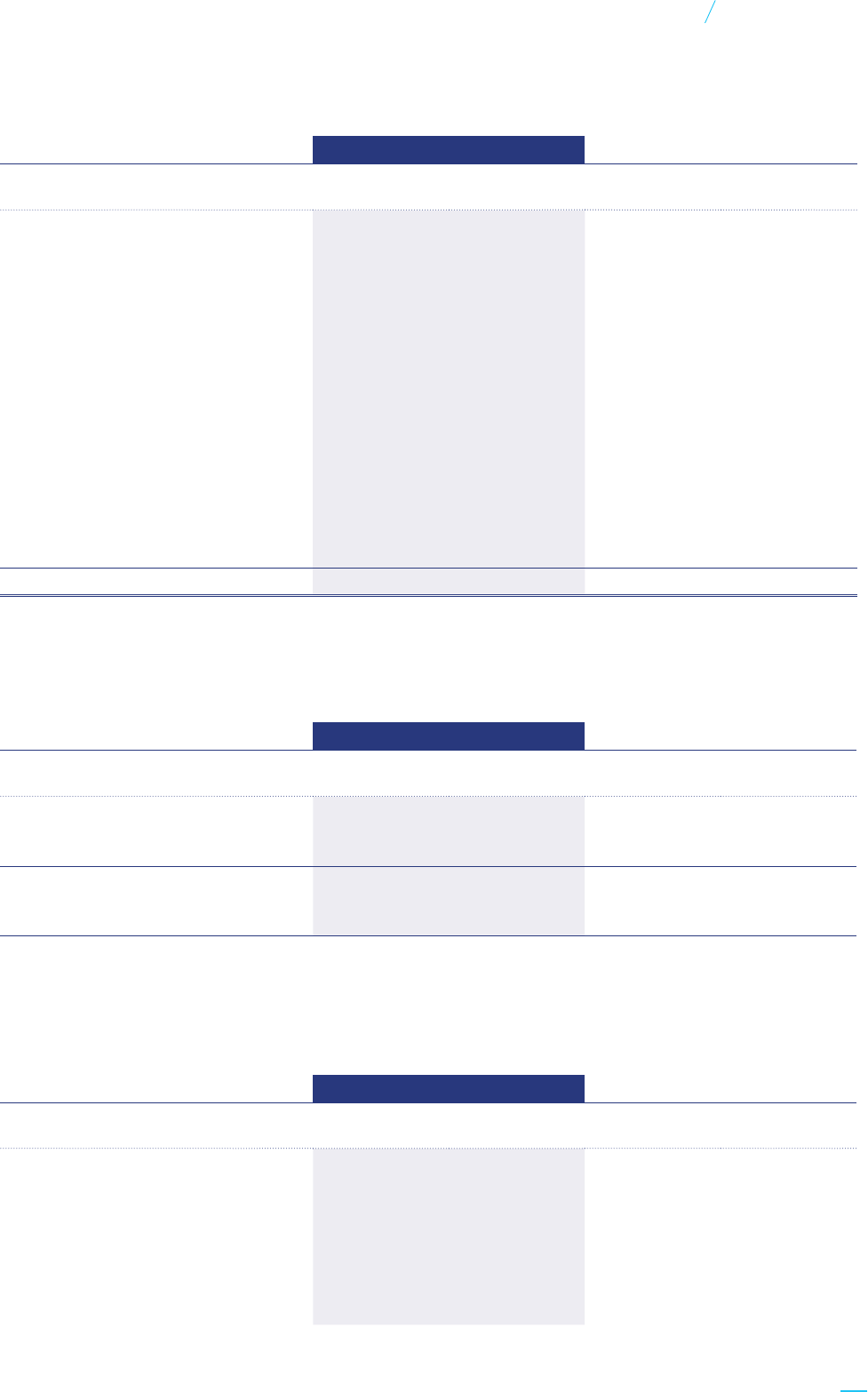
24. GENERAL AND ADMINSTRATIVE EXPENSES
2022 2021
US$ KHR’000 US$ KHR’000
(Note 2.3) (Note 2.3)
Repairs and IT maintenance 296,766 1,212,883 206,551 840,249
License and membership fee 71,207 291,023 44,701 181,844
Security 63,288 258,658 15,092 61,394
Oce supplies 62,725 256,357 60,657 246,753
Business meal and entertainment 59,496 243,160 15,032 61,150
Other low value assets 54,328 222,039 - -
Advertising 51,925 212,217 39,158 159,295
Transportation 51,276 209,565 9,072 36,905
Utilities 43,206 176,583 24,935 101,436
Other taxes 36,280 148,276 30,967 125,974
Insurance 35,282 144,198 12,613 51,310
Professional services 33,041 135,039 140,478 571,465
Communication 27,135 110,901 20,822 84,704
Short-term lease assets 25,946 106,041 - -
Others 17,898 73,149 7,138 29,036
929,799 3,800,089 627,216 2,551,515
25. RELATED PARTY BALANCES AND TRANSACTIONS
25.1 Outstanding balance with related party
2022 2021
US$ KHR’000 US$ KHR’000
(Note 2.3) (Note 2.3)
MEF
Borrowing (Note 17) 74,016,274 304,725,000 - -
Key management’s personnel
Loan (principal and accrued interest
receivable)
642,594 2,645,559 - -
25.2 Transactions with related parties
Significant transactions with related parties during the year are as follows:
2022 2021
US$ KHR’000 US$ KHR’000
(Note 2.3) (Note 2.3)
MEF
Proceeds from borrowing 74,016,274 304,725,000 - -
Proceed from additional capital 50,000,000 200,000,000 50,000,000 200,000,000
Return of contributions (61,200) (244,800) - -
Key management compensation
Salaries and benefits 466,024 1,904,640 492,047 2,001,647
Interest income from loans 14,348 58,640 - -
89
Annual Report 2022
SME Bank of Cambodia
Financial Statements

26. COMMITMENT AND CONTINGENCY
26.1 Credit commitment
2022 2021
US$ KHR’000 US$ KHR’000
(Note 2.3) (Note 2.3)
Undisbursed portion of loans and
advances 3,778,540 15,556,249 - -
26.2 Tax contingency
The taxation system in Cambodia has undergone numerous changes and is characterized by either
often unclear, contradictory and/or diering interpretations existing among numerous taxation
authorities and jurisdictions. Taxes are subject to review and investigation by a number of authorities,
who are enabled by law to impose severe fines, penalties and interest charges. These facts may create
tax risks in Cambodia substantially more significant than in other countries.
Management believes that it has adequately provided for tax liabilities based on its interpretation of
tax legislation. However, the relevant authorities may have diering interpretations and the eects
since the incorporation of the Bank and its subsidiaries could be significant.
27. MATURITY PROFILE OF ASSETS AND LIABILITIES
The following table shows an analysis of assets and liabilities as to whether they are expected to be
recovered or settled within one year or beyond one year from the end of reporting period:
2022
2021
Within
one year
Beyond
one year Total
Within
one year
Beyond
one year Total
US$ US$ US$ US$ US$ US$
Financial assets
Cash on hand 570,750 - 570,750 384,731 - 384,731
Balances with the
NBC 12,970,398 - 12,970,398 31,570,769 - 31,570,769
Balances with other
banks 50,478,382 - 50,478,382 6,003,213 - 6,003,213
Loans and advances
to customers 4,759,700 210,039,830 214,799,530 126,410 110,984,239 111,110,649
Other assets - 51,547 51,547 2,163 - 2,163
68,779,230 210,091,377 278,870,607 38,087,286 110,984,239 149,071,525
Non-financial assets
Other assets 131,392 - 131,392 51,292 - 51,292
Statutory deposit - 321,965 321,965 - 22,946 22,946
Property and
equipment - 1,808,897 1,808,897 - 847,587 847,587
Right-of-use assets - 2,295,191 2,295,191 - 112,238 112,238
Intangible assets - 789,727 789,727 - 907,182 907,182
Deferred tax assets 820,969 - 820,969 - - -
952,361 5,215,780 6,168,141 51,292 1,889,953 1,941,245
Total financial and
non-financial assets 285,038,748 151,012,770
Unamortised loan
processing fee (470,993) -
Allowance for ECL (3,827,605) (1,798,998)
Total assets 280,740,150 149,213,772
In KHR’000 (Note 2.3) 1,155,807,197
607,896,907
90
Annual Report 2022
SME Bank of Cambodia
Financial Statements

2022 2021
Within one
year
Beyond
one year Total
Within one
year
Beyond
one year Total
US$ US$ US$ US$ US$ US$
Financial liabilities
Deposits from other financial
institutions 49,461 - 49,461 15,839 - 15,839
Deposits from customers 1,745,780 2,914,744 4,660,524 504,980 - 504,980
Borrowing - 74,016,274 74,016,274 - - -
Lease liabilities 279,287 2,031,331 2,310,618 97,277 - 97,277
Other liabilities 869,360 - 869,360 369,507 - 369,507
2,943,888 78,962,349 81,906,237 987,603 - 987,603
Non-financial liabilities
Other liabilities 15,331 - 15,331 - - -
Income tax liability 253,069 - 253,069 9,889 - 9,889
268,400 - 268,400 9,889 - 9,889
Total liabilities 3,212,288 78,962,349 82,174,637 997,492 - 997,492
In KHR’000 (Note 2.3) 338,312,981 4,063,782
28. FINANCIAL RISK MANAGEMENT
The Bank has exposure to the following risks from financial instruments:
• Operational risk;
• Credit risk;
• Market risk; and
• Liquidity risk
This note presents information about the Bank’s exposure to each of the above risks and the Bank’s
objectives, policies and processes for measuring and managing risk, and the Bank’s management of
capital.
Risk management functional and governance structure
The Bank’s activities expose it to a variety of financial risks: credit risk, market risk (including currency
risk, interest rate risk and price risk) and liquidity risk. Taking risk is core to the financial business, and
the operational risks are an inevitable consequence of being in business.
The Bank does not use derivative financial instruments such as foreign exchange contract and interest
rate swaps to manage its risk exposure.
A primary objective of the Bank in risk management is to comply with NBC’s regulations. On the other
hand, the Bank has recognized the importance of achieving international best practices on risk
management. The Board of Directors has established a Credit Committee to formulate broad parameters
of acceptable risk for the Bank and monitor the activities against these parameters.
28.1 Operational risk
Operational risk is the risk of direct or indirect loss arising from inadequate or failed internal processes,
personnel, technology and infrastructure, and from external factors other than credit, market and
liquidity risks such as those arising from legal and regulatory requirements and generally accepted
standards of corporate behavior.
91
Annual Report 2022
SME Bank of Cambodia
Financial Statements

The operational risk loss is managed through established operational risk management processes,
proper monitoring and reporting of the business activities by control and support units which are
independent of the business units and oversight provided by the senior management of the Bank.
The Bank’s operational risk management entails the establishment of clear organizational structures,
roles and control policies. Various internal control policies and measures have been implemented
including the establishment of signing authorities, defining system parameters controls, streamlining
procedures and documentation and compliance with regulatory and other legal requirements. These
are continually reviewed to address the operational risks of the business unit as well as to assess the
level of compliance with the Bank policies by a program of periodic reviews undertaken by the internal
audit function. The results of internal audit reviews are discussed with the management of the business
unit to which they relate, with summaries submitted to the Audit Committee and senior management
of the Bank.
28.2 Credit risk
The Bank takes on exposure to credit risk, which is the risk that a counterparty will cause a financial
loss to the Bank by failing to discharge an obligation. Credit risk is the most important risk for the
Bank’s business. Credit exposure arises principally in lending activities that lead to loans and advances.
There is also credit risk in o-balance sheet financial instruments, such as loan commitments. The
lending activities are guided by the Bank’s credit policy to ensure that the overall objectives in the
area of lending are achieved; i.e., that the loan portfolio is strong and credit risks are well diversified.
The credit policy documents the lending policy, collateral policy and credit approval processes,
including the Bank’s own internal grading system, and procedures implemented to ensure compliance
with the NBC’s guidelines.
(a) Credit risk measurement
The Bank assesses the probability of default of individual counterparties using internal rating tool.
Local credit committee is responsible for determining the risk rating policies.
Risk ratings are reviewed and updated regularly, and in events of (i) change of loan terms and conditions
including extension; (ii) repayment irregularities or delinquencies and (iii) adverse information relating
to the borrower or transaction.
(b) Risk limit control and mitigation policies
The Bank operates and provides loans and advances to individuals or enterprises within the Kingdom
of Cambodia. The Bank manages, limits and controls the concentration of credit risk whenever it is
identified. Large exposure is defined by the NBC as overall credit exposure to any individual beneficiary
which exceeds 10% of the Bank’s net worth.
The Bank is required, under the conditions of NBC Prakas No. B7-06-226, to maintain at all times a
maximum ratio of 20% between the Bank’s overall credit exposure to any single beneficiary and the
Bank’s net worth. The aggregate of large credit exposure must not exceed 300% of the Bank’s net worth.
The Bank employs a range of policies and practices to mitigate credit risk. The most traditional of
these is the taking of security in the form of collateral for loans and advances to customers, which is
common practice. The Bank implements guidelines on the acceptability of specific classes of collateral or
credit risk mitigation. The principal collateral types to secure for loans and advances to customers are:
• Mortgages over residential properties (land, building and other properties);
• Charges over business assets such as land and buildings; and
• Cash in the form of margin deposits.
92
Annual Report 2022
SME Bank of Cambodia
Financial Statements

(c) Management of credit risk
•
Developing and maintaining the Bank’s processes for measuring ECL: This includes processes for:
− initial approval, regular validation and back-testing of the models used;
− determining and monitoring significant increase in credit risk; and
− incorporation of forward-looking information.
• Reviewing compliance of business units with agreed exposure limits, including those for selected
industries, country risk and product types. Regular reports on the credit quality of local portfolios
are provided to the Bank and may require appropriate corrective action to be taken. These include
reports containing estimates of ECL allowances.
•
Providing advice, guidance and specialist skills to business units to promote best practice throughout
the Bank in the management of credit risk.
(d) Maximum exposure to credit risk before collateral held or other credit enhancements
Details of maximum exposure to credit risk before collateral held or other credit enhancements are
as follows:
2022 2021
US$ KHR’000 US$ KHR’000
(Note 2.3) (Note 2.3)
On-balance sheet financial assets
Balances with the NBC 12,970,398 53,399,129 31,570,769 128,619,313
Balances with other banks 50,478,382 207,819,499 6,003,213 24,457,090
Loans and advances to
customers, gross 214,799,530 884,329,665 111,110,649 452,664,784
Other assets 51,547 212,219 2,163 8,812
278,299,857 1,145,760,512 148,686,794 605,749,999
O-balance sheet item
Credit commitments 3,778,540 15,556,249 - -
Total credit exposure 282,078,397 1,161,316,761 148,686,794 605,749,999
(e) Concentration of risk
Concentrations arise when a number of counterparties are engaged in similar business activities, or
activities in the same geographic region, or have similar economic features that would cause their
ability to meet contractual obligations to be similarly aected by changes in economic, political or
other conditions. Concentrations indicate the relative sensitivity of the Bank’s performance to
developments aecting a particular industry or geographic location.
93
Annual Report 2022
SME Bank of Cambodia
Financial Statements

The Bank monitors concentration of credit risk of counterparty by industry. An analysis of concentration
of the credit risk as at the reporting date for loans and advances to customer is shown below:
2022 2021
US$ KHR’000 US$ KHR’000
(Note 2.3) (Note 2.3)
By maturity:
Within 1 month - - - -
1 to 3 months 143,516 590,855 - -
3 to 12 months 4,616,184 19,004,830 126,410 514,994
1 to 3 years 5,090,199 20,956,349 3,065,446 12,488,627
3 to 5 years 48,717,971 200,571,887 22,822,129 92,977,354
Over 5 years 156,231,660 643,205,744 85,096,664 346,683,809
214,799,530 884,329,665 111,110,649 452,664,784
By security:
Secured 53,756,396 221,315,082 196,529 800,659
Unsecured 161,043,134 663,014,583 110,914,120 451,864,125
214,799,530 884,329,665 111,110,649 452,664,784
By economic sector:
Financial institutions 160,204,714 659,562,808 106,172,280 432,545,869
Manufacturing 21,941,745 90,334,164 1,145,560 4,667,011
Utilities 9,241,524 38,047,354 875,331 3,566,098
Other Non-Financial Services 7,468,258 30,746,818 837,188 3,410,704
Wholesale trade 7,192,312 29,610,749 901,694 3,673,501
Hotel and tourism 3,391,997 13,964,852 230,223 937,929
Retail trade 3,272,781 13,474,039 151,031 615,300
Personal loans 1,032,682 4,251,552 277,101 1,128,910
Information media and
telecommunication 680,157 2,800,206 495,241 2,017,612
Other lending 373,360 1,537,123 - -
Construction - - 25,000 101,850
214,799,530 884,329,665 111,110,649 452,664,784
By currency:
US$ 190,913,451 785,990,678 99,696,653 406,164,164
KHR 23,886,079 98,338,987 11,413,996 46,500,620
214,799,530 884,329,665 111,110,649 452,664,784
94
Annual Report 2022
SME Bank of Cambodia
Financial Statements

2022 2021
US$ KHR’000 US$ KHR’000
(Note 2.3) (Note 2.3)
By residency:
Residents 214,799,530 884,329,665 111,110,649 452,664,784
By relationship:
External customers 213,766,848 880,078,113 110,833,548 451,535,875
Stas 1,032,682 4,251,552 277,101 1,128,909
214,799,530 884,329,665 111,110,649 452,664,784
By exposure:
Large exposures 64,728,573 266,487,535 43,798,875 178,436,617
Non-large exposures 150,070,957 617,842,130 67,311,774 274,228,167
Total 214,799,530 884,329,665 111,110,649 452,664,784
Interest rates (per annum) 2.00% - 8.50% 2.00% - 7.50%
A “large exposure” is defined under NBC Prakas as the overall gross exposure of the aggregate balance
of loans and advances to customers with one single beneficiary, which exceeds 10% of the Bank’s net
worth. The exposure is the higher of the outstanding loans or commitments and the authorised loans
or commitment.
2022 2021
Stage 1 Stage 2 Stage 3 Total Stage 1 Stage 2 Stage 3 Total
US$ US$ US$ US$ US$ US$ US$ US$
Balances
with the NBC
– gross 12,970,398 - - 12,970,398 31,570,769 - - 31,570,769
Balances
with other
banks - gross 50,478,382 - - 50,478,382 6,003,213 - - 6,003,213
Loans and
advances to
customers
– gross
carrying
amount 213,418,582 1,124,453 256,495 214,799,530 111,110,649 - - 111,110,649
Other assets 51,547 - - 51,547 2,163 - - 2,163
276,918,909 1,124,453 256,495 278,299,857 148,686,794 - - 148,686,794
Allowance
for ECLs (3,344,178) (226,932) (256,495) (3,827,605) (1,798,998) - - (1,798,998)
Total 273,574,731 897,521 - 274,472,252 146,887,796 - - 146,887,796
In KHR'000
(Note 2.3) 1,126,307,168 3,695,093 - 1,130,002,261 598,420,881 - - 598,420,881
The Bank applies a three-stage approach based on the change in credit quality since initial recognition:
Allowance for impairment will be made based on the following three-stage approach which reflects
the change in credit quality of the financial instrument since initial recognition:
95
Annual Report 2022
SME Bank of Cambodia
Financial Statements

(i) Stage 1: 12-month ECL – not credit-impaired
For exposures where there has not been a significant increase in credit risk since initial recognition
and that are not credit-impaired upon origination, the ECL associated with the probability of
default events occurring within next 12 months will be recognized.
(ii) Stage 2: Lifetime ECL – not credit-impaired
For exposures where there has been a significant increase in credit risk since initial recognition
but that are not credit-impaired, a lifetime ECL will be recognized.
(iii) Stage 3: Lifetime ECL – credit-impaired
Financial assets are assessed as credit-impaired when one or more events that have detrimental
impact on the estimated future cash flows of that asset have occurred. For financial assets that
are credit-impaired, a lifetime ECL will be recognized.
(iv) Incorporation of forward-looking information
The Bank incorporates forward-looking information into both the assessment of whether the
credit risk of an instrument has increased significantly since its initial recognition and the
measurement of ECL.
External information considered includes economic data and forecasts published by governmental
bodies and monetary authorities in the countries where the Bank operates, supranational
organizations such as the International Monetary Fund, and selected private-sector and academic
forecasters.
The Bank has identified and documented key drivers of credit risk and credit losses for each
portfolio of financial instruments in accordance with each country and, using an analysis of
historical data, has estimated relationships between macro-economic variables and credit risk
and credit losses.
(f) Repossessed collateral
During the year, the Bank did not repossess any collateral held as security.
28.3 Market risk
The Bank takes on exposure to market risk, which is the risk that the fair value or future cash flow of
a financial instrument will fluctuate because of changes in market prices. Market risk arises from open
positions in interest rates, currency and equity products, all of which are exposed to general and
specific market movements and changes in the level of volatility of market rates or prices such as
interest rates, credit spreads, foreign exchange rates and equity prices.
The Bank does not use derivative financial instruments such as foreign exchange contract and interest
rate swaps to hedge its risk exposure.
96
Annual Report 2022
SME Bank of Cambodia
Financial Statements

(i) Foreign exchange risk
Foreign exchange risk arises from future commercial transactions and recognized assets and
liabilities denominated in a currency that is not the Bank’s functional currency. The Bank maintains
a policy of not exposing itself to large foreign exchange positions. Any foreign currency exchange
open positions are monitored against the operating requirements, pre-determined position limits
and cut-loss limits.
The balances in monetary assets and liabilities denominated in currencies other than US$ are not
significant. Therefore, no sensitivity analysis for foreign currency exchange risk was presented.
(ii) Price risk
The Bank is not exposed to price risk of securities because it does not hold any investments
classified on the statement of financial position as marketable securities.
(iii) Interest rate risk
Interest rate risk is the risk that the future cash flows of a financial instrument will fluctuate
because of changes in market interest rates. Interest margins may increase as a result of changes
and may reduce losses in the event that unexpected movements arise. The management of the
Bank at this stage does not have a policy to set limits on the level of mismatch of interest rate
re-pricing that may be undertaken; however, management regularly monitors the mismatch.
The Bank has no significant financial assets and liabilities with floating interest rates. Balances
with the NBC, balances with other banks, and loans and advances earn fixed interest rates and
deposits from other banks and customers have fixed interest rates.
28.4 Liquidity risk
Liquidity risk relates to the ability to maintain sucient liquid assets to meet its financial commitments
and obligations when they fall due at a reasonable cost.
In addition to full compliance of all liquidity requirements, the management of the Bank closely monitors
all inflows and outflows and the maturity gaps through periodical reporting. Movements in loans and
customers’ deposits are monitored and liquidity requirements adjusted to ensure sucient liquid
assets to meet its financial commitments and obligations as and when they fall due.
The following table provides an analysis of the financial assets and liabilities of the Bank into relevant
maturity groupings, including instalments due.
97
Annual Report 2022
SME Bank of Cambodia
Financial Statements

Analysis for financial assets and financial liabilities by contractual maturity
2022
On demand
Up to 1
month
> 1 – 3
months
> 3 – 12
months
> 1 – 3
years
> 3 – 5
years
Over 5
years Total
US$ US$ US$ US$ US$ US$ US$ US$
Financial
assets
Cash on hand 570,750 - - - - - - 570,750
Balances with
the NBC 12,970,398 - - - - - - 12,970,398
Balances with
other banks 50,478,382 - - - - - - 50,478,382
Loans and
advances to
customers - - 143,516 4,616,184 5,090,199 48,717,971 156,231,660 214,799,530
Other assets - - - - - 42,844 8,703 51,547
64,019,530 - 143,516 4,616,184 5,090,199 48,760,815 156,240,363 278,870,607
Financial
liabilities
Deposits from
customers 1,745,780 - - - 2,914,744 - - 4,660,524
Deposits from
other banks 49,461 - - - - - - 49,461
- - - - 11,803,229
24,222,950
37,990,095 74,016,274
Lease liabilities - 22,550 44,863 211,874 675,705 583,666 771,960 2,310,618
Other liabilities 869,360 - - - - - - 869,360
2,664,601 22,550 44,863 211,874 15,393,678 24,806,616 38,762,055 81,906,237
Maturity gap 61,354,929 (22,550) 98,653 4,404,310 (10,303,479) 23,954,199 117,478,308 196,964,370
In KHR’000
(Note 2.3)
252,598,243
(92,838) 406,154 18,132,544 (42,419,423) 98,619,437
483,658,194
810,902,311
98
Annual Report 2022
SME Bank of Cambodia
Financial Statements

2021
On demand
Up to 1
month
> 1 – 3
months
> 3 – 12
months
> 1 – 3
years
> 3 – 5
years
Over 5
years Total
US$ US$ US$ US$ US$ US$ US$ US$
Financial assets
Cash on hand 384,731 - - - - - - 384,731
Balances with the
NBC 31,570,769 - - - - - - 31,570,769
Balances with
other banks 6,003,213 - - - - - - 6,003,213
Loans and
advances to
customers - - - 126,410 3,065,446 22,822,129 85,096,664 111,110,649
Other assets 2,163 - - - - - - 2,163
37,960,876 - - 126,410 3,065,446 22,822,129 85,096,664 149,071,525
Financial liabilities
Deposits from
customers 494,995 - - 9,985 - - - 504,980
Deposits from
other banks 15,839 - - - - - - 15,839
Lease liabilities - - 21,520 75,757 - - - 97,277
Other liabilities 369,507 - - - - - - 369,507
880,341 - 21,520 85,742 - - - 987,603
Maturity gap 37,080,535 - (21,520) 40,668 3,065,446 22,822,129 85,096,664 148,083,922
In KHR’000
(Note 2.3) 151,066,100 - (87,672) 165,680 12,488,627
92,977,354
346,683,809
603,293,898
28.5 Fair value of financial assets and liabilities
Fair value represents the amount at which an asset could be exchanged or a liability settled on an
arms-length basis. As verifiable market prices are not available, market prices are not available for a
significant proportion of the Bank’s financial assets and liabilities. The fair value of the Bank’s financial
assets and liabilities such as cash on hand, balances with the NBC, balances with other banks, other
assets, deposits from other financial institutions, deposits from customers, and other liabilities are not
materially sensitive to shifts in market profit rate because of the limited term to maturity of these
instruments. In making this assessment, the management also assumes that loans and advances are
mainly held to maturity with fair values equal to the book value of loans adjusted for allowance for
loan losses, if any.
In the opinion of the management, the carrying amounts of the financial assets and liabilities included
in the statement of financial position are a reasonable estimation of their fair values (Level 3).
29. EVENTS AFTER END OF THE REPORTING PERIOD
Other than as disclosed elsewhere in these financial statements, at the date of this report, there were
no events which occurred subsequent to 31 December 2022 that had significant impact on the financial
position of the Bank as at 31 December 2022.
99
Annual Report 2022
SME Bank of Cambodia
Financial Statements
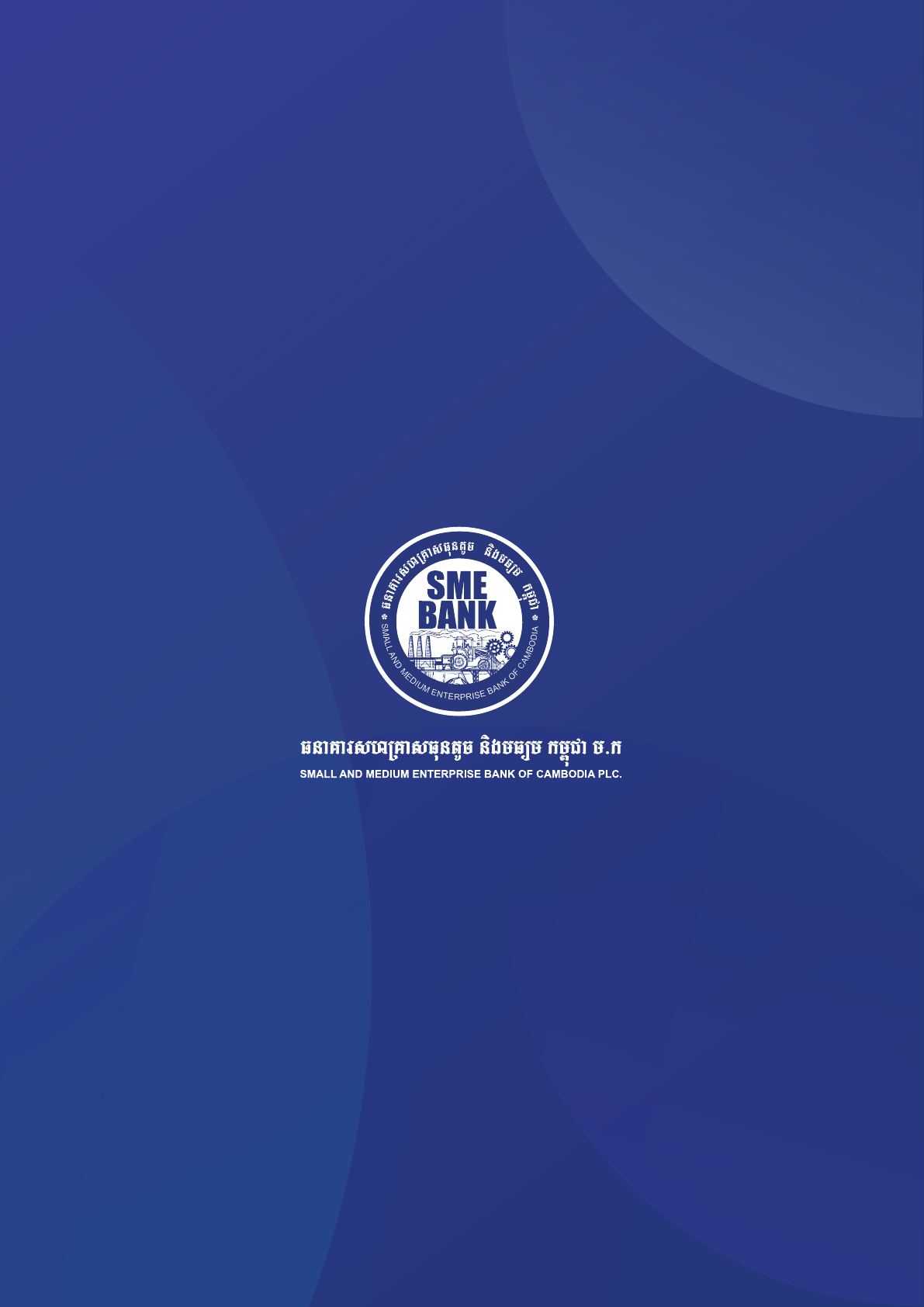
ANNUAL REPORT
2022
